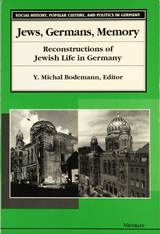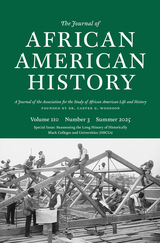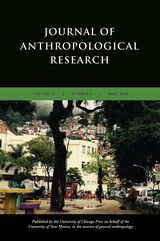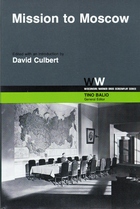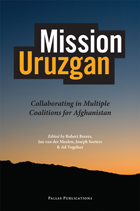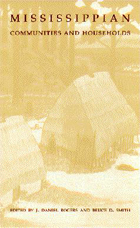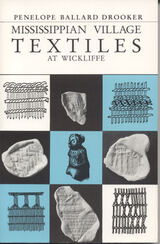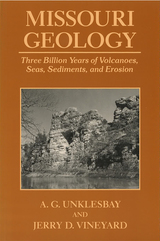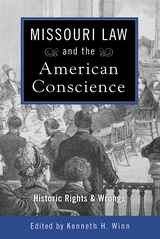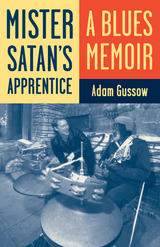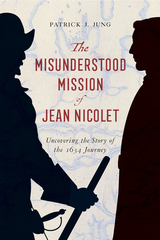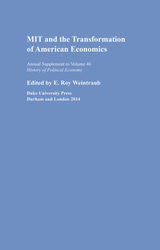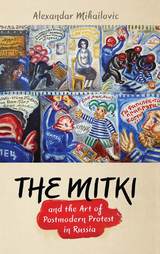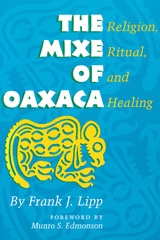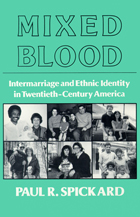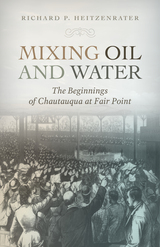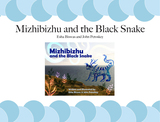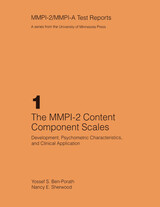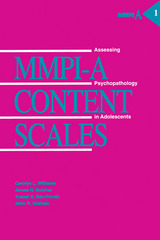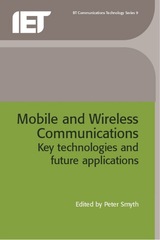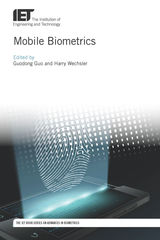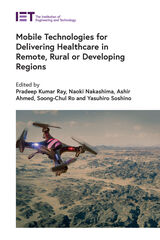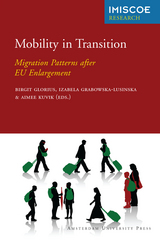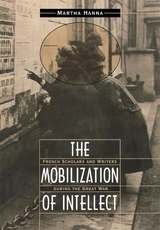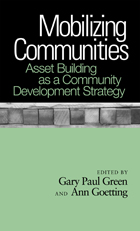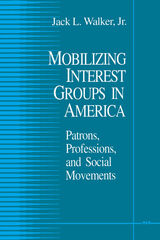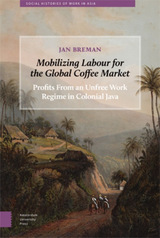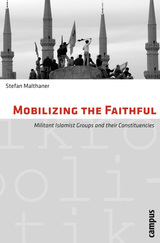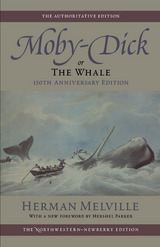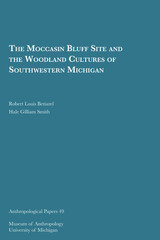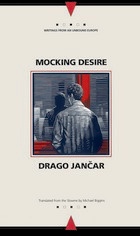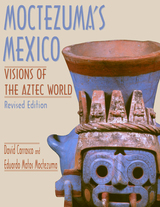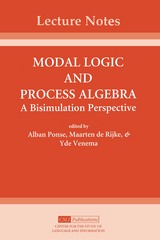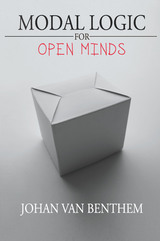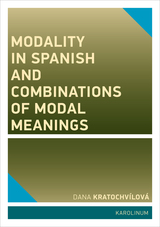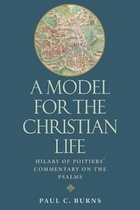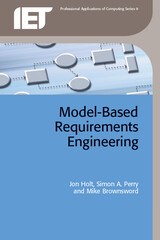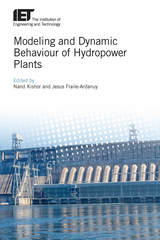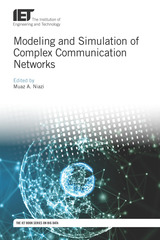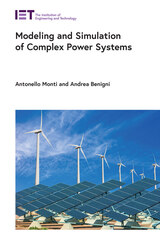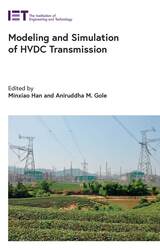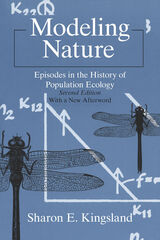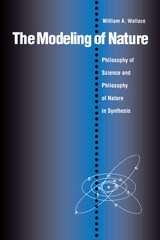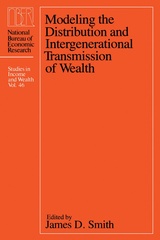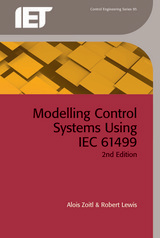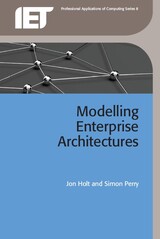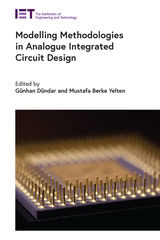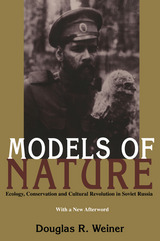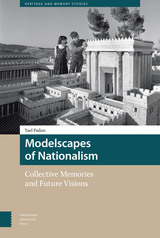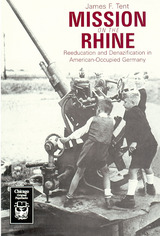 Mission on the Rhine: "Reeducation" and Denazification in American-Occupied Germany
James F. Tent
University of Chicago Press, 1982 German society underwent greater change under the four years of military occupation than it had under Hitler and the Nazis. The issue of reeducation lay at the heart of America's occupation policies. Encompassing denazification, restructuring of the school system, university reform, and cultural exchange, reeducation began as an idealistic (and naive) attempt to democratize Germany by making her over in the American image.
For this meticulously researched study, James F. Tent has drawn on a wealth of recently declassified documents and on numerous personal interviews with veterans of the Occupation. He brings to life not only the dilemmas American officials faced in balancing the need for a political purge against the need to rehabilitate a disrupted society but also the paradoxes involved in a democracy's attempt to impose its ideals on another people. His book chronicles the dedicated work of many Americans; it also illuminates America's Occupation experience as a whole.
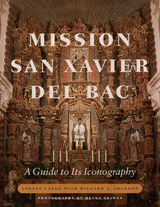 Mission San Xavier del Bac: A Guide to Its Iconography
Yvonne Lange with Richard E. Ahlborn; Photographs by Helga Teiwes
University of Arizona Press, 2004 Unique among mission churches of the northern borderlands of colonial Mexico for its ornate architecture and rich iconography, San Xavier del Bac south of Tucson is a pilgrimage destination for countless devotees and tourists. Passing through the façade entry to stand in the nave, one is dazzled by the transept and sanctuary altarpieces of sculpture niches and baroque pilasters, as well as the expanse of the frescoed ceiling.
This book is the first study of the iconography at San Xavier since its restoration in the 1990s by an international team of professional conservators. It expands our understanding of the numerous Catholic images and emblems of San Xavier through a close analysis of the newly revealed iconographic elements and an interpretation of the significance of their placement. It also proposes that the selection of specific religious themes and their locations was determined by an unfamiliar convention based on a tree-like design, in which the founder of a religious Order appears as the root and followers above in later branchings—an inversion of the more familiar top-to-bottom hierarchy.
Historians Lange and Ahlborn identify all the saintly images and religious elements that adorn San Xavier and suggest how and why they are so arranged. They examine the sculptures and paintings of the church from the façade throughout the cruciform interior in order to determine the organizational concepts that underlie their placement. They note that the selection of images in this Franciscan mission follows traditional Roman Catholic practice for decorating churches in order to instruct novices and reinforce the teaching of conversion in a pictographic catechism of Church doctrine. In short, the book is a dictionary of religious personages and symbols that will help the visitor identify the biblical stories and people portrayed, as well as associated signs and symbols. Entries include a description of the subject, its location, appropriate cross-references, and a bibliography. Recent illustrations by photographer Helga Teiwes and a floor plan facilitate the location of images by visitors.
A handsome, large-format book featuring more than one hundred photographs and supporting line illustrations, Lange and Ahlborn’s work confirms the significance of San Xavier’s iconography for art historians, students of religion, and visitors alike. It is both an incomparable guide and valuable reference source for the famed mission’s magnificent artistic heritage.
Mission to Moscow
Edited by David Culbert; Tino T. Balio, Series Editor
University of Wisconsin Press, 1980 Mission to Moscow is a notorious classic among propaganda films produced in the United States. Never has another feature film been made with such explicit direction from the federal government, although the result failed to persuade every viewer.
 Mission Unaccomplished: American War Films in the Twenty-First Century
Alan Nadel
University of Texas Press, 2025 An analysis of how post-9/11 war movies changed from following soldiers on specific missions to chronicling war as a day-to-day occupation. In 2003, the United States began a war in Iraq without a mission. Instead of fighting to restore peace—the traditional objective of warfare—servicemembers faced the grim reality that there was no goal. Lacking even certainty as to who was the enemy, soldiers discovered that their task was simply to survive. Mission Unaccomplished explores how Hollywood grasped the experience of Iraq from the perspective of US soldiers, reinventing the war film in the process. Historically, films such as Saving Private Ryan valorized the goals of war by chronicling missions that unambiguously contribute to the defeat of the enemy and the restoration of peace. But in The Hurt Locker, American Sniper, Green Zone, and other recent dramas, soldiers just try to outlast the chaos. Dramatizing the aimlessness of the war, events occur in random order, and soldiers have no sense of how their actions contribute to victory or peace. Looking to recent WWII movies such as Dunkirk and Hacksaw Ridge, which use this same cinematic vocabulary to position soldiering as merely a deadly job to be endured, Alan Nadel argues that the disillusionment of Iraq has influenced cinema broadly, inspiring a newly critical war film genre.
Mission Underway: The History of the Popular Culture Association/American Culture Association and the Popular Culture Movement 1967–2001
Edited, Revised, and Updated by Ray B. Browne
University of Wisconsin Press, 2002 The history of the study of popular culture in American academic since its (re)introduction in 1967 is filled with misunderstanding and opposition. From the first, proponents of the study of this major portion of american culture made clear that they were interested in making popular culture a supplement to the usual courses in such fields as literature, sociology, history, philosophy, and the other humanities and social sciences; nobody proposed that study of popular culture replace the other disciplines, but many suggested that it was time to reexamine the accepted courses and see if they were still viable. Opposition to the status quo always causes anxiety and oppostion, but when the issues are clarified, often oppoosition and anxiety melt away, as they are now doing.
Mission Uruzgan: Collaborating in Multiple Coalitions for Afghanistan
Edited by Robert Beeres, Jan van der Meulen, Joseph Soeters, and Ad Vogelaar
Amsterdam University Press, 2012
Mission Uruzgan provides on-site testimony of the Dutch military mission in Uruzgan, Afghanistan from 2001 to the present day. Proffering fresh data and probing analyses, this extensive examination of a controversial deployment addresses a variety of crucial issues related to Dutch involvement in Afghanistan, from the politicking that led up to the utilization of military tactics to the rules of engagement on the ground. This collection brings together an assortment of learned scholars to deliver a wide range of insights into the problems faced by Dutch soldiers.
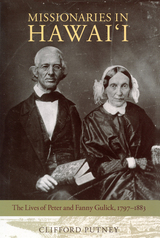 Missionaries in Hawai'i: The Lives of Peter and Fanny Gulick, 1797-1883
Clifford Putney
University of Massachusetts Press, 2010 Ever since Protestant missionaries from the United States first reached Hawai'i in 1820, they have inspired conflicting passions. In evangelical circles, the missionaries are praised for christianizing Hawai'i, transforming Hawaiian into a written language, and inoculating the islanders against smallpox. But this celebratory assessment is rejected by modern-day Hawaiian nationalists, who excoriate the missionaries as advance agents of U.S. imperialism.
In this biography of pioneer missionaries Peter and Fanny Gulick, Clifford Putney offers a balanced view of their contributions. He says the nationalists are right to credit the missionaries with drawing Hawai'i into America's political orbit, but argues that the missionary enterprise helped in some ways to preserve key elements of Hawaiian culture.
Based primarily on letters, journals, and other archival materials, Putney's book provides readers with a detailed portrait of the lives of Peter and Fanny Gulick. Inspired by America's Second Great Awakening to spread the Gospel overseas, the Gulicks voyaged to Hawai'i in 1828 and lived there for the next forty-six years, actively proselytizing and working to change the islands. On Kaua'i, they helped to ensure the success of Hawai'i's first sugar plantation and acquainted Hawaiians with inventions such as the wagon. On Moloka'i (later the site of a leper colony) the couple struggled merely to survive. And on O'ahu, they took up ranching and helped to found Punahou School, the alma mater of President Barack Obama.
While laboring in Hawai'i, the Gulicks interacted with kings, queens, and other historically important figures, and Putney chronicles those relationships. He also explores issues of race and gender, and sheds new light on the democratization of government, the spread of capitalism, and the privatization of land. From these last two developments, a number of missionaries grew immensely rich, but the Gulicks did not, and neither did their descendants. A group that includes influential missionaries, educators, and physical fitness experts, the descendants of Peter and Fanny have had numerous books written about them, but Putney is the first to write extensively about the progenitors of the Gulick clan.
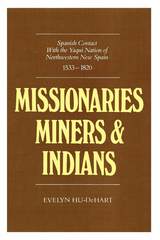 Missionaries, Miners, and Indians: Spanish Contact with the Yaqui Nation of Northwestern New Spain, 1533–1820
Evelyn Hu-DeHart
University of Arizona Press, 1981 The Yaqui Indians managed to avoid assimilation during the Spanish colonization of Mexico. Even when mining interests sought to wrest Yaqui labor from the control of the Jesuits who had organized Indian society into an agricultural system, the Yaqui themselves sought primarily to ensure their continuing existence as a people.
More than a tale of Yaqui Indian resistance, Missionaries, Miners, and Indians documents the history of the Jesuit missions during a period of encroaching secularization. The Yaqui rebellion of 1740, analyzed here in detail, enabled the Yaqui to work for the mines without repudiating the missions; however, the erosion of the mission system ultimately led to the Jesuits’ expulsion from New Spain in 1767, and through their own perseverance, the Yaqui were able to bring their culture intact into the nineteenth century.
 Missionaries of Revolution: Soviet Advisers and Nationalist China, 1920–1927
C. Martin Wilbur and Julie Lien-ying How
Harvard University Press, 1989 During the 1920s the Soviet Union made a determined effort to stimulate revolution in China, sending several scores of military and political advisers there, as well as arms and money to influence political developments. This was revolutionary Russia’s first large-scale intervention in the affairs of a foreign country and, although it ended in failure, the story of these missionaries of revolution—sojourners in a bewildering environment, ultimately disillusioned—constitutes an engrossing chapter, authoritatively told, on this little-known enterprise.
The usual secrecy surrounding Soviet foreign intervention was broken when the Chinese government seized a mass of documents in a raid on the Soviet military headquarters in Peking in 1927, thus revealing the details of Russia’s first extensive effort to promote revolution abroad. Missionaries of Revolution weaves together information gleaned from the secret documents—instructions, reports, minutes, letters, resolutions—with contemporary historical materials.
The author reveals the human side—the dangers, frustrations, illnesses, and bafflements faced by the Russian men and women working for Lenin and Stalin in China, based upon diaries, letters, and reminiscences of participants. Those who study and know the period will find a wealth of illuminating detail based on the meticulous use of Chinese and Russian sources and decades of careful historical research. Those who do not will be introduced to an exciting aspect of Chinese, Soviet, and revolutionary history.
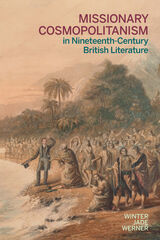 Missionary Cosmopolitanism in Nineteenth-Century British Literature
Winter Jade Werner
Ohio State University Press, 2020 Missionary Cosmopolitanism in Nineteenth-Century British Literature explores the notion that missionaries, often perceived as only evangelically motivated in the British imperial project, were also spurred on by cosmopolitan ideals. Winter Jade Werner makes this surprising connection in order to write against standard understandings of missionary work as well as typical understandings of cosmopolitanism as a deeply secular project.
Missionary Cosmopolitanism identifies the nineteenth-century novel as thematically and formally attuned to the tension between missionaries’ cosmopolitan values and the moral impoverishment of their imperialist and expansionist practices. Werner’s chapters interact with canonical works such as Charlotte Brontë’s Jane Eyre and Charles Dickens’s Bleak House, along with lesser-known works by Robert Southey and Sydney Owenson. Ultimately, Missionary Cosmopolitanism demonstrates that nineteenth-century literature both illustrated and helped define missionary discourses regarding cosmopolitan ideas, showing how global evangelicalism continues to tap into the “new cosmopolitanisms” of today.
Missionary Enchantment in South Asia, 16th-18th Centuries: Catholic Histories and Fictions
Ines G. Zupanov
Amsterdam University Press, 2025 Max Weber’s classical notion of enchantment serves in this book to highlight the clash and rewiring of ethical and cosmological codes in European and Indian early modern cultural encounters from the 16th century onward. Since Portuguese imperialism was unable to justify itself without invoking otherworldly intervention, Catholic missionaries provided the vocabulary and narrative of global salvation. Each chapter in this volume explores a range of enchantment techniques used by missionaries, encompassing historical prose, poetry, images, and translations, woven through with emotions and wrapped in illocutionary force. Catholic missionaries in India wrote from and about the soft belly of tropical colonialism with certainty about the triumph of Christianity. Understanding the subterranean bond between history and fiction is at the heart of this book.
 The Missionary Enterprise in China and America
John King Fairbank
Harvard University Press, 1974 For more than a century missionaries were the main contact points between the Chinese and American peoples. Often frustrated in saving Chinese souls, they nevertheless founded hospitals and colleges, and meanwhile on the American scene they helped form the image of China.
This volume offers views of missionary roles in the United States and in China. Early American Protestant missions moved on from the Near East to the Far East. The second great surge of American missionary expansion in the 1880s was signaled by the formation of more business-like mission boards, by the Student Volunteer Movement to recruit liberal arts college graduates for evangelism abroad, and by the Layman's Movement to back them up. During the same period in China, missionary journalism was reaching a new Chinese-Christian community, and missionary educational and medical work was building modern institutions of social value for Chinese communities. A few "Christian reformers" emerged in China's treaty ports, and by the end of the century there was a missionary contribution to the reform movement in general.
By the 1920s missionary and Chinese Christian educators were collaborating in Christian colleges like Yenching University, only to meet eventual disaster as the Nationalist revolution and Japan's invasion precipitated the great Chinese Communist-led revolution of the 1940s and after. American missions contributed fundamentally both to the revolutionary changes in China and to the American public response to them, although their impact on American policy s less clear.
Fourteen contributors studying both sides of the missionary effort, in China and in America, present case studies that suggest conclusions and themes for research.
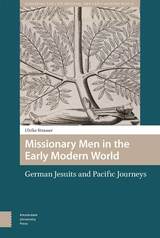 Missionary Men in the Early Modern World: German Jesuits and Pacific Journeys
Ulrike Strasser
Amsterdam University Press, 2021 How did gender shape the expanding Jesuit enterprise in the early modern world? What did it take to become a missionary man? And how did missionary masculinity align itself with the European colonial project? This book highlights the central importance of male affective ties and masculine mimesis in the formation of the Jesuit missions, as well as the significance of patriarchal dynamics. Focusing on previously neglected German actors, Strasser shows how stories of exemplary male behavior circulated across national boundaries, directing the hearts and feet of men throughout Europe toward Jesuit missions in faraway lands. The sixteenth-century Iberian exemplars of Ignatius of Loyola and Francis Xavier, disseminated in print and visual media, inspired late-seventeenth-century Jesuits from German-speaking lands to bring Catholicism and European gender norms to the Spanish-controlled Pacific. The age of global missions hinged on the reproduction of missionary manhood in print and real life.
 The Missionary Mind and American East Asia Policy, 1911–1915
James Reed
Harvard University Press, 1983 At a telling moment in the development of American East Asia policy, the dream of a Christian China, made vivid by the utterances of returned missionaries, fired the imagination of the general public, influenced opinion leaders and policymakers, and furthered the Open Door doctrine. Missionary-inspired enthusiasm for China ran parallel to the different attitude of the American business community, which viewed Japan as the more appropriate focus of American interest in East Asia.
During the five years here examined, the religious mentality proved stronger than the commercial mentality in influencing American policy toward the Chinese Republican Revolution and the Twenty-One Demands of 1915. James Reed’s treatment of the struggle between William Jennings Bryan and Robert Lansing over the Japanese demands in China is detailed and penetrating.
This book builds on the work of Akira Iriye, Michael Hunt, Ernest May, and others in its analysis of cultural attitudes, business affairs, and the mindset of the foreign policy elites. Its thesis—that the Protestant missionary movement profoundly shaped the course of our historical relations with East Asia—will interest both specialists and general readers.
 Missionary Scientists: Jesuit Science in Spanish South America, 1570-1810
Andres I. Prieto
Vanderbilt University Press, 2011 Missionary Scientists explores the scientific activities of Jesuit missionaries in colonial Spanish America, revealing a little-known aspect of religions role in the scholarship of the early Spanish Empire. Grounded in an examination of the writings and individuals authors who were active in South American naturalist studies, this study outlines new paths of research often neglected by current scholarship. What becomes clear throughout Missionary Scientists is that early missionaries were adept in adapting to local practices, in order to both understand the scientific foundations of these techniques and ingratiate themselves to the native communities. Spanning the disciplines of history, religion, and Latin American studies, Missionary Scientists reshapes our understanding of the importance of the Jesuit missions in establishing early scientific traditions in the New World.
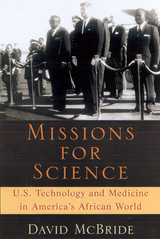 Missions for Science: U.S. Technology and Medicine in America's African World
McBride, David
Rutgers University Press, 2002 Missions for Science traces the development and transfer of technology in four Atlantic regions with populations of predominantly African ancestry: the southern United States, the Panama Canal Zone, Haiti, and Liberia. David McBride explores how the pursuit of the scientific ideal, and the technical and medical outgrowths of this pursuit, have shaped African diaspora populations in these areas, asking:
--What specific technologies and medical resources were transferred by U.S. institutions to black populations centers and why?
--How did the professed aims of U.S. technical projects, public health, and military activities differ from their actual effects and consequences?
--Did the U.S. technical transfer amount to a form of political hegemony?
--What lessons can we learn from the history of technology and medicine in these key geographic regions?
Missions for Science is the first book to explain how modern industrial and scientific advances shaped black Atlantic population centers. McBride is the first to provide a historical analysis of how shifting environmental factors and disease-control aid from the United States affected the collective development of these populations. He also discusses how independent black Atlantic republics with close historical links to the United States independently envisioned and attempted to use science and technology to build their nations.
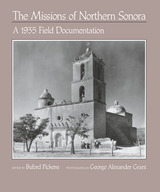 The Missions of Northern Sonora: A 1935 Field Documentation
Buford L. Pickens
University of Arizona Press, 1993 The Spanish missions founded by Padre Eusebio Kino in Sonora, Mexico, during the 1690s and early 1700s are historical as well as architectural marvels. Once self-supporting villages with central churches, the missions stand today as monuments to perseverance in the face of a hostile New World.
These "Kino Missions" were surveyed in 1935 by the National Park Service to prepare for the restoration of the mission at Tumacacori, Arizona, then a National Historic Monument. That report, which was never published, provided insights into the missions' history and architecture that remain of lasting relevance. Perhaps more important, it documented these structures in photographs and drawings—the latter including floor plans and sketches of architectural detail—that today are of historic as well as aesthetic interest.
This volume reproduces that 1935 report in its entirety, focusing on sixteen missions and including two maps, 52 drawings, and 76 photographs. With a new introduction and appendixes that place the original study in context, The Missions of Northern Sonora is an invaluable reference for scholars and mission visitors alike.
 The Mississippi Kite: Portrait of a Southern Hawk
By Eric Bolen and Dan Flores
University of Texas Press, 1993 Floating on air currents over rural countryside and open city spaces, the Mississippi Kite presents a familiar sight to many people across the southern United States, although this graceful hawk is not well known by name. This engaging natural history, illustrated with superb color photographs, provides all a bird watcher needs to become acquainted with the kite, its life cycle, and its fascinating history with humans. Under various folk names, including Blue Darter, Grasshopper Hawk, and Mosquito Hawk, the Mississippi Kite ranges throughout the southern United States from the coasts of the Carolinas to the plains of the Southwest. The authors describe all aspects of the kite's life cycle, from breeding and nesting, raising young, and hunting and feeding to the kite's annual winter migration to South America. They also trace its intriguing relationship with humans, from its discovery by Europeans in the nineteenth century to the present day. For bird lovers and ornithologists alike, The Mississippi Kite will be an essential introduction to a bird well worth knowing. A special section on conservation and a selection of references for further reading complement the text.
Mississippian Communities and Households
Edited by J. Daniel Rogers and Bruce D. Smith
University of Alabama Press, 1995 During the Mississippian period (approximately A.D. 1000-1600) in the midwestern and southeastern United States a variety of greater and lesser chiefdoms took shape. Archaeologists have for many years explored the nature of these chiefdoms from the perspective common in archaeological investigations—from the top down, investigating ceremonial elite mound structures and predicting the basic domestic unit from that data. Because of the increased number of field investigations at the community level in recent years, this volume is able to move the scale of investigation down to the level of community and household, and it contributes to major revisions of settlement hierarchy concepts.
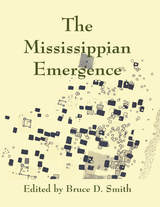 The Mississippian Emergence
Bruce D. Smith
University of Alabama Press, 2007 This collection, addressing a topic of ongoing interest and debate in American archaeology, examines the evolution of ranked chiefdoms in the Midwestern and Southeastern United States during the period A.D. 700–1200. The volume brings together a broad range of professionals engaged in the fieldwork that has vitalized the theoretical debates on the development of Mississippi Valley cultures. The initial chapter provides a general discussion of various explanations for the rise of these distinctive ranked societies in the eastern United States (A.D. 750-1050) and sets the stage for the interdisciplinary analysis from multiple viewpoints that follows. The first section discusses a cluster of individual sites in the Midwest and Southeast and reveals the parallel—and occasionally divergent—paths followed by the inhabitants as they transitioned from Late Woodland into Mississippian lifeways. The chapters in the second half discuss by region the emergence of ranked agricultural societies and examine how these networks played a role in the large-scale and roughly contemporaneous socio-political development. Contributors: C. Clifford Boyd Jr. James A. Brown R. P. Stephen Davis Jr. John House John E. Kelly Richard A. Kerber Dan F. Morse Phyllis Morse Martha Ann Rolingson Gerald F. Schroedl Bruce D. Smith Paul D. Welch Howard D. Winters
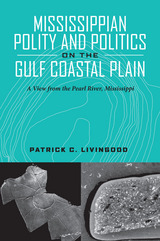 Mississippian Polity and Politics on the Gulf Coastal Plain: A View from the Pearl River, Mississippi
Patrick Livingood
University of Alabama Press, 2011 The definition of the regional limits of chiefly influence during the Mississippian period in the southeastern United States remains unresolved. In the Gulf Coastal Plain between the Mississippi and Black Warrior rivers, some studies have explored the role that interpolity interactions played in influencing a polity’s social and political complexity through time. It has been argued that the larger, more complex polities were able to preempt the development of more complex political structures among the smaller polities. Using research at the Pevey (22Lw510) and Lowe-Steen (22Lw511) mound sites on the Pearl River in Lawrence County, Mississippi, this book explores the social and political mechanisms by which these polities may have interacted with each other and the geographic limit to the effects of inter-polity competition. The Pevey site is a nine-mound Mississippian site and Lowe-Steen is a two-mound site located 18 kilometers to the north of Pevey. These sites provide a “missing link” of sorts to explore questions about inter-polity interactions because of their centrality to the study region and their unusual size. By filling a void in the regional dataset, this study allows us to better understand the capacity of the largest polities to negatively effect the political development of their smaller neighbors.
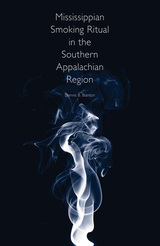 Mississippian Smoking Ritual in the Southern Appalachian Region
Dennis B. Blanton
University of Tennessee Press, 2015 North American Indians cultivated tobacco beginning in prehistory, often through great effort and for multiple reasons. Especially valued for its narcotic effects, however, tobacco was assigned sacred status and became a necessary component for any event with cultural or religious significance. As such, ritualistic tobacco use joined cult usage of other plants as Native American societies evolved throughout the Mississippian time period.
In Mississippian Smoking Ritual in the Southern Appalachian Region, Dennis B. Blanton surveys smoking pipes found at archaeological sites throughout southern Appalachia and neighboring areas to present a holistic picture of Native American smoking rituals in the region. While tobacco could also be eaten or infused into tea, native peoples traditionally dried the leaves and smoked them in increasingly ornate pipes. The ritual importance of tobacco translated into a similar status for smoking pipes. Mississippian pipe traditions varied throughout the region but in accordance with distinctive cultural patterns. Blanton’s research ties pipe usage and pipe-smoking traditions to particular pipe forms, and sometimes to specific sites, and in doing so, he further informs our knowledge of the complexities of Mississippian societies and their myriad ceremonial rituals.
Mississippian Smoking Ritual in the Southern Appalachian Region is an especially useful text for understanding ritual behavior and its patterns of change over time. The historical trajectory of tobacco begins with adherence to a longstanding smoking tradition but evolves into a complex ceremonial practice with equally complex forms of tobacco pipes. This regional study demonstrates how smoking rituals changed as broader cultural shifts redefined the Mississippian Era, bringing archaeologists closer to answering the elusive macro question of why rituals evolved within Native American cultures.
Dennis B. Blanton is an assistant professor of anthropology at James Madison University in Virginia. He is coauthor, with Wes Patterson, Jeffrey B. Glover, and Frankie Snow, of Point of Contact: Archaeological Evaluation of a Potential De Soto Encampment in Georgia. He is also coeditor, with Robert A. DeVillar, of Archaeological Encounters with Georgia’s Spanish Period, 1526–1700: New Findings and Perspectives, and, with Julia A. King, of Indian and European Contact in Context: The Middle Atlantic Region.
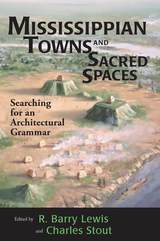 Mississippian Towns and Sacred Spaces: Searching for an Architectural Grammar
Edited by R. Barry Lewis and Charles Stout
University of Alabama Press, 1998 Archaeologists and architects draw upon theoretical perspectives from their fields to provide valuable insights into the structure, development, and meaning of prehistoric communities. Architecture is the most visible physical manifestation of human culture. The built environment envelops our lives and projects our distinctive regional and ethnic identities to the world around us. Archaeology and architecture find common theoretical ground in their perspectives of the homes, spaces, and communities that people create for themselves. Although archaeologists and architects may ask different questions and apply different methods, the results are the same—a deeper understanding of what it means to be human. In this volume, prominent archaeologists examine the architectural design spaces of Mississippian towns and mound centers of the eastern United States. The diverse Mississippian societies, which existed between A.D. 900 and 1700, created some of the largest and most complex Native American archaeological sites in the United States. The dominant architectural feature shared by these communities was one or more large plazas, each of which was often flanked by buildings set on platform mounds. The authors describe the major dimensions of an architectural grammar, centered on the design of the plaza and mound complex that was shared by different societies across the Mississippian world. They then explore these shared architectural features as physical representations or metaphors for Mississippian world views and culture.
Mississippian Village Textiles at Wickliffe
Penelope Ballard Drooker
University of Alabama Press, 1992 Because textiles rarely are preserved in the archaeological record outside of deserts and permafrost areas, in many regions of the world very little is known about their characteristics, functions, production technology, or socioeconomic importance. While this fact is also true of organic fabrics produced during the Mississippian period in southeastern North Anerica, a wide variety of Mississippian textiles has been preserved in the form of impressions on large pottery vessels. From attribute analysis of 1,574 fabrics impressed on Wickliffe pottery sherds and comparison of the impressions with extant Mississippian textile artifacts, Drooker presents the first comparative analysis of these materials and the most inclusive available summary of information on Mississippian textiles.
 Missouri at Sea: Warships with Show-Me State Names
Richard E. Schroeder
University of Missouri Press, 2004 Although the state of Missouri is located hundreds of miles from the nearest ocean, ships with Missouri names and connections have served the United States for decades. In Missouri at Sea, Richard Schroeder tells about the ships that were named after the state, its cities, and its favorite sons and explores the important role that each has played in American history.
For each vessel, a brief history is supplied, and the book is illustrated with many extraordinary images and photographs taken from official U.S. government records and archives. Schroeder begins his volume with the first St. Louis and other small early ships that were symbolic of America’s modest nineteenth-century commercial and political ambitions. The first Missouri, one of the earliest American steamships, depicts the United States’ move into the industrial and technological revolution of the nineteenth century.
Another Federal St. Louis and a Confederate Missouri highlight the Mississippi River Civil War campaign. Schroeder then turns to America’s rise as a global military power at the beginning of the twentieth century with stories of the St. Louis in the Spanish-American War and the first battleship Missouri of Teddy Roosevelt’s Great White Fleet. The dominance of the U.S. Navy during World War II in the Pacific theater is illustrated by the fourth and most famous of all the ships to bear the name Missouri, whose deck was the site for the Japanese surrender.
The advanced technological achievements of the mid-twentieth century are represented by the nuclear submarines named for one of Missouri’s favorite sons and for its capital: Daniel Boone and Jefferson City. Also highlighted in the volume is the 5,000-crew nuclear aircraft carrier Harry S. Truman, along with smaller ships named for Missouri war heroes. Missouri at Sea will appeal to those readers interested in naval history and technology or Missouri history.
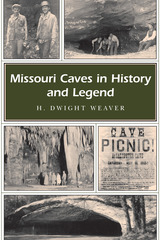 Missouri Caves in History and Legend
H. Dwight Weaver
University of Missouri Press, 2007 Missouri has been likened to a “cave factory” because its limestone bedrock can be slowly dissolved by groundwater to form caverns, and the state boasts more than six thousand caves in an unbelievable variety of sizes, lengths, and shapes. Dwight Weaver has been fascinated by Missouri’s caves since boyhood and now distills a lifetime of exploration and research in a book that will equally fascinate readers of all ages. Missouri Caves in History and Legend records a cultural heritage stretching from the end of the ice age to the twenty-first century. In a grand tour of the state’s darkest places, Weaver takes readers deep underground to shed light on the historical significance of caves, correct misinformation about them, and describe the ways in which people have used and abused these resources. Weaver tells how these underground places have enriched our knowledge of extinct animals and early Native Americans. He explores the early uses of caves: for the mining of saltpeter, onyx, and guano; as sources of water; for cold storage; and as livestock shelters. And he tells how caves were used for burial sites and moonshine stills, as hideouts for Civil War soldiers and outlaws—revealing how Jesse James became associated with Missouri caves—and even as venues for underground dance parties in the late nineteenth century. Bringing caves into the modern era, Weaver relates the history of Missouri’s “show caves” over a hundred years—from the opening of Mark Twain Cave in 1886 to that of Onyx Mountain Caverns in 1990—and tells of the men and women who played a major role in expanding the state’s tourism industry. He also tracks the hunt for the buried treasure and uranium ore that have captivated cave explorers, documents the emergence of organized caving, and explains how caves now play a role in wildlife management by providing a sanctuary for endangered bats and other creatures. Included in the book is an overview of cave resources in twelve regions, covering all the counties that currently have recorded caves, as well as a superb selection of photos from the author’s extensive collection, depicting the history and natural features of these underground wonders. Missouri Caves in History and Legend is a riveting account that marks an important contribution to the state’s heritage and brings this world of darkness into the light of day.
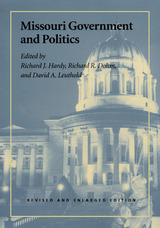 Missouri Government and Politics: Revised and Enlarged Edition
Edited by Richard J. Hardy, Richard R. Dohm, & David A. Leuthold
University of Missouri Press, 1995 Since the publication of the first edition in 1985, Missouri Government and Politics has been widely acclaimed as an outstanding text. This revised and enlarged edition updates all of the chapters to reflect the changes that have occurred in the state's government during the last decade. Five new chapters have been added on topics previously unaddressed: economic development, energy, and the environment; state policy making in higher education; funding for education in the 1990s; the statewide elected executive officials; and the types of law in Missouri. The twenty-six chapters are grouped into four main categories: "The Context of Missouri Politics," "State Governmental Framework," "Policies and Policy Making in Missouri," and "Local Government and Politics in Missouri." Helpful additions to the basic text include more than fifty tables and figures, a glossary giving clear definitions of many governmental terms, and a bibliography on Missouri politics and government. The authors have become experts about Missouri by serving as teachers and researchers in Missouri colleges and universities, as candidates and workers in Missouri political campaigns, and as officeholders and public administrators in Missouri state government. Their collective experience in Missouri politics ensures that this new edition provides the most thorough and comprehensive overview of the structure and inner workings of Missouri's political system.
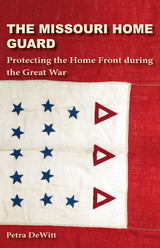 The Missouri Home Guard: Protecting the Home Front during the Great War
Petra DeWitt
University of Missouri Press, 2022 Missouri was one of many states that established a defense organization to take over the duties of the National Guard that had been federalized for military service when the United States declared war on Germany in 1917. The tasks of this volunteer Home Guard included traditional National Guard responsibilities such as providing introductory military training for draftable men, protecting crucial infrastructure from potential enemy activities, and maintaining law and order during labor activism.
The Home Guard also functioned to preserve patriotism and reduce opposition to the war. Service in the Guard was a way to show loyalty to one’s country, particularly for German Americans, who were frequently under suspicion as untrustworthy. Many German Americans in Missouri enthusiastically signed up to dispel any whispers of treason, while others found themselves torn between the motherland and their new homeland. Men too old or exempt from the draft for other reasons found meaning in helping with the war effort through the Home Guard while also garnering respect from the community. For similar reasons, women attempted to join the organization as did African Americans, some of whom formed units of a “Negro Home Guard.” Informed by the dynamics of race, gender, and ethnicity, DeWitt’s consideration of this understudied but important organization examines the fluctuating definition of patriotism and the very real question of who did and who did not have the privilege of citizenship and acceptance in society.
Missouri Law and the American Conscience: Historical Rights and Wrongs
Edited by Kenneth H. Winn
University of Missouri Press, 2016 Until recently, many of Missouri’s legal records were inaccessible and the existence of many influential, historic cases was unknown. The ten essays in this volume showcase Missouri as both maker and microcosm of American history. Some of the topics are famous: Dred Scott’s slave freedom suit, Virginia Minor’s women’s suffrage case, Curt Flood’s suit against professional baseball, and the Nancy Cruzan “right to die” case. Other essays cover court cases concerning the uneasy incorporation of ethnic and cultural populations into the United States; political loyalty tests during the Civil War; the alleviation of cruelty to poor and criminally institutionalized children; the barring of women to serve on juries decades after they could vote; and the creation of the “Missouri Court Plan,” a national model for judicial selection.
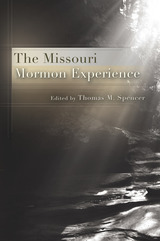 The Missouri Mormon Experience
Edited by Thomas M. Spencer
University of Missouri Press, 2010 The Mormon presence in nineteenth-century Missouri was uneasy at best and at times flared into violence fed by misunderstanding and suspicion. By the end of 1838, blood was shed, and Governor Lilburn Boggs ordered that Mormons were to be “exterminated or driven from the state.” The Missouri persecutions greatly shaped Mormon faith and culture; this book reexamines Mormon-Missourian history within the sociocultural context of its time. The contributors to this volume unearth the challenges and assumptions on both sides of the conflict, as well as the cultural baggage that dictated how their actions and responses played on each other. Shortly after Joseph Smith proclaimed Jackson County the site of the “New Jerusalem,” Mormon settlers began moving to western Missouri, and by 1833 they made up a third of the county’s population. Mormons and Missourians did not mix well. The new settlers were relocated to Caldwell County, but tensions still escalated, leading to the three-month “Mormon War” in 1838—capped by the Haun’s Mill Massacre, now a seminal event in Mormon history. These nine essays explain why Missouri had an important place in the theology of 1830s Mormonism and was envisioned as the site of a grand temple. The essays also look at interpretations of the massacre, the response of Columbia’s more moderate citizens to imprisoned church leaders (suggesting that the conflict could have been avoided if Smith had instead chosen Columbia as his new Zion), and Mormon migration through the state over the thirty years following their expulsion. Although few Missourians today are aware of this history, many Mormons continue to be suspicious of the state despite the eventual rescinding of Governor Boggs’s order. By depicting the Missouri-Mormon conflict as the result of a particularly volatile blend of cultural and social causes, this book takes a step toward understanding the motivations behind the conflict and sheds new light on the state of religious tolerance in frontier America.
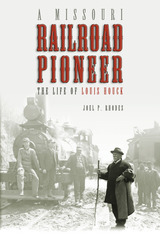 A Missouri Railroad Pioneer: The Life of Louis Houck
Joel P. Rhodes
University of Missouri Press, 2013 Lawyer and journalist, entrepreneur and philanthropist, Louis Houck is often called the “Father of Southeast Missouri” because he brought the railroad to the region and opened this backwater area to industrialization and modernization. Although Houck’s name is little known today outside Missouri, Joel Rhodes shows how his story has relevance for both the state and the nation. Rhodes presents a more complete picture of Houck than has ever been available: reviewing his life from his German immigrant roots, considering his career from both social and political perspectives, and grounding the story in both state and national history. He especially tells how, from 1880 to the 1920s, this self-taught railroader constructed a network of five hundred miles of track through the wilderness of wetlands known as “Swampeast Missouri”—and how these “Houck Roads” provided a boost for population, agriculture, lumbering, and commerce that transformed Cape Girardeau and the surrounding area. Rhodes discusses how Houck fits into the era of economic individualism—a time when men with little formal training shaped modern industry—and also gives voice to Houck’s critics and shows that he was not always an easy man to work with. In telling the story of his railroading enterprise, Rhodes chronicles Houck’s battle with the Jay Gould railroad empire and offers key insight into the development of America’s railway system, from the cutthroat practices of ruthless entrepreneurs to the often-comic ineptness of start-up rail lines. More than simply a biography of a business entrepreneur, the book tells how Houck not only developed the region economically but also followed the lead of Andrew Carnegie by making art, culture, and formal education available to all social classes. Houck also served for thirty-six years as president of the Board of Regents of Southeast Missouri State Teacher’s College, and as a self-taught historian he wrote the first comprehensive accounts of Missouri’s territorial period. A Missouri Railroad Pioneer chronicles a multifaceted career that transformed a region. Solidly researched, this lively narrative also offers an entertaining read for anyone interested in Missouri history.
 The Missouri State Penitentiary: 170 Years inside "The Walls"
Jamie Pamela Rasmussen
University of Missouri Press, 2012 Asked how the Missouri State Penitentiary compared to other famous prisons, a historian and former prison administrator replied, “ It’s older and meaner.” For 168 years, it was everything other prisons were and more.
In TheMissouri State Penitentiary, Jamie Pamela Rasmussen recounts the long and fascinating history of the place, focusing on the stories of inmates and the struggles by prison officials to provide opportunities for reform while keeping costs down. Tales of prominent prisoners, including Pretty Boy Floyd, Sonny Liston, and James Earl Ray, provide intrigue and insight into the institution’s infamous reputation.
The founding of the penitentiary helped solidify Jefferson City’s position as the state capital. A highlight in the chapter on the Civil War years is the story of George Thompson, who was imprisoned for attempting to help a number of slaves to freedom. The narrative enters the twentieth century with the controversy surrounding the various systems of inmate labor; the effort to make the prison self-supporting eventually caused punishment to be driven by factory needs. The example of Firebug Johnson demonstrates how inmates reacted to the prison labor system while Kate Richards O’Hare’s struggles and efforts to improve conditions in the penitentiary illuminate the role of women in the system at the time. A full chapter is devoted to the riot of 1954, and another concentrates on the reforms made in the wake of that catastrophe. Rasmussen also considers the effect inmate lawsuits during the 1980s and 1990s had on prison life before telling the story of the decision to close the prison.
The Missouri State Penitentiary provides a fitting account of an institution that was part of Missouri’s history for well over a century. Numerous illustrations and a list of recommended reading contribute to the readers’ understanding of the history of the institution.
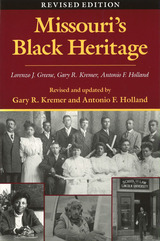 Missouri's Black Heritage, Revised Edition
Gary R. Kremer & Antonio F. Holland & With a Personal Reminiscence by Lorenzo J. Greene
University of Missouri Press, 1993 Originally written in 1980 by the late Lorenzo J. Greene, Gary R. Kremer, and Antonio F. Holland, Missouri's Black Heritage remains the only book-length account of the rich and inspiring history of the state's African American population. It has now been revised and updated by Kremer and Holland, incorporating the latest scholarship into its pages. This edition describes in detail the struggles faced by many courageous African Americans in their efforts to achieve full civil and political rights against the greatest of odds. Documenting the African American experience from the horrors of slavery through present-day victories, the book touches on the lives of people such as John Berry Meachum, a St. Louis slave who purchased his own freedom and then helped countless other slaves gain emancipation; Hiram Young, a Jackson County free black whose manufacturing of wagons for Sante Fe Trail travelers made him a legendary figure; James Milton Turner, who, after rising from slavery to become one of the best-educated blacks in Missouri, worked with the Freedmen's Bureau and the State Department of Education to establish schools for blacks all over the state after the Civil War; and Annie Turnbo Malone, a St. Louis entrepreneur whose business skills made her one of the state's wealthiest African Americans in the early twentieth century. A personal reminiscence by the late Lorenzo J. Greene, a distinguished African American historian whom many regard as one of the fathers of black history, offers a unique view of Missouri's racial history and heritage.
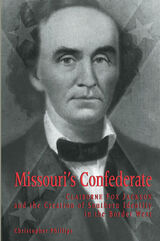 Missouri's Confederate: Claiborne Fox Jackson and the Creation of Southern Identity in the Border West
Christopher Phillips
University of Missouri Press, 2000 Claiborne Fox Jackson (1806-1862) remains one of Missouri's most controversial historical figures. Elected Missouri's governor in 1860 after serving as a state legislator and Democratic party chief, Jackson was the force behind a movement for the neutral state's secession before a federal sortie exiled him from office. Although Jackson's administration was replaced by a temporary government that maintained allegiance to the Union, he led a rump assembly that drafted an ordinance of secession in October 1861 and spearheaded its acceptance by the Confederate Congress. Despite the fact that the majority of the state's populace refused to recognize the act, the Confederacy named Missouri its twelfth state the following month. A year later Jackson died in exile in Arkansas, an apparent footnote to the war that engulfed his region and that consumed him. In this first full-length study of Claiborne Fox Jackson, Christopher Phillips offers much more than a traditional biography. His extensive analysis of Jackson's rise to power through the tangle that was Missouri's antebellum politics and of Jackson's complex actions in pursuit of his state's secession complete the deeper and broader story of regional identity--one that began with a growing defense of the institution of slavery and which crystallized during and after the bitter, internecine struggle in the neutral border state during the American Civil War. Placing slavery within the realm of western democratic expansion rather than of plantation agriculture in border slave states such as Missouri, Philips argues that southern identity in the region was not born, but created. While most rural Missourians were proslavery, their "southernization" transcended such boundaries, with southern identity becoming a means by which residents sought to reestablish local jurisdiction in defiance of federal authority during and after the war. This identification, intrinsically political and thus ideological, centered—and still centers—upon the events surrounding the Civil War, whether in Missouri or elsewhere. By positioning personal and political struggles and triumphs within Missourians' shifting identity and the redefinition of their collective memory, Phillips reveals the complex process by which these once Missouri westerners became and remain Missouri southerners. Missouri's Confederate not only provides a fascinating depiction of Jackson and his world but also offers the most complete scholarly analysis of Missouri's maturing antebellum identity. Anyone with an interest in the Civil War, the American West, or the American South will find this important new biography a powerful contribution to our understanding of nineteenth-century America and the origins—as well as the legacy—of the Civil War.
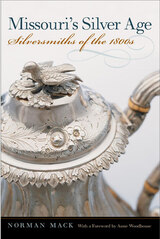 Missouri's Silver Age: Silversmiths of the 1800s
Norman Mack. Foreword by Anne Woodhouse
Southern Illinois University Press, 2005 The result of nearly two decades of intensive research by Norman Mack and his late wife, Beatrice Davidow Mack, Missouri’s Silver Age: Silversmiths of the 1800s is a comprehensive directory of nineteenth-century Missouri silversmiths, their works, and their identifying makers’ marks. Illustrated with over one hundred photographs, this exceptional reference for historians and silver collectors showcases the Macks’ three-hundred-piece collection of Missouri silver, which includes a representative sample by nearly every known Missouri silversmith and is housed at the Missouri Historical Society in St. Louis. Featuring more than a hundred detailed biographies of the artisans and apprentices who created handmade silver in St. Louis and Missouri during the nineteenth century, Missouri’s Silver Age also contains extensive photographs of makers’ touchmarks and of the pieces themselves, which include bowls, dishes, spoons, and ladles, as well as other household utensils and decorative items. Arranged alphabetically, the biographies reveal all known details of the business activities and locations of the silversmiths. Collectively, the entries and the illustrations shed light on the growth of enterprise in Missouri, show the impact of the individual on the developing frontier economies of the Midwest, and reveal how the production, acquisition, and possession of material goods reflected the culture and values of Americans during the 1800s. Mack provides a brief but thorough history of silversmithing in America for novice collectors and historians, detailing the various methods used in making silver and the range of styles that were popular, providing insight into the methods of training apprentices, and explaining the effects of mechanization on the trade. Augmenting this volume are an appendix by Jo Ann Griffin on how to care for old silver, a map of the silversmiths’ primary locations, and a helpful alphabetical appendix of the silversmiths that includes illustrations of their touchmarks.
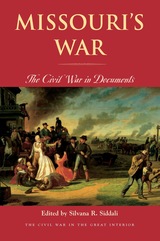 Missouri’s War: The Civil War in Documents
Silvana R. Siddali
Ohio University Press, 2009 Winner of a 2011 “Distinguished Achievement in Literature” award, Missouri Humanities Council Civil War Missouri stood at the crossroads of America. As the most Southern-leaning state in the Middle West, Missouri faced a unique dilemma. The state formed the gateway between east and west, as well as one of the borders between the two contending armies. Moreover, because Missouri was the only slave state in the Great Interior, the conflicts that were tearing the nation apart were also starkly evident within the state. Deep divisions between Southern and Union supporters, as well as guerrilla violence on the western border, created a terrible situation for civilians who lived through the attacks of bushwhackers and Jayhawkers.
The documents collected in Missouri's War reveal what factors motivated Missourians to remain loyal to the Union or to fight for the Confederacy, how they coped with their internal divisions and conflicts, and how they experienced the end of slavery in the state. Private letters, diary entries, song lyrics, official Union and Confederate army reports, newspaper editorials, and sermons illuminate the war within and across Missouri's borders.
Missouri's War also highlights the experience of free and enslaved African Americans before the war, as enlisted Union soldiers, and in their effort to gain rights after the end of the war. Although the collection focuses primarily on the war years, several documents highlight both the national sectional conflict that led to the outbreak of violence and the effort to reunite the conflicting forces in Missouri after the war.
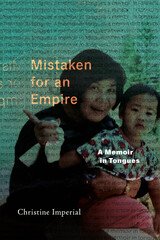 Mistaken for an Empire: A Memoir in Tongues
Christine Imperial
Ohio State University Press, 2023 “As an adult, [Imperial] attempted what no one else had done: translating [‘The White Man’s Burden’] into Tagalog. These efforts led Imperial to reflect on her many (often disorienting) moves between the U.S. and the Philippines as well as the pain that translating the poem, alongside her own fractured experiences, represented.…Kipling’s ‘burden,’ Imperial suggests, is far more nuanced than many believe.…An intriguing and provocative book.”—Kirkus Born in postcolonial Philippines into a family—and country—with a complicated history, Christine Imperial learns from a lifetime of experiences that there is no easy path to understanding or belonging. Setting out to renew her relationship to Tagalog, the language she had previously distanced herself from, she contends with the meaning of her dual Philippine/US citizenship along with the conditions surrounding it, reflecting on imperialist and class systems and the history of her birth country. Beginning with an attempt to translate into Tagalog Rudyard Kipling’s “The White Man’s Burden”—Kipling’s ode to American imperialism after the US takeover of the Philippines—Imperial reflects on and writes against Kipling’s poem as she unspools her fractured family’s story. Reckoning with both the anguish and promise of hybridity, Mistaken for an Empire expands into an exploration of the author’s relationship to English and Tagalog, history, family and state, origin and belonging. By interrogating the many intricacies of individual and national identity and the legacies that shape them, Imperial grapples with the tangled nature of allegiance, whether it be to family, to country, or to self.
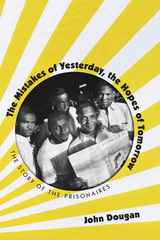 The Mistakes of Yesterday, the Hopes of Tomorrow: The Story of the Prisonaires
John Dougan
University of Massachusetts Press, 2012 Early in the morning on June 1, 1953, five African American men boarded a van to make the 200-mile trip from Nashville to Memphis for a daylong recording session at the legendary Sun Studios, to be overseen by Sun founder Sam Phillips. One of the two tracks cut that day, "Just Walkin' in the Rain," would go on to become a regional R&B hit, Sun Records' biggest record of the pre-Elvis era. It would, however, be the group's only hit. They were the Prisonaires, a vocal quintet who had honed their skills while inmates at the Tennessee State Penitentiary in Nashville.
In this book, John Dougan tells the story of the Prisonaires, their hit single, and the afterlife of this one remarkable song. The group and the song itself represent a compelling concept: imprisoned men using music as a means of cultural and personal survival. The song was re-recorded by white singer Johnnie Ray, who made it a huge hit in 1956. Over the years, other singers and groups would move the song further away from its origins, recasting the deep emotions that came from creating music in a hostile, controlled environment.
The story of the Prisonaires, for all of its triumphs, reflects the disappointment of men caught in a paradoxical search for personal independence while fully cognizant of a future consigned to prison. Their brief career and the unusual circumstances under which it flourished sheds light on the harsh realities of race relations in the pre–Civil Rights South. The book also provides a portrait of Nashville just as it was gaining traction as a nationally recognized music center.
 Mistaking Each Other for Ghosts
Lawrence Raab
Tupelo Press, 2015 “Pretend that these poems by Lawrence Raab have come to you from very far away. Think of them as written by Poet Z, a heretofore-unheard-of Eastern European poet, a Kafka-Andrade-Calvino character from Serbo-Chechnya-Lithuania. What’s in his poems? Angels and human monsters, decades and generations, universities turned into ashes, the consolation of philosophy, despair in the middle of the night, a tutorial in lucid dreaming. Only his poetic humor gives away his American citizenship. His poems lead you into, then trap you, in strange worlds, boxes constructed of story, logic, and aphorism, which then are revealed to be exactly like life itself. Now, these poems by Z have finally been translated into an American idiom that is canny, sly, defeated, pessimistic, resilient, and perplexingly knowledgeable about the human predicament. They are also often beautiful, bewildered, disquieting, and full of paradoxical laughter and contemplative solace. Mistaking Each Other for Ghosts is a tender, lonely, deeply intelligent tour of that distinctive country of the soul.”
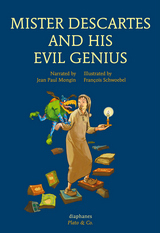 Mister Descartes and His Evil Genius
Jean Paul Mongin
Diaphanes, 2016 At its most basic, philosophy is about learning how to think about the world around us. It should come as no surprise, then, that children make excellent philosophers! Plato & Co. introduces children—and curious grown-ups—to the lives and work of famous philosophers, from Socrates to Descartes, Einstein, Marx, and Wittgenstein. Each book in the series features an engaging—and often funny—story that presents basic tenets of philosophical thought alongside vibrant color illustrations.
On a peaceful winter night while the rest of the town sleeps, Mister Descartes stays up late reading the great books of the world. Suddenly, by the light of the moon, he sees a strange and fearsome shape in the shadow of his pet parrot, Baruch. Is it an illusion, or could it be that his faithful pet is but a figment of his imagination? Could the same be true of his room and all of sleepy Holland? Quite obviously, he cannot rely on his senses, so how can Mister Descartes arrive at any certainty about the world around him? How will he determine what is a clever trick and what is real?
Plato & Co.’s clear approach and charming illustrations make this series the perfect addition to any little library.
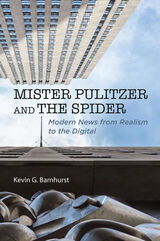 Mister Pulitzer and the Spider: Modern News from Realism to the Digital
Kevin G. Barnhurst
University of Illinois Press, 2018 A spidery network of mobile online media has supposedly changed people, places, time, and their meanings. A prime case is the news. Digital webs seem to have trapped "legacy media," killing off newspapers and journalists' jobs. Did news businesses and careers fall prey to the digital "Spider"?
To solve the mystery, Kevin Barnhurst spent thirty years studying news going back to the realism of the 1800s. The usual suspects--technology, business competition, and the pursuit of scoops--are only partly to blame for the fate of news. The main culprit is modernism from the "Mister Pulitzer" era, which transformed news into an ideology called "journalism." News is no longer what audiences or experts imagine. Stories have grown much longer over the past century and now include fewer events, locations, and human beings. Background and context rule instead.
News producers adopted modernism to explain the world without recognizing how modernist ideas influence the knowledge they produce. When webs of networked connectivity sparked a resurgence in realist stories, legacy news stuck to big-picture analysis that can alienate audience members accustomed to digital briefs.
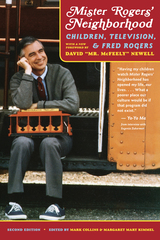 Mister Rogers' Neighborhood, 2nd Edition: Children, Television, and Fred Rogers
Mark Collins and Margaret Mary Kimmel
University of Pittsburgh Press, 2019 Updated edition featuring a new foreword by David "Mr. McFeely" Newell.
The pieces in this volume address the enduring influence and importance of Fred Roger's work in children's television. The contributors, representing a wide range of disciplines--art, psychology, medicine, social criticism, theology, music, and communications--include David Bianculli, Lynette Friedrick Cofer, Nancy E. Curry, Ellen Galinsky, Geroge Gerbner, William Guy, Lynn Johnson, Jeanne Marie Laskas, Susan Linn, Mary Rawson, Mark Shelton, Reoderick Townley, Paula Lawrence Wehmiller, and Eugenia Zukerman interviewing Yo-Yo Ma.
Born in 1928 in Latrobe, Pennsylvania, Fred Rogers began his television career in 1951 at NBC. In 1954, he became program director for the newly founded WQED-TV in Pittsburgh, the first community-supported television station in the United States. From 1954 to 1961, Rogers and Josie Carey produced and performed in WQED's The Children's Corner, which became part of the the Saturday morning lineup on NBC in 1955 and 1956.
It was after Fred Rogers was ordained as a Presbyterian minister in 1963, with a special charge of serving children and their families through television, that he developed what became the award-winning PBS series Mister Rogers' Neighborhood.
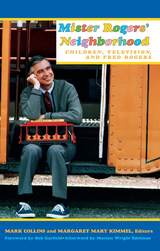 Mister Rogers Neighborhood: Children Television And Fred Rogers
Mark Collins
University of Pittsburgh Press, 1997 Foreword by Bob Garfield. Afterword by Marian Wright Edelman
Born in 1928 in Latrobe, Pennsylvania, Fred Rogers began his television career in 1951 at NBC. In 1954, he became program director for the newly founded WQED-TV in Pittsburgh, the first community-supported television station in the United States. From 1954 to 1961, Rogers and Josie Carey produced and performed in WQED's The Children's Corner, which became part of the the Saturday morning lineup on NBC in 1955 and 1956.
It was after Fred Rogers was ordained as a Presbyterian minister in 1963, with a special charge of serving children and their families through television, that he developed what became the award-winning PBS series Mister Rogers' Neighborhood.
Fred Rogers began his television career in 1951 at NBC, and in 1954, he became program director for the newly founded WQED-TV in Pittsburgh, the first community-supported television station in the United States. From 1954 to 1961, Rogers and Josie Carey produced and performed in WQED's The Children's Corner, which became part of the the Saturday morning lineup on NBC in 1955 and 1956. It was after Fred Rogers was ordained as a Presbyterian minister in 1963, with a special charge of serving children and their families through television, that he developed what became the award-winning PBS series Mister Rogers' Neighborhood.
Mister Satan's Apprentice: A Blues Memoir
Adam Gussow
University of Minnesota Press, 1998 Mister Satan’s Apprentice is the history of one of music’s most fascinating collaborations, between Adam Gussow, a young graduate school dropout and harmonica player, and Sterling “Mr. Satan” Magee, a guitarist and underground blues legend who had originally made his name as “Five Fingers Magee.”
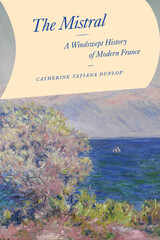 The Mistral: A Windswept History of Modern France
Catherine Tatiana Dunlop
University of Chicago Press, 2024 An in-depth look at the hidden power of the mistral wind and its effect on modern French history.
Every year, the chilly mistral wind blows through the Rhône valley of southern France, across the Camargue wetlands, and into the Mediterranean Sea. Most forceful when winter turns to spring, the wind knocks over trees, sweeps trains off their tracks, and destroys crops. Yet the mistral turns the sky clear and blue, as it often appears in depictions of Provence. The legendary wind is central to the area’s regional identity and has inspired artists and writers near and far for centuries.
This force of nature is the focus of Catherine Dunlop’s The Mistral, a wonderfully written examination of the power of the mistral wind, and in particular, the ways it challenged central tenets of nineteenth-century European society: order, mastery, and predictability. As Dunlop shows, while the modernizing state sought liberation from environmental realities through scientific advances, land modification, and other technological solutions, the wind blew on, literally crushing attempts at control, and becoming increasingly integral to regional feelings of place and community.
 Mistreated: The Political Consequences of the Fight against AIDS in Lesotho
Nora Kenworthy
Vanderbilt University Press, 2017 As global health institutions and aid donors expanded HIV treatment throughout Africa, they rapidly "scaled up" programs, projects, and organizations meant to address HIV and AIDS. Yet these efforts did not simply have biological effects: in addition to extending lives and preventing further infections, treatment scale-up initiated remarkable political and social shifts.
In Lesotho, which has the world's second highest HIV prevalence, HIV treatment has had unintentional but pervasive political costs, distancing citizens from the government, fostering distrust of health programs, and disrupting the social contract. Based on ethnographic observation between 2008 and 2014, this book chillingly anticipates the political violence and instability that swept through Lesotho in 2014.
This book is a recipient of the Norman L. and Roselea J. Goldberg Prize from Vanderbilt University Press for the best book in the area of medicine.
Mistresses and Slaves: Plantation Women in South Carolina, 1830-80
Marli F. Weiner
University of Illinois Press, 1998 Marli Weiner challenges much of the received wisdom on the domestic realm of the nineteenth-century southern plantation—a world in which white mistresses and female slaves labored together to provide food, clothing, and medicines to the larger plantation community. Black and white women, though divided by race, shared common female experiences and expectations of behavior. Influenced by work and gender as much as race, the mistresses and female slaves interacted with one another very differently than they did with men. Weiner draws on the women's own words to offer fresh interpretations of the ideology of domesticity that influenced women's race relations before the Civil War, the gradual changes in attitudes during the war, and the harsh behaviors that surfaced during Reconstruction.
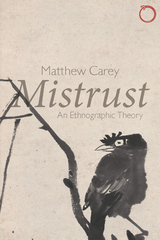 Mistrust: An Ethnographic Theory
Matthew Carey
HAU, 2017 Trust occupies a unique place in contemporary discourse. Seen as both necessary and virtuous, it is variously depicted as enhancing the social fabric, lowering crime rates, increasing happiness, and generating prosperity. It allows for complex political systems, permits human communication, underpins financial instruments and economic institutions, and generally holds society together. Against these overwhelmingly laudable qualities, mistrust often goes unnoticed as a positive social phenomenon, treated as little more than a corrosive absence, a mere negative of trust itself. With this book, Matthew Carey proposes an ethnographic and conceptual exploration of mistrust that raises it up as legitimate stance in its own right.
While mistrust can quickly ruin relationships and even dissolve extensive social ties, Carey shows that it might have other values. Drawing on fieldwork in Morocco’s High Atlas Mountains as well as comparative material from regions stretching from Eastern Europe to Melanesia, he examines the impact of mistrust on practices of conversation and communication, friendship and society, and politics and cooperation. In doing so, he demonstrates that trust is not the only basis for organizing human society and cooperating with others. The result is a provocative but enlightening work that makes us rethink social issues such as suspicion, doubt, and uncertainty.
 Misunderstanding Media
Brian Winston
Harvard University Press, 1986 Popular writing about the media resounds with rhetoric of techno-glory or apocalypse. Brian Winston argues that this “information revolution” is an illusion, a consequence of deep misunderstandings about electronic media, their development, diffusion, and present forms. Technology does not determine in an absolute way the course of human history; humans do. But we cannot hope to come to terms with the future impact of communications technologies without a clear understanding of our immediate technological past.
With lively and iconoclastic style, Winston explains the development and diffusion of four central technologies: telephones, television, computers, and satellites. On the basis of these historical accounts, he formulates a model of how communications technologies are introduced into society in such a way as to prevent their disruption of the status quo. He convincingly demonstrates that the radical potential of each new technology has been suppressed by its development for specific and narrowly defined applications. Powerful historical patterns emerge as Winston moves from one medium to the next in his compelling study. This provocative book demonstrates that technology in itself is not subversive: television cannot rot our brains or destroy our morals. But to the extent that we allow ourselves to feel overwhelmed by an imaginary information revolution, we relinquish our control over what could be if not liberating, at least very useful forms of communication.
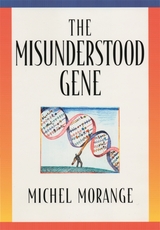 The Misunderstood Gene
Michel Morange
Harvard University Press, 2001 At a time when the complete human genome has been sequenced and when seemingly every week feature news stories describe genes that may be responsible for personality, intelligence, even happiness, Michel Morange gives us a book that demystifies the power of modern genetics. The Misunderstood Gene takes us on an easily comprehensible tour of the most recent findings in molecular biology to show us how—and if—genes contribute to biological processes and complex human behaviors.
As Morange explains, if molecular biologists had to designate one category of molecules as essential to life, it would be proteins and their multiple functions, not DNA and genes. Genes are the centerpiece of modern biology because they can be modified. But they are only the memory that life invented so that proteins could be efficiently reproduced. Morange shows us that there is far more richness and meaning in the structure and interactions of proteins than in all the theoretical speculations on the role of genes.
The Misunderstood Gene makes it clear that we do not have to choose between rigid genetic determinism and fearful rejection of any specific role for genes in development or behavior. Both are true, but at different levels of organization. Morange agrees with those who say “we are not in our genes.” But he also wants us to understand that we are not without our genes, either. We are going to have to make do with them, and this book will show us how.
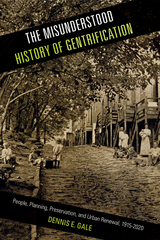 The Misunderstood History of Gentrification: People, Planning, Preservation, and Urban Renewal, 1915-2020
Dennis E. Gale
Temple University Press, 2021 The origins of gentrification date back to World War I—only it was sometimes known as “remodeling” then. Dennis Gale’s insightful book, TheMisunderstood History of Gentrification, provides a recontextualization of American gentrification, planning, and policymaking. He argues that gentrification must be understood as an urban phenomenon with historical roots in the very early twentieth century. Gale uses solid empirical evidence to trace the embryonic revitalization of Georgetown, Greenwich Village, Beacon Hill, and elsewhere back to 1915. He shows how reinvestment and restoration reversed urban decline and revitalized neighborhoods. The Misunderstood History of Gentrification also explains how federal policies such as the Urban Redevelopment Program (later named Urban Renewal), which first emerged in 1949, razed urban slums and created an “urban crisis” that persisted in the 1960s and ‘70s. This situation soon prompted city gentrifiers and historic preservationists to reuse and rehabilitate existing structures. Within a more expansive historical framework, Gale offers a fresh perspective on and debunks misperceptions about gentrification in America.
The Misunderstood Mission of Jean Nicolet: Uncovering the Story of the 1634 Journey
Patrick J. Jung
Wisconsin Historical Society Press, 2018 For years, schoolchildren heard the story of Jean Nicolet’s arrival in Wisconsin. But the popularized image of the hapless explorer landing with billowing robe and guns blazing, supposedly believing himself to have found a passage to China, is based on scant evidence—a false narrative perpetuated by fanciful artists’ renditions and repetition.
In more recent decades, historians have pieced together a story that is not only more likely but more complicated and interesting. Patrick Jung synthesizes the research about Nicolet and his superior Samuel de Champlain, whose diplomatic goals in the region are crucial to understanding this much misunderstood journey across the Great Lakes. Additionally, historical details about Franco-Indian relations and the search for the Northwest Passage provide a framework for understanding Nicolet’s famed mission.
MIT and the Transformation of American Economics
E. Roy Weintraub
Duke University Press MIT and the Transformation of American Economics seeks to remedy the historians’ neglect of the influential and luminary economics department at the Massachusetts Institute of Technology. The department, bolstered by an influx of innovative young scholars, was one of the most distinguished research economics departments in North America by the late 1950s. In another decade it would become the most highly regarded economics department in the world. This volume documents the history of this process and the ways in which MIT’s rise to prominence coincided with the remarkable transformation of American economics in the postwar period. Many developments influenced this history: the Keynesian revolution, the emergent technical nature of economics, the Cold War, the international hold of American economics, the GI Bill, and MIT’s openness to Jewish economists.
 mit worten lûter unde glanz: Metapoetics in Konrad von Würzburg’s Trojanerkrieg
Esther Laufer
University of London Press, 2016 How can you fathom a bottomless abyss? How can you capture ineffable beauty in words? How do you narrate the master of all stories? These are the challenges that seasoned poet Konrad von Würzburg set himself when at the end of the 13th century he composed his account of the Trojan War from a multitude of sources. Konrad has long been recognized as an exceptionally self-conscious author who frequently reflects on the nature, status and function of poetry, and who at times appears more concerned with the sparkling surface of his discourse than with the events he narrates. Taking these observations as a starting point, this study presents the first comprehensive treatment of metapoetics in the Trojanerkrieg. Focusing on traditional and often discussed loci of metapoetic significance, it also uncovers the far-reaching network of explicit and implicit metapoetic expression that permeates the text on every level - even though its multifaceted imagery and arguments resist translation into the language of formal literary theory. The fact that Konrad’s metapoetic vocabulary regularly draws on imagery of religious origin offers a new perspective from which to address the controversial question of the Christian author’s attitude towards the pagan splendour of the narrated world. In highlighting the pitfalls of metapoetic interpretation and mapping out possible conceptualizations of textuality, language and poetry in Middle High German poetry as well as the relationship between secular and religious literature, this study also makes a broader contribution to medieval literary studies.
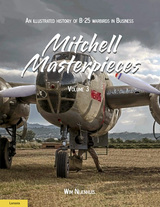 Mitchell Masterpieces 3: An Illustrated History of B-25 Warbirds in Business
Wim Nijenhuis
Amsterdam University Press, 2024 This is the third and final book about the North American B-25 Mitchell in service. The Volumes 1 and 2 of "Mitchell Masterpieces" dealt with the B-25s in military service. In this Volume 3, many B-25s are described which operated in civil service in all different countries.
After the Second World War, the B-25 got a role in civil aviation. Many airplanes were stripped of their armament and other military equipment and often came through auctions in the civilian market. They came in private hands and were deployed for transportation of personnel or goods, for training, fire fighting, agricultural spraying of other purposes. Some were converted into a luxury business plane and some were used in the film industry.
This book should serve as a general view of the companies, organisations and owners and the B-25s they flew. Moreover, the book would not be complete if no attention was paid to the civilian B-25s in the various museums and the warbird circuit. All this is described in detail and provided with about 750 pictures, many of which are in full colour.
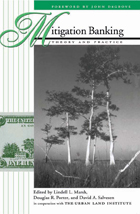 Mitigation Banking: Theory And Practice
Edited by Lindell L. Marsh, David A. Salvesen, and Douglas R. Porter; Foreword by John De Grove
Island Press, 1996 Under the Clean Water Act, development that results in the permanent destruction of wetlands must, in most cases, be mitigated by the creation of a new wetland or the restoration of a degraded one. In recent years, the concept of "mitigation banking" has emerged. Rather than require developers to create and maintain wetlands on their own on a quid pro quo basis, mitigation banking allows them to pay for wetlands that have been created and maintained properly by others to compensate for their damage. The contributors to this volume provide an overview of mitigation banking experience in the United States, examine the key issues and concerns -- from providing assurances to determining the value of credits -- and describe the practice of developing and operating a mitigation bank. Topics include: - history and current experience of mitigation banking
- policies and concerns of local, state, and federal agencies
- economics of mitigation banking
- funding, management, and operation of banks
- starting a mitigation bank
The Mitki and the Art of Postmodern Protest in Russia
Alexandar Mihailovic
University of Wisconsin Press, 2019 During the late Soviet period, the art collective known as the Mitki emerged in Leningrad. Producing satirical poetry and prose, pop music, cinema, and conceptual performance art, this group fashioned a playful, emphatically countercultural identity with affinities to European avant-garde and American hippie movements.
More broadly, Alexandar Mihailovic shows, the Mitki pioneered a form of political protest art that has since become a centerpiece of activism in post-Soviet Russia, most visibly today in groups such as Pussy Riot. He draws on extensive interviews with members of the collective and illuminates their critique of the authoritarian state, militarism, and social strictures from the Brezhnev years to the present.
 Mitra-Varuna: An Essay on Two Indo-European Representations of Sovereignty
Georges Dumézil
HAU, 2023 A classic text that develops one prong of Dumézil’s tripartite hypothesis of Indo-European tribes: the sacred sovereign.
Georges Dumézil’s fascination with the myths and histories of India, Rome, Scandinavia, and the Celts yielded an idea that became his most influential scholarly legacy: the tripartite hypothesis, which divides Indo-European societal functions into three classes: the sacred sovereign, the warrior, and the producer. Mitra-Varuna, originally published in 1940, concentrates on the first function, that of sovereignty. Dumézil identifies two types of rulers, the first judicial and worldly, the second divine and supernatural. These figures, both priestly, are oppositional but complementary. The title nods to these roles, referring to the gods Mitra, a rational mediator, and Varuna, an awesome religious figure.
Stuart Elden’s critical edition, based on the 1988 English translation by Derek Coltman, identifies variations between the first and second French editions and completes—and in places corrects—Dumézil’s references. The editor’s detailed introduction situates Mitra-Varuna within Dumézil’s career, outlines how his treatment of its themes developed over time, and relates the book to the political controversy around his ideas. Two new appendices contain passages that did not appear in the second French edition.
 Mitsubishi and the N.Y.K., 1870–1914: Business Strategy in the Japanese Shipping Industry
William D. Wray
Harvard University Press, 1984 William Wray presents an in-depth examination of the origins and institutional growth prior to World War I of Mitsubishi, today Japan's largest industrial group, and the Nippon Yusan Kaisha (N.Y.K.), now the world's leading shipping enterprise. Drawing heavily upon previously inaccessible archival material from Japanese and Western companies, Wray shows how Japanese business grew out of institutional change through conflict. Three major themes illustrate tension and conflict: the struggle by managers to retain company autonomy, the role of the government in planning and intervening in the economy, and internal company disputes between managers and stockholders over financial issues.
This study, however, is much more than the history of two companies. It provides extensive analysis of decisionmaking in the Meiji government, the finances of the Imperial House, trading strategies, international commercial diplomacy, imperialism, and the shipping industry's response to war.
 Mitzvah Man
John J. Clayton
Texas Tech University Press, 2011 Mourning the death of his wife after a senseless and tragic accident, Boston businessman Adam Friedman finds solace through living the mitzvot—instructions for goodness, justice, and compassion. In a frenzy of good deeds, he saves lives and helps the needy. Even his adolescent daughter, whose grief is as intense as his own, begins to wonder if there isn’t more than a shared joke to the superhero T-shirt she has designed for him. When a thwarted crime and a supplicant’s good fortune propel Friedman into the headlines, followers gather unbidden on his doorstep. Voices, dreams, and auras visit him. Miracles occur among family, friends, and strangers alike. But while some hail the Mitzvah Man as a modern-day prophet, others brand him a madman in danger of losing custody of his only child. Is he crazy? Is he holy? Through his experiences of love and loss, beauty and pain, language and custom, Friedman’s daily quest reveals the unexpected ways in which God may inhabit us all.
The Mixe of Oaxaca: Religion, Ritual, and Healing
By Frank J. Lipp
University of Texas Press, 1991 The Mixe of Oaxaca was the first extensive ethnography of the Mixe, with a special focus on Mixe religious beliefs and rituals and the curing practices associated with them. It records the procedures, design-plan, corresponding prayers, and symbolic context of well over one hundred rituals. Frank Lipp has written a new preface for this edition, in which he comments on the relationship of Mixe religion to current theoretical understandings of present-day Middle American folk religions.
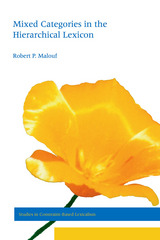 Mixed Categories in the Hierarchical Lexicon
Robert P. Malouf
CSLI, 2000 Mixed category constructions like the English verbal gerund involve words that seem to be central members of more that one part of speech. This poses a problem for the standard view of syntactic categories.
This book presents a novel analysis of this and similar mixed category constructions in languages including Quechua, Tibetan, Arabic, Fijian, Dagaare, and Jacaltec. Under this analysis, Robert P. Malouf shows that verbal gerunds share the selectional properties of verbs and the distributional properties of nouns. He further shows that since different dimensions of grammatical information can vary independently, the behavior of mixed categories creates no paradox. These dimensions are in principle independent. However, certain types of mixed categories are quite common in the world's languages, while others are rare or nonexistent. The book discusses how cross-linguistic variation can be accounted for by a lexical categorial prototype. By stating these prototypes as default constraints in a hierarchy of lexical information, Malouf argues that one can bring insights from cognitive and functional approaches to linguistics into a formal analysis, thus building on the strengths of both approaches.
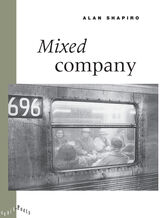 Mixed Company
Alan Shapiro
University of Chicago Press, 1996 Respected poet, teacher, and critic Alan Shapiro continues his much-acclaimed explorations of childhood, family, and marriage in Mixed Company. Revealing a world troubled by difference while struggling toward commonality, and with equal attention to historical detail and the poetics of everyday life, from the mythic past to the abrasive intimacies of the present, Shapiro charts the many ways our social and sexual identities are formed, threatened, altered, and, for good or ill, preserved. Deeply felt and ambitious, Mixed Company is an extraordinary book by one of the leading poets writing in America today.
"What draws us into Alan Shapiro's Mixed Company is not a conspicuous felicity or any sort of bravura, but the quiet, undaunted way he goes after the truth of human feeling and motive. . . . The poems grope and conjecture, looking for understanding . . . but whatever may remain unsolved and insoluble, the poems are full of astonishing insights, a rare articulateness, and what another age called 'knowledge of the human heart.'" —Richard Wilbur
 Mixed Emotions: Beyond Fear and Hatred in International Conflict
Andrew A. G. Ross
University of Chicago Press, 2013 In recent years, it’s become increasingly clear that emotion plays a central role in global politics. For example, people readily care about acts of terrorism and humanitarian crises because they appeal to our compassion for human suffering. These struggles also command attention where social interactions have the power to produce or intensify the emotional responses of those who participate in them.
From passionate protests to poignant speeches, Andrew A. G. Ross analyzes high-emotion events with an eye to how they shape public sentiment and finds that there is no single answer. The politically powerful play to the public’s emotions to advance their political aims, and such appeals to emotion also often serve to sustain existing values and institutions. But the affective dimension can produce profound change, particularly when a struggle in the present can be shown to line up with emotionally resonant events from the past. Extending his findings to well-studied conflicts, including the War on Terror and the violence in Rwanda and the Balkans, Ross identifies important sites of emotional impact missed by earlier research focused on identities and interests.
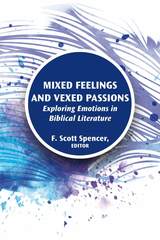 Mixed Feelings and Vexed Passions: Exploring Emotions in Biblical Literature
F. Scott Spencer
SBL Press, 2017 A ground-breaking collection exploring the rich array of emotions in biblical literature
An international team of Hebrew Bible and New Testament scholars offers incisive case studies of passions displayed by divine and human figures in the biblical texts ranging from joy, happiness, and trust to grief, hate, and disgust. Essays address how biblical characters' feelings affect their relationship with God, one another, and the world and how these feelings mix together, for good or ill, for flourishing or vexation. Deeply engaged with both ancient and modern contexts, including the burgeoning interdisciplinary study of emotion in the humanities and sciences, these essays break down the artificial divide between reason and passion, cognition and emotion, thought and feeling in biblical study.
Features
- Case studies drawn from multiple genres across the Bible: narrative, prophets, poetry, wisdom, Gospels, and letters
- Helpful select bibliographies of interdisciplinary resources at the end of each essay
- Critical balance between theory and practice and between method and close textual analysis
- Distinctive ancient Hebrew and Greek uses of emotional terms and concepts compared with each other and with evolving understandings in Western culture
 Mixed Feelings: Feminism, Mass Culture, and Victorian Sensationalism
Cvetkovich, Ann
Rutgers University Press, 1992 Arguing that affect has a history, Ann Cvetkovich challenges both nineteenth- and twentieth-century claims that the expression of feeling is naturally or intrinsically liberating or reactionary. The central focus of Mixed Feelings is the Victorian sensation novel, the fad genre of the 1860s, whose controversial popularity marks an important moment in the history of mass culture. Drawing on Marxist, feminist, and Foucauldian cultural theory, Cvetkovich investigates the sensation novel's power to produce emotional responses, its representation of social problems as affective ones, and the difficulties involved in assessing the genre as either reactionary or subversive. She is particularly concerned with the relation of gender and affect since many of the sensation novels were written by and for women, and women. By examining the powerful conjunction of ideologies of affect, gender, and mass culture, Cvetkovich reveals the powerful political effects of affective expression and sensational representations.
 Mixed Heritage in the Family: Racial Identity, Spousal Choice, and Childrearing
Carolyn Liebler
Russell Sage Foundation, 2025 As interracial unions and multiracial people become more common in the United States, mixed-heritage people have come to be regarded by some as a bellwether of race relations in the country. Is the growth of this population a sign that we are now in a post-racial era and our racial identities no longer impact our daily lives? In Mixed Heritage in the Family,sociologists Carolyn A. Liebler and Miri Song explore how racially mixed people navigate racial boundaries as they choose spouses and raise families.
Liebler and Song break new ground by being the first to combine and integrate the study of three aspects of life for people of mixed racial heritage – identity, spouse choice, and childrearing. This integrated approach reveals how complicated racial identification can be, and how it can be expressed in one’s choice of partner or in how one raises their children. The authors draw on census data and interviews with Asian-White, Black-White, and American Indian/Alaska Native-White mixed people to better understand how their identity choices are related to their choice of spouse and how they racially identify and raise their children.
Increasingly, mixed people in the United States are identifying with multiple races. However, the authors find that mixed-race people are not a monolith and that how and why they identify varies considerably between and within each group. They found several common factors that influenced whether mixed-race people choose to identify as biracial, solely White, or solely as a racial minority. These factors include the history of the specific minority race in the U.S., the racial demographics of where they were raised, their social and cultural exposure to their White and non-White backgrounds, their attachment to their racial backgrounds, and how they are seen racially by others.
The way mixed-heritage people identify was closely tied to the race of their spouse. However, having a White spouse did not necessarily mean the mixed-race person felt disconnected from their non-White heritage. White spouses varied in their racial consciousness and their interest in the culture of their mixed-race spouse’s minority ancestry. The spouse’s race, and the nature of racial overlap between the spouses, was also key in the racial upbringing of a mixed-heritage person’s child. In families where the parents share a minority racial heritage, couples lean into their shared ‘family race’, which guides their parenting choices and family life. Many mixed heritage parents found it important to foster racial pride in their children and combat negative racial stereotypes.
Liebler and Song caution against making superficial predictions about the state of race relations in the U.S. based on an increase in the multiracial population. They show that race has not become less salient in the lives of many mixed-race people—American society is not post-racial.
Mixed Heritage in the Family breaks new ground, provides compelling insights in its examination of the lives of mixed-race people, and shows how complicated racial identification can be.
 Mixed Media: Feminist Presses and Publishing Politics
Simone Murray
Pluto Press, 2004 Mixed Media is the first book about the feminist press movement which transformed the publishing industry, literary culture and educational curricula during the last quarter of the 20th century. It is both a survey of the movement internationally and a detailed critique of its long-term impact. Feminist presses are described as 'mixed media', always attempting to balance politics with profit-making. Using a series of detailed case studies, Simone Murray highlights the specific debates through which this dilemma plays out: the nature of independence; the politics of race; feminist publishing and the academy; radical writing and publishing practice; and feminism's interface with mainstream publishing. The book both catches the recent mood of reassessment at feminist publishing's apparent passing, as well as engaging with the fast-growing disciplines of cultural industries, media production and arts management. Mixed Media is an invaluable resource for undergraduates, postgraduates and academic researchers in the fields of publishing studies, cultural/media studies and gender/women's studies.
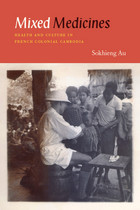 Mixed Medicines: Health and Culture in French Colonial Cambodia
Sokhieng Au
University of Chicago Press, 2011 During the first half of the twentieth century, representatives of the French colonial health services actively strove to expand the practice of Western medicine in the frontier colony of Cambodia. But as the French physicians ventured beyond their colonial enclaves, they found themselves negotiating with the plurality of Cambodian cultural practices relating to health and disease. These negotiations were marked by some success, a great deal of misunderstanding, and much failure.
Bringing together colorful historical vignettes, social and anthropological theory, and quantitative analyses, Mixed Medicines examines these interactions between the Khmer, Cham, and Vietnamese of Cambodia and the French, documenting the differences in their understandings of medicine and revealing the unexpected transformations that occurred during this period—for both the French and the indigenous population.
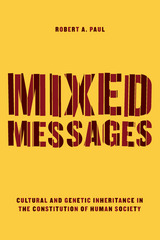 Mixed Messages: Cultural and Genetic Inheritance in the Constitution of Human Society
Robert A. Paul
University of Chicago Press, 2015 As social and symbolic animals—animals with language and systems of signs—humans are informed by two different kinds of heritage, one biological, the other cultural. Scholars have tended to study our genetic and symbolic lineages separately, but in recent years some have begun to explore them together, offering a “dual inheritance theory.” In this book, Robert A. Paul offers an entirely new and original consideration of our dual inheritance to date, going deep inside an extensive ethnographic record to outline a fascinating relationship between our genetic codes and symbolic systems.
Examining a wide array of cultures, Paul reveals how the inherent tensions between these two modes of transmission generate many of the features of human society, such as marriage rules, initiation rituals, gender asymmetry, and sexual symbolism. Exploring differences in the requirements, range, and agendas of genetic and symbolic reproduction, he shows that a properly conceived dual inheritance model does a better job of accounting for the distinctive character of actual human societies than either evolutionary or socio-cultural construction theories can do alone. Ultimately this book offers a powerful call for a synthesis of the traditions inspired by Darwin, Durkheim, and Freud—one that is critically necessary if we are to advance our understanding of human social life.
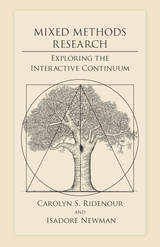 Mixed Methods Research: Exploring the Interactive Continuum
Carolyn S. Ridenour and Isadore Newman
Southern Illinois University Press, 2008 In Mixed Methods Research: Exploring the Interactive Continuum, the second edition of Qualitative-Quantitative Research Methodology, authors Carolyn S. Ridenour and Isadore Newman reject the artificial dichotomy between qualitative and quantitative research strategies in the social and behavioral sciences and argue that the two approaches are neither mutually exclusive nor interchangeable; rather, the actual relationship between the two paradigms is one of isolated events on a continuum of scientific inquiry. In their original model for research—the “interactive continuum”—Ridenour and Newman emphasize four major points: that the research question dictates the selection of research methods; that consistency between question and design can lead to a method of critiquing research studies in journals; that the interactive continuum model is built around the place of theory; and that the assurance of validity of research is central to all studies. With this edition, the authors incorporate the concept of research purpose into their analysis. To contextualize their new argument and to propose strategies for enhancement, Ridenour and Newman review the historical and contemporary debates around research frameworks and define the nature of scientific validity. Establishing five criteria that render a study “scientific,” they propose ways to strengthen validity in research design. They argue that by employing multiple methods, researchers may enhance the quality of their research outcomes. By integrating the quantitative research standards of internal and external validity and the qualitative research standards of trustworthiness, Ridenour and Newman suggest a principle for mixed methods research. Ridenour and Newman apply this theoretical concept to a systematic analysis of four published research studies, with special emphasis on the consistency among research purpose, question, and design. Ridenour and Newman have completely rewritten their conclusions in light of their evolving analyses. They incorporate their most recent ideas into the qualitative-quantitative continuum and emphasize the “model of consistency” as key for research to meet the standard of “scientific.” This book occupies a vital place at the junction of methodological theory and scientific practice and makes connections between the traditionally separate realms of quantitative and qualitative research.
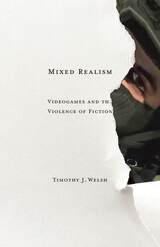 Mixed Realism: Videogames and the Violence of Fiction
Timothy J. Welsh
University of Minnesota Press, 2016 Mixed Realism is about how we interact with media. Timothy J. Welsh shows how videogames, like novels, both promise and trouble experiences of “immersion.” His innovative methodology offers a new understanding of the expanding role of virtuality in contemporary life. Today’s wired culture is a mixed reality, conducted as exchanges between virtual and material contexts. We make balance transfers at an ATM, update Facebook timelines, and squeeze in sessions of Angry Birds on the subway. However, the “virtual” is still frequently figured as imaginary, as opposed to “real.” The vision of 1990s writers of a future that would pit virtual reality against actual reality has never materialized, yet it continues to haunt cultural criticism. Our ongoing anxiety about immersive media now surrounds videogames, especially “shooter games,” and manifests as a fear that gamers might not know the difference between the virtual world and the real world. As Welsh notes, this is the paradox of real virtuality. We understand that the media-generated virtualities that fill our lives are not what they represent. But what are they if they are not real? Do they have presence, significance, or influence exceeding their material presence and the user processes that invoke them? What relationships do they establish through and beyond our interactions with them? Mixed Realism brims with fresh analyses of literary works such as Truman Capote’s In Cold Blood and Mark Z. Danielewski’s House of Leaves, along with sustained readings of controversial videogames such as Super Columbine Massacre and Call of Duty: Modern Warfare 2. Continually connecting the dots between surprising groupings of texts and thinkers, from David Foster Wallace to the cult-classic videogame Eternal Darkness and from Cormac McCarthy to Grand Theft Auto, it offers a fresh perspective on both digital games and contemporary literature.
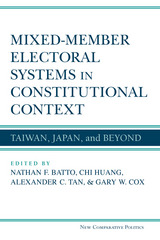 Mixed-Member Electoral Systems in Constitutional Context: Taiwan, Japan, and Beyond
Edited by Nathan F. Batto, Chi Huang, Alexander C. Tan, and Gary W. Cox
University of Michigan Press, 2016 Reformers have promoted mixed-member electoral systems as the “best of both worlds.” In this volume, internationally recognized political scientists evaluate the ways in which the introduction of a mixed-member electoral system affects the configuration of political parties. The contributors examine several political phenomena, including cabinet post allocation, nominations, preelectoral coalitions, split-ticket voting, and the size of party systems and faction systems. Significantly, they also consider various ways in which the constitutional system—especially whether the head of government is elected directly or indirectly—can modify the incentives created by the electoral system.
The findings presented here demonstrate that the success of electoral reform depends not only on the specification of new electoral rules per se but also on the political context—and especially the constitutional framework—within which such rules are embedded.
 Mixed-Race Superheroes
Sika A. Dagbovie-Mullins
Rutgers University Press, 2021 American culture has long represented mixed-race identity in paradoxical terms. On the one hand, it has been associated with weakness, abnormality, impurity, transgression, shame, and various pathologies; however, it can also connote genetic superiority, exceptional beauty, and special potentiality. This ambivalence has found its way into superhero media, which runs the gamut from Ant-Man and the Wasp’s tragic mulatta villain Ghost to the cinematic depiction of Aquaman as a heroic “half-breed.”
The essays in this collection contend with the multitude of ways that racial mixedness has been presented in superhero comics, films, television, and literature. They explore how superhero media positions mixed-race characters within a genre that has historically privileged racial purity and propagated images of white supremacy. The book considers such iconic heroes as Superman, Spider-Man, and The Hulk, alongside such lesser-studied characters as Valkyrie, Dr. Fate, and Steven Universe. Examining both literal and symbolic representations of racial mixing, this study interrogates how we might challenge and rewrite stereotypical narratives about mixed-race identity, both in superhero media and beyond.
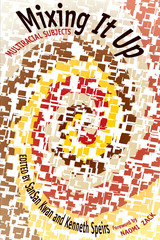 Mixing It Up: Multiracial Subjects
Edited by SanSan Kwan and Kenneth Speirs
University of Texas Press, 2004 The United States Census 2000 presents a twenty-first century America in which mixed-race marriages, cross-race adoption, and multiracial families in general are challenging the ethnic definitions by which the nation has historically categorized its population. Addressing a wide spectrum of questions raised by this rich new cultural landscape, Mixing It Up brings together the observations of ten noted voices who have experienced multiracialism first-hand. From Naomi Zack's "American Mixed Race: The United States 2000 Census and Related Issues" to Cathy Irwin and Sean Metzger's "Keeping Up Appearances: Ethnic Alien-Nation in Female Solo Performance," this diverse collection spans the realities of multiculturalism in compelling new analysis. Arguing that society's discomfort with multiracialism has been institutionalized throughout history, whether through the "one drop" rule or media depictions, SanSan Kwan and Kenneth Speirs reflect on the means by which the monoracial lens is slowly being replaced. Itself a hybrid of memoir, history, and sociological theory, Mixing It Up makes it clear why the identity politics of previous decades have little relevance to the fluid new face of contemporary humanity.
Mixing Oil and Water: The Beginnings of Chautauqua at Fair Point
Dr. Richard P. Heitzenrater
Bridwell Press, 2024 Mixing Oil and Water: The Beginnings of Chautauqua at Fair Point treats the background and development of Chautauqua as a part of the imagination of H. H. Moore, Lewis Miller, John H. Vincent, and others in the Chautauqua Lake Camp Meeting at Fair Point and then since 1874 as the Chautauqua Assembly. The first decade of Chautauqua’s existence as a church body (but independent) has not been examined carefully before. One can see the roots of many traditions coalescing in that first decade into what has become the powerful institution that is the Chautauqua of today.
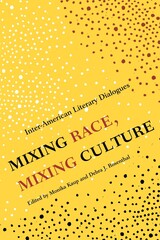 Mixing Race, Mixing Culture: Inter-American Literary Dialogues
Edited by Monika Kaup and Debra Rosenthal
University of Texas Press, 2002 Over the last five centuries, the story of the Americas has been a story of the mixing of races and cultures. Not surprisingly, the issue of miscegenation, with its attendant fears and hopes, has been a pervasive theme in New World literature, as writers from Canada to Argentina confront the legacy of cultural hybridization and fusion. This book takes up the challenge of transforming American literary and cultural studies into a comparative discipline by examining the dynamics of racial and cultural mixture and its opposite tendency, racial and cultural disjunction, in the literatures of the Americas. Editors Kaup and Rosenthal have brought together a distinguished set of scholars who compare the treatment of racial and cultural mixtures in literature from North America, the Caribbean, and Latin America. From various angles, they remap the Americas as a multicultural and multiracial hemisphere, with a common history of colonialism, slavery, racism, and racial and cultural hybridity.
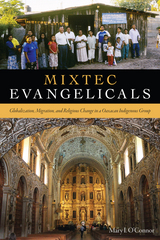 Mixtec Evangelicals: Globalization, Migration, and Religious Change in a Oaxacan Indigenous Group
Mary I. O'Connor
University Press of Colorado, 2016 Mixtec Evangelicals is a comparative ethnography of four Mixtec communities in Oaxaca, detailing the process by which economic migration and religious conversion combine to change the social and cultural makeup of predominantly folk-Catholic communities. The book describes the effects on the home communities of the Mixtecs who travel to northern Mexico and the United States in search of wage labor and return having converted from their rural Catholic roots to Evangelical Protestant religions. O’Connor identifies globalization as the root cause of this process. She demonstrates the ways that neoliberal policies have forced Mixtecs to migrate and how migration provides the contexts for conversion. Converts challenge the set of customs governing their Mixtec villages by refusing to participate in the Catholic ceremonies and social gatherings that are at the center of traditional village life. The home communities have responded in a number of ways—ranging from expulsion of converts to partial acceptance and adjustments within the village—depending on the circumstances of conversion and number of converts returning. Presenting data and case studies resulting from O’Connor’s ethnographic field research in Oaxaca and various migrant settlements in Mexico and the United States, Mixtec Evangelicals explores this phenomenon of globalization and observes how ancient communities are changed by their own emissaries to the outside world. Students and scholars of anthropology, Latin American studies, and religion will find much in this book to inform their understanding of globalization, modernity, indigeneity, and religious change.
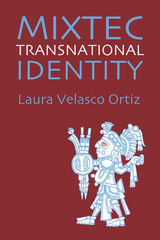 Mixtec Transnational Identity
Laura Velasco Ortiz
University of Arizona Press, 2005 As Mexican migrants have found new lives in the United States, the appearance of migrant organizations reflects the revitalization of ancestral community life. One example, the Binational Oaxacan Indigenous Front, includes participants from cities along the border and represents diverse organizations of indigenous migrants from Oaxaca. Its creation reflects the vast changes that have taken place in migrants’ lives in less than thirty years. Mixtec Transnational Identity is the first book to describe in detail the emergence of a wide range of transnational indigenous organizations and communities in the greater Mexico–U.S. border region. It documents and analyzes the construction of novel identities formed within transnational contexts that may not conform to identities in either the “sending” or “receiving” societies. Laura Velasco Ortiz investigates groups located on both sides of the border that have maintained strong links with towns and villages in the Mixteca region of Oaxaca in order to understand how this transformation came about. Through a combination of survey, ethnography, and biography, she examines the formation of ethnic identity under the conditions of international migration, giving special attention to the emergence of organizations and their leaders as collective and individual ethnic agents of change. Velasco Ortiz reconstructs the Mixtec experience through three lines of analysis: the formation of organizations beyond the confines of home communities; the emergence of indigenous migrant leaders; and the shaping of ethnic consciousness that assimilates the experiences of a community straddling the border. Her research brings to light the way in which the dispersion of members of different communities is offset by the formation of migrant networks with family and community ties, while the politicization of these networks enables the formation of both hometown associations and transnational pan-ethnic organizations. An important focus of her analysis is gender differentiation within the ethnic community. There has been little research into the relationship between the process of collective agency and the reconstitution of the migrants’ ethnic identity. Mixtec Transnational Identity should stimulate further study of Latino migration to the U.S. border region and its consequences on ethnic identity.
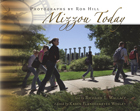 Mizzou Today
Edited by Karen Flandermeyer Worley, Text by Richard L. Wallace, & Photos by RobHill
University of Missouri Press, 2007
Picture the adrenalin-pumping excitement of hoop action on Norm Stewart Court. Now envision the tranquillity of a late summer day, with a half moon rising in a blue sky over the Columns. These photos tell the same story: it’s not two different worlds—it’s Mizzou!
The University of Missouri’s rich record of accomplishment and service to Missouri, the nation, and the world has been captured in this pictorial history—more than 140 full-color photos that provide a visual record of living and learning at the University of Missouri–Columbia. From the beauty of the historic Columns on Francis Quadrangle to the academic prowess of the faculty to gridiron thrills at Memorial Stadium, the book faithfully reflects a place where discovery happens every day.
Rob Hill has been photographing Mizzou’s people, landmarks, and events for nearly twenty years, and his images bring the campus to life. Chancellor Emeritus Richard Wallace, whose service to the University spans four decades, recounts MU’s growth since World War II in his accompanying text. Assembled by MIZZOU magazine editor Karen Worley, Mizzou Today reflects everything that is the University of Missouri.
Wallace provides timelines of key events that span the entire history of the University, tracing major events from its establishment in 1839 to the cancer research of the twenty-first century. Noted along the way are such events as the opening of University Hospital, the creation of new campuses, even the installation of the nation’s first automated library circulation system in Ellis Library, and some of the generous gifts that have made the University’s growth possible. The book also recalls all of the major milestones in sports, from the first intercollegiate football game in 1890 to Ben Askren’s national wrestling championships in 2006 and 2007.
These magnificent photos will bring back memories for alumni as surely as they will preserve them for today’s students—from the dance steps of Truman the Tiger to the avid consumption of Tiger Stripe ice cream, from the solemnity of Tap Day ceremonies to fraternity brothers raising money for Hurricane Katrina relief. You’ll get a glimpse of dorm life in Hatch Hall and a peek into the law library’s rare-book room, a look over the shoulders of a trauma team saving a patient at University Hospital and of a fisheries student studying salamanders in the wild. And of course there are images of some of the heart-stopping action that Mizzou sports fans have come to expect.
People, landmarks, events—it’s all here in a superb volume that, like Jesse Hall, will stand the test of time. Mizzou Today is a keepsake for anyone who loves MU and a lasting record of a great university’s accomplishments.
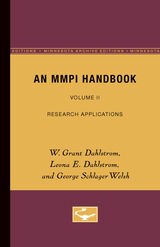 An MMPI Handbook: Volume II. Research Applications
Leona Dahlstrom
University of Minnesota Press, 1975
An MMPI Handbook: Volume II. Research Applications was first published in 1972. Minnesota Archive Editions uses digital technology to make long-unavailable books once again accessible, and are published unaltered from the original University of Minnesota Press editions.This is the second volume of a two-volume revised edition of An MMPI Handbook: A Guide to Use in Clinical Practice and Research by W. Grant Dahlstrom and George Schlager Welsh. It covers new developments in psychological, psychiatric, medical, criminal justice, and educational application processes, stress effects, learning processes, and personality are summarized. Evidence concerning the major sources of variance in the responses of various subjects to the test is examined from factor analytic work, experimental and psychometric studies of response sets, and research on demographic and other background factors. In addition, studies of evaluation of treatment employing the MMPI for screening, baseline determinations, appraisals of change effected by various physical and psychological interventions, and follow-up assessment are summarized. Ten technical appendixes provide valuable source material for research workers, including data on item endorsement frequencies, desirability ratings, stability of test responses, item structure and ambiguity, reliability data on basic scales and their intercorrelations, and the item composition, scoring, and normative data on most of the extant scales from the MMPI item pool. There is a bibliography of over 6,000 English and foreign-language references.
 MMPI-2 Correlates for Outpatient Community Mental Health Settings
John R. Graham
University of Minnesota Press, 1999 The first major collection of outpatient data on the MMPI-2, the most widely used personality assessment test in the world.
With the introduction of managed care to mental health treatment, patients increasingly are seen and treated in outpatient settings. Although the MMPI-2 and its predecessor, the MMPI, have long been used for outpatient assessment, the bulk of research on the test has been performed at inpatient psychiatric hospitals. This volume presents the first extensive set of correlates for the MMPI-2 in outpatient settings, demonstrating the relationship of MMPI-2 scores to clinically relevant behavior.
Reporting the results of a large-scale research project on the use of the MMPI-2 in community mental health centers, this study provides clinically useful information concerning the interpretation of MMPI-2 scores and code types. Because the research found that the correlates in outpatient mental health settings are essentially the same as those in other settings, this book will be a standard reference for all clinicians who use the MMPI-2, regardless of where they work.
"A well-written, well-organized presentation. The literature is extensively reviewed, both in terms of prototypic studies reporting MMPI interpretive correlates, as well as those performed by one or more of the authors using the MMPI-2. This comprehensive literature review and the knowledge base of the authors are quite laudable." Linda Nelson
"This timely book presents extremely important data for the clinical and research communities. It is unusually comprehensive and thorough, representing what is probably the best effort to date at providing external correlates of MMPI-2 scales." David Berry
John R. Graham, Yossef S. Ben-Porath, and John L. McNulty are in the Department of Psychology at Kent State University. Graham is professor and chair, Ben-Porath is associate professor, and McNulty is a postdoctoral fellow.
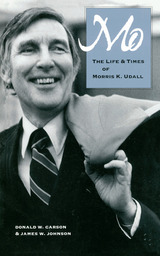 Mo: The Life and Times of Morris K. Udall
Donald W. Carson and James W. Johnson
University of Arizona Press, 2001 Everybody liked Mo. Throughout his political life— and especially during his bid for the Democratic presidential nomination in 1976— thousands of people were drawn to Arizona congressman Morris K. Udall by his humor, humanity, and courage. This biography traces the remarkable career of the candidate who was "too funny to be president" and introduces readers to Mo the politician, Mo the environmentalist, and Mo the man. Journalists Donald Carson and James Johnson interviewed more than one hundred of Udall's associates and family members to create an unusually rich portrait. They recall Udall's Mormon boyhood in Arizona when he lost an eye at age six, his service during World War II, his brief career in professional basketball, and his work as a lawyer and county prosecutor, which earned him a reputation for fairness and openness.
Mo provides the most complete record of Udall's thirty-year congressional career ever published. It reveals how he challenged the House seniority system and turned the House Interior Committee into a powerful panel that did as much to protect the environment as any organization in the twentieth century. It shows Udall to have been a consensus builder for environmental issues who paved the way for the Alaska Lands Act of 1980, helped set aside 2.4 million acres of wilderness in Arizona, and fought for the Central Arizona Project, one of the most ambitious water projects in U.S. history. Carson and Johnson record Udall's early opposition to the Vietnam War at a time when that conflict was largely perceived as a just cause, as well as his early advocacy of campaign finance reform. They also provide a behind-the-scenes account of his run for the presidency—the first House member to seek the office in nearly a century—which gained him an intensely loyal national following.
Mo explores the paradoxes that beset Udall: He was a man able to accomplish things politically because people genuinely liked and respected him, yet he was a loner and workaholic whose focus on politics overshadowed his personal life. Carson and Johnson devote a chapter to the famous Udall sense of humor. They also look sensitively at his role as a husband and father and at his proud and stubborn bout with Parkinson's disease. Mo Udall will long be remembered for his contributions to environmental legislation, for his unflagging efforts in behalf of Arizona, and for the gentle humor with which he conducted his life. This book secures his legacy.
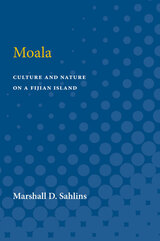 Moala: Culture and Nature on a Fijian Island
Marshall D. Sahlins
University of Michigan Press, 1962 For nearly a year Marshall D. Sahlins lived in villages on the Fijian island of Moala, learning the "way of the land," as the Moalans call their customs. From this experience he has written a book that is at once an intensive field study and a new approach to the methods of studying primitive communities. It marks an important departure from the standard trait-listing form of anthropological reports, for Sahlins does not isolate such factors as economics, kinship, and political organization. Rather he shows how closely they are interwoven in a primitive culture and why they must be interpreted with reference to the organic whole.This book, frankly evolutionary in its approach, views Moalan culture as an adaptive organization, a human means of dealing with nature so as to ensure survival. Proceeding from the smallest kinship groups, families, to the larger organization of village and island, Sahlins shows how kinship structure can organize the polity and economy. In a culture such as Moalan, kinship behavior is economics and often politics as well. By fully appreciating this fact, the author claims, we are made aware of the wide evolutionary gap between primitive societies and the impersonal structure of modern civilization.
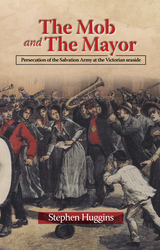 The Mob and The Mayor: Persecution of the Salvation Army at the Victorian seaside
Stephen Huggins
Sussex Academic Press, 2022 The Salvation Army is well known for its work with the poor and disadvantaged. There is, however, much more to the story of the Salvation Army than their highly commendable good works. They have been so closely identified with a programme of social action that their wider history has been marginalized. This history includes a period of astonishing levels of opposition and religious persecution which the Army faced in its early years. Many Salvationists were badly injured in violent street riots against them while at the same time facing imprisonment as the force of the law was brought to bear on their evangelism. Among all those places in Britain where the Salvation Army was persecuted, the south-coast town of Eastbourne during the 1880s and 1890s stands out as worthy of attention. The Sussex seaside resort played a hugely important part in the wider anti-Salvation Army narrative, as it was in Eastbourne that opposition was among the most violent and protracted. Significantly and surprisingly, the vehemence and savagery was supported by the local Council and Mayor. The narrative of The Mob and The Mayor; is chronological and entirely evidence based. It includes: eyewitness accounts,newspaper reports,Parliamentary papers,Eastbourne Council Watch Committee meetings minutes,and Salvation Army documents. Britain was at times at war with itself as the country came to terms with urban poverty resulting from the Industrial Revolution. The persecution of the Salvation Army at the Victorian seaside sheds a wider light on the struggles to promote social betterment for all.
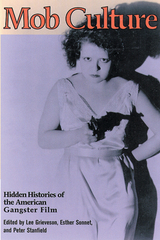 Mob Culture: Hidden Histories of the American Gangster Film
Grieveson, Lee
Rutgers University Press, 2005 Sinister, swaggering, yet often sympathetic, the figure of the gangster has stolen and murdered its way into the hearts of American cinema audiences. Despite the enduring popularity of the gangster film, however, traditional criticism has focused almost entirely on a few canonical movies such as Little Caesar, Public Enemy, and The Godfather trilogy, resulting in a limited and distorted understanding of this diverse and changing genre. Mob Culture offers a long-awaited, fresh look at the American gangster film, exposing its hidden histories from the Black Hand gangs of the early twentieth century to The Sopranos. Departing from traditional approaches that have typically focused on the "nature" of the gangster, the editors have collected essays that engage the larger question of how the meaning of criminality has changed over time. Grouped into three thematic sections, the essays examine gangster films through the lens of social, gender, and racial/ethnic issues. Destined to become a classroom favorite, Mob Culture is an indispensable reference for future work in the genre.
 Mob Rule in the Ozarks: The Missouri and North Arkansas Railroad Strike, 1921-1923
Kenneth C. Barnes
University of Arkansas Press, 2025 Winner, 2025 J.G. Ragsdale Award (Arkansas Historical Association)
On January 15, 1923, a crowd of more than a thousand angry men assembled in Harrison, Arkansas, near the headquarters of the M&NA Railroad, which ran through the heart of the Ozark Mountains. The mob was prepared to use any measure necessary to end the strike of railroad employees that had dragged on for nearly two years, endangering livelihoods and businesses in an area with few other means of transportation. Supported by local officials, the mob terrorized strikers and sympathizers—many were stripped and beaten, and one man was lynched, hanged from the railroad bridge south of town. Over the next several days, similar riots broke out in other towns along the M&NA line, including Leslie and Heber Springs.
This violence effectively brought to a close one of the longest rail strikes in American history—the only one, in fact, ended by a mob uprising. In Mob Rule in the Ozarks, Kenneth C. Barnes documents how the M&NA Railroad strike reflected some of the major economic concerns that preoccupied the United States in the wake of World War I, and created a rupture within communities of the Ozarks that would take years to heal. The conflict also foreshadowed, for both the region and the country, the pendulum’s swing back to moneyed interests, away from Progressive Era gains for labor. Poignantly for Barnes, who sees parallels between this historic struggle and present-day political tensions, the strike revealed the fragile line between civil order and mob rule.
Mobile and Wireless Communications: Key technologies and future applications
Peter Smyth
The Institution of Engineering and Technology, 2004 Two of the fastest growing sectors of communications today are mobile and Internet, both of which have had a profound effect on people's lives. The convergence between these two sectors not only presents great opportunities for the future of 'unplugged' telecommunications but also great challenges in understanding the relative position of different technologies in this future.
Mobile Biometrics
Guodong Guo
The Institution of Engineering and Technology, 2017 Mobile biometrics - the use of physical and/or behavioral characteristics of humans to allow their recognition by mobile/smart phones - aims to achieve conventional functionality and robustness while also supporting portability and mobility, bringing greater convenience and opportunity for its deployment in a wide range of operational environments from consumer applications to law enforcement. But achieving these aims brings new challenges such as issues with power consumption, algorithm complexity, device memory limitations, frequent changes in operational environment, security, durability, reliability, and connectivity. Mobile Biometrics provides a timely survey of the state of the art research and developments in this rapidly growing area.
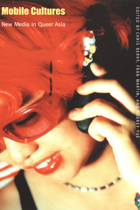 Mobile Cultures: New Media in Queer Asia
Chris Berry, Fran Martin, and Audrey Yue, eds.
Duke University Press, 2003 Mobile Cultures provides much-needed, empirically grounded studies of the connections between new media technologies, the globalization of sexual cultures, and the rise of queer Asia. The availability and use of new media—fax machines, mobile phones, the Internet, electronic message boards, pagers, and global television—have grown exponentially in Asia over the past decade. This explosion of information technology has sparked a revolution, transforming lives and lifestyles, enabling the creation of communities and the expression of sexual identities in a region notorious for the regulation of both information and sexual conduct. Whether looking at the hanging of toy cartoon characters like “Hello Kitty” from mobile phones to signify queer identity in Japan or at the development of queer identities in Indonesia or Singapore, the essays collected here emphasize the enormous variance in the appeal and uses of new media from one locale to another. Scholars, artists, and activists from a range of countries, the contributors chronicle the different ways new media galvanize Asian queer communities in Taiwan, South Korea, Japan, Indonesia, Thailand, Malaysia, India, and around the world. They consider phenomena such as the uses of the Internet among gay, lesbian, or queer individuals in Taiwan and South Korea; the international popularization of Japanese queer pop culture products such as Yaoi manga; and a Thai website’s reading of a scientific tract on gay genetics in light of Buddhist beliefs. Essays also explore the politically subversive possibilities opened up by the proliferation of media technologies, examining, for instance, the use of Cyberjaya—Malaysia’s government-backed online portal—to form online communities in the face of strict antigay laws. Contributors. Chris Berry, Tom Boellstorff, Larissa Hjorth, Katrien Jacobs, Olivia Khoo, Fran Martin, Mark McLelland, David Mullaly, Baden Offord, Sandip Roy, Veruska Sabucco, Audrey Yue
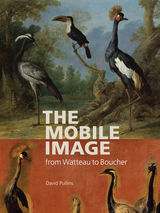 The Mobile Image from Watteau to Boucher
David Pullins
J. Paul Getty Trust, The, 2024 Reframing long-held assumptions about what distinguishes fine from decorative art, this innovative study explores a mode of making, seeing, and thinking that slices across eighteenth-century visual culture.
This book provides a new way of thinking about eighteenth-century French art and visual culture by prioritizing production over reception. Abandoning the ideologically driven discourse that distinguished fine from decorative art between the 1690s and 1770s, The Mobile Image reveals how the two have been inextricably bound from the earliest stages of artistic instruction through the daily life of painters’ workshops. In this study, author David Pullins defines artisanal and artistic means of learning, seeing, and making through a system of “mobile images”: motifs that were effectively engineered for mobility and designed never to be definitive, always awaiting replication and circulation. He examines the careers of Antoine Watteau, Jean-Baptiste Oudry, and François Boucher, situating them against a much broader cast of actors—such as printmakers, publishers, anonymous studio assistants, and architects, among others—to place eighteenth-century painting within a wider context of media and making.
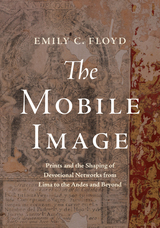 The Mobile Image: Prints and the Shaping of Devotional Networks from Lima to the Andes and Beyond
Emily C. Floyd
University of Texas Press, 2025 A study of the production and movement of prints in colonial South America. Printed images have had a central place in art-historical studies of colonial Spanish America, but scholars have typically focused on imported prints, designed and produced in Europe. The Mobile Image focuses instead on works printed in colonial Lima, generating there a distinctive print culture that served local and regional needs, while also appealing to European print consumers. Inexpensive, easily transportable, and numerous, Lima’s prints traversed the varied geographies of the Viceroyalty of Peru both as loose sheets and within the protective covers of printed books. In the process, limeño devotional prints encouraged the development of shared regional imaginaries about the sacred Andean landscape, a space marked by miracle-working Virgins, potential saints, and powerful images of Christ. These same prints traveled abroad, where they promoted iconographies developed in Lima and influenced European conceptions of the Andes. Simultaneously, the visual language of limeño prints often challenges conventional approaches to interpreting colonial depictions of race. In analyzing limeño prints, and the identities of their makers, patrons, and consumers, The Mobile Image demonstrates that race is harder to recognize in colonial images than we might think. Unearthing hundreds of forgotten prints, Emily C. Floyd provides a fresh resource for interpreting colonial artworks, troubling established understandings of their aesthetics, and compelling us to reexamine colonial South American material cultures.
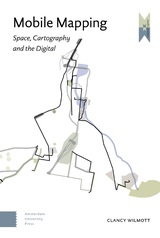 Mobile Mapping: Space, Cartography and the Digital
Clancy Wilmott
Amsterdam University Press, 2020 This book argues for a theory of mobile mapping, a situated and spatial approach towards researching how everyday digital mobile media practices are bound up in global systems of knowledge and power. Drawing from literature in media studies and geography -- and the work of Michel Foucault and Doreen Massey -- it examines how geographical and historical material, social, and cultural conditions are embedded in the way in which contemporary (digital) cartographies are read, deployed, and engaged. This is explored through seventeen walking interviews in Hong Kong and Sydney, as potent discourses like cartographic reason continue to transform and weave through the world in ways that haunt mobile mapping and bring old conflicts into new media. In doing so, Mobile Mapping offers an interdisciplinary rethinking about how multiple translations of spatial knowledges between rational digital epistemologies and tacit ways of understanding space and experience might be conceptualized and researched.
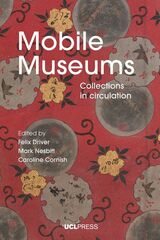 Mobile Museums: Collections in Circulation
Edited by Felix Driver, Mark Nesbitt, and Caroline Cornish
University College London, 2021 An argument for the importance of circulation in the study of museum collections, both past and present.
How did the process of the circulation re-examine, inform, and unsettle common assumptions about the way museum collections have evolved over time and space? Mobile Museums presents an argument for the importance of circulation in the study of museum collections, both past and present. It brings together a diverse array of international scholars and curators from a variety of disciplines to consider the mobility of collections, especially in the context of Indigenous community engagement. By foregrounding the question of circulation, the book represents a paradigm shift in the understanding of the history and future uses of museum collections. Taking on a global perspective and addressing a variety of types of collection, including the botanical, ethnographic, economic, and archaeological, the book helps us to understand why the mobility of museum collections was a fundamental aspect of their history—and why it continues to matter today.
The Mobile Nation: España Cambia de Piel (1954-1964)
Tatjana Pavlovic
Intellect Books, 2011 The last five years have witnessed a surge in publications on Spanish cinema and Spanish cultural studies, but the subject of consumer culture in Spain has been neglected until now. The Mobile Nation: España cambia de piel (1954–1964) presents the first systematic treatment of this crucial period during Spain’s transition to modernity and highlights the forces that converged during this dramatic decade to change the face of Spain. Drawing from the methodologies of literature, film studies, cultural studies, feminist theory, and history, España cambia de piel explores consumer culture in Spanish media, mass tourism, and the national automobile manufacturing industry from 1954 to 1964 and offers valuable insight to postmodern Spain’s transformation and trends.
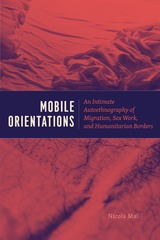 Mobile Orientations: An Intimate Autoethnography of Migration, Sex Work, and Humanitarian Borders
Nicola Mai
University of Chicago Press, 2018 Despite continued public and legislative concern about sex trafficking across international borders, the actual lives of the individuals involved—and, more importantly, the decisions that led them to sex work—are too often overlooked. With Mobile Orientations, Nicola Mai shows that, far from being victims of a system beyond their control, many contemporary sex workers choose their profession as a means to forge a path toward fulfillment.
Using a bold blend of personal narrative and autoethnography, Mai provides intimate portrayals of sex workers from sites including the Balkans, the Maghreb, and West Africa who decided to sell sex as the means to achieve a better life. Mai explores the contrast between how migrants understand themselves and their work and how humanitarian and governmental agencies conceal their stories, often unwittingly, by addressing them all as helpless victims. The culmination of two decades of research, Mobile Orientations sheds new light on the desires and ambitions of migrant sex workers across the world.
Mobile Screens: The Visual Regime of Navigation
Nanna Verhoeff
Amsterdam University Press, 2012 As far as interaction with screens is concerned, the given technology of particular interactive devices entails an ambiguous status of screens: what is shown on the screen has to do with how one interacts with it, that is, we can almost literally see what we are doing. This study is devoted to a theoretical exploration of intersections between mobility and visuality from a historical-comparative perspective, addressing the mobility of visual experience and the screen-based access to such experiences in a range of case studies.
The author develops the concept through five chapters and analyzes a variety of contemporary screen technologies and the cultural practices involving these screen-based configurations – the ways in which we engage with screens as interfaces with spatial, temporal, and haptic experiences.
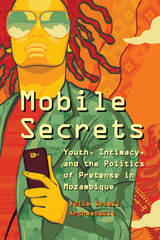 Mobile Secrets: Youth, Intimacy, and the Politics of Pretense in Mozambique
Julie Soleil Archambault
University of Chicago Press, 2017 Now part and parcel of everyday life almost everywhere, mobile phones have radically transformed how we acquire and exchange information. Many anticipated that in Africa, where most have gone from no phone to mobile phone, improved access to telecommunication would enhance everything from entrepreneurialism to democratization to service delivery, ushering in socio-economic development.
With Mobile Secrets, Julie Soleil Archambault offers a complete rethinking of how we understand uncertainty, truth, and ignorance by revealing how better access to information may in fact be anything but desirable. By engaging with young adults in a Mozambique suburb, Archambault shows how, in their efforts to create fulfilling lives, young men and women rely on mobile communication not only to mitigate everyday uncertainty but also to juggle the demands of intimacy by courting, producing, and sustaining uncertainty. In their hands, the phone has become a necessary tool in a wider arsenal of pretense—a means of creating the open-endedness on which harmonious social relations depend in postwar postsocialist Mozambique. As Mobile Secrets shows, Mozambicans have harnessed the technology not only to acquire information but also to subvert regimes of truth and preserve public secrets, allowing everyone to feign ignorance about the workings of the postwar intimate economy.
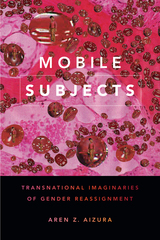 Mobile Subjects: Transnational Imaginaries of Gender Reassignment
Aren Z. Aizura
Duke University Press, 2018 The first famous transgender person in the United States, Christine Jorgensen, traveled to Denmark for gender reassignment surgery in 1952. Jorgensen became famous during the ascent of postwar dreams about the possibilities for technology to transform humanity and the world. In Mobile Subjects Aren Z. Aizura examines transgender narratives within global health and tourism economies from 1952 to the present. Drawing on an archive of trans memoirs and documentaries as well as ethnographic fieldwork with trans people obtaining gender reassignment surgery in Thailand, Aizura maps the uneven use of medical protocols to show how national and regional health care systems and labor economies contribute to and limit transnational mobility. Aizura positions transgender travel as a form of biomedical tourism, examining how understandings of race, gender, and aesthetics shape global cosmetic surgery cultures and how economic and racially stratified marketing and care work create the ideal transgender subject as an implicitly white, global citizen. In so doing, he shows how understandings of travel and mobility depend on the historical architectures of colonialism and contemporary patterns of global consumption and labor.
Mobile Technologies for Delivering Healthcare in Remote, Rural or Developing Regions
Pradeep Kumar Ray
The Institution of Engineering and Technology, 2020 This edited book explores the use of mobile technologies such as phones, drones, robots, apps, and wearable monitoring devices for improving access to healthcare for socially disadvantaged populations in remote, rural or developing regions. This book brings together examples of large scale, international projects from developing regions of China and Belt and Road countries from researchers in Australia, Bangladesh, Denmark, Norway, Japan, Spain, Thailand and China. The chapters discuss the challenges presented to those seeking to deploy emerging mobile technologies (e.g., smartphones, IoT, drones, robots etc.) for healthcare (mHealth) in developing countries and discuss the solutions undertaken in these case study projects.
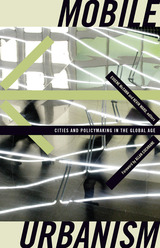 Mobile Urbanism: Cities and Policymaking in the Global Age
Eugene McCann
University of Minnesota Press, 2010 Mobile Urbanism provides a unique set of perspectives on the current global-urban condition. Drawing on cutting-edge theoretical work, leading geographers reveal that cities are not isolated objects of study; rather, they are dynamic, global–local assemblages of policies, practices, and ideas.
The essays in this volume argue for a theorizing of both urban policymaking and place-making that understands them as groups of territorial and relational geographies. It broadens our comprehension of agents of transference, reconceiving how policies are made mobile, and acknowledging the importance of interlocal policy mobility. Through the richness of its empirical examples from Europe, North America, South America, Africa, Asia, and Australia, contributors bring to light the significant methodological challenges that researchers face in the study of an urban–global, territorial–relational conceptualization of cities and suggest productive new approaches to understanding urbanism in a networked world.
Contributors: S. Harris Ali, York U, Toronto; Allan Cochrane, Open U; Roger Keil , York U, Toronto; Doreen Massey, Open U; Donald McNeill, U of Western Sydney; Jamie Peck, U of British Columbia; Jennifer Robinson, University College London.
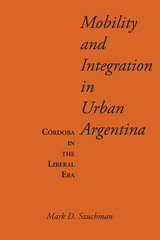 Mobility and Integration in Urban Argentina: Córdoba in the Liberal Era
By Mark D. Szuchman
University of Texas Press, 1981 Between the 1870s, when the great influx of European immigrants began, and the start of World War I, Argentina underwent a radical alteration of its social composition and patterns of economic productivity. Mark Szuchman, in this groundbreaking study, examines the occupational, residential, educational, and economic patterns of mobility of some four thousand men, women, and children who resided in Córdoba, Argentina's most important interior city, during this changeful era. Through several kinds of samples, Szuchman provides a widely encompassing social picture of Córdoba, describing, among others, the unskilled laborer, the immigrant bachelor in search of roots and identity, the merchant seeking or giving credit, and the member of the elite, blind to some of the realities around him. The challenge that the pursuit of security entailed for most people and the failure of so many to persist successfully form a large part of that picture. The author has made ample use of quantitative techniques, but secondary materials are also utilized to provide social perspectives that round out and humanize the quantitative data. The use of record linkage as the essential research method makes this work the first book on Argentina to follow similar and very successful research methodologies employed by U.S. historians.
 Mobility and Masks: Cultural Identity in Travel Literature
Elizabeth C. Goldsmith
Harvard University Press Travelers have always experimented with disguise while observing the disguises of others. Each of the chapters in Mobility and Masks illustrates the strategies of concealment in the experience of travel: a seventeenth-century German aristocrat discovers new freedom as she travels incognito, Jesuits write home from China in the eighteenth century about how costume changes serve their mission, a Chinese opera star reflects on his own masked art during a tour of Russia in 1935. Masking can be a racial marker, as shown in two nineteenth-century accounts: an English woman encountering the creole culture of the West Indies and a French woman observing how cosmetic beauty is defined in Shanghai. Fictional representations of the masked traveler are illustrative, too: masked voices in the lyric poetry of Horace, the masked woman as an obstacle in classic adventure tales, the failure of cultural masking in the story of a modern immigrant.
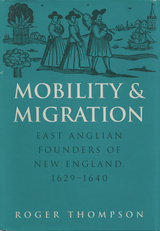 Mobility and Migration: East Anglian Founders of New England, 1629-1640
Roger Thompson
University of Massachusetts Press, 1994 During the 1630s, more than 14,000 people sailed from Britain bound for New England, constituting what has come to be known as the Great Migration. This book offers the most extensive study of these emigrants ever undertaken. Focusing on 2,000 individuals who moved from the five counties of eastern England, it provides historians with important new findings on mobility, family life, kinship networks, and community cohesion." "Roger Thompson reveals the personal experiences and ancestral histories of the emigrants. He follows them across the Atlantic and investigates their lives and achievements in the New World. Distinguising between such groups as gentry, entrepreneurs, artisans, farmers, and servants, he explores whether the migration tended to be a solitary uprooting from a stable and predictable world of familiar neighborhoods or simply a longer move among many relocations." "Thompson also sheds light on the issue of motivation: Were these settlers pulled by the hope of eventual enrichment or of founding a purified society, or were they pushed by intolerance and persecution at home? Did they see New England as a haven of escape or an opportunity to exploit? Did New Englanders seek to replicate "English ways," preserving traditional culture and society, or did they embrace change and innovation? Mobility and Migration provides a wealth of new evidence for historians of both early modern England and colonial America.
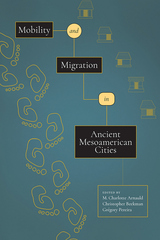 Mobility and Migration in Ancient Mesoamerican Cities
M. Charlotte Arnauld
University Press of Colorado, 2024 Mobility and Migration in Ancient Mesoamerican Cities is the first focused book-length discussion of migration in central Mexico, west Mexico and the Maya region, presenting case studies on population movement in and among Classic, Epiclassic, and Postclassic Mesoamerican societies and polities within the framework of urbanization and de-urbanization. Looking beyond the conceptual dichotomy of sedentism versus mobility, the contributors show that mobility and migration reveal a great deal about the formation, development, and decline of town- and city-based societies in the ancient world.
In a series of data-rich chapters that address specific evidence for movement in their respective study areas, an international group of scholars assesses mobility through the isotopic and demographic analysis of human remains, stratigraphic identification of gaps in occupation, and local intensification of water capture in the Maya lowlands. Others examine migration through the integration of historic and archaeological evidence in Michoacán and Yucatán and by registering how daily life changed in response to the influx of new people in the Basin of Mexico.
Offering a range of critical insights into the vital and under-studied role that mobility and migration played in complex agrarian societies, Mobility and Migration in Ancient Mesoamerican Cities will be of value to Mesoamericanist archaeologists, ethnohistorians, and bioarchaeologists and to any scholars working on complex societies.
Contributors:
Jaime J. Awe, Meggan Bullock, Sarah C. Clayton, Andrea Cucina, Véronique Darras, Nicholas P. Dunning, Mélanie Forné, Marion Forest, Carolyn Freiwald, Elizabeth Graham, Nancy Gonlin, Julie A. Hoggarth, Linda Howie, Elsa Jadot, Kristin V. Landau, Eva Lemonnier, Dominique Michelet, David Ortegón Zapata, Prudence M. Rice, Thelma N. Sierra Sosa, Michael P. Smyth, Vera Tiesler, Eric Weaver
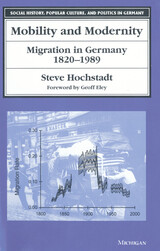 Mobility and Modernity: Migration in Germany, 1820-1989
Steve Hochstadt
University of Michigan Press, 1999 Mobility and Modernity uses voluminous German data on migrations over the past two centuries to demonstrate why conventional assumptions about the relationship between mobility and modernity must be revised.
Thus far the changing total volume of migration has not been traced over a long period for any country. Unique migration registration statistics, both detailed and broadly geographical in coverage, allow the precise plotting of migration rates in Germany since 1820. Steve Hochstadt combines careful quantitative methods, easily understood numerical data, and social analysis based upon broad reading in German social history to show that current beliefs about the direction and timing of changes in German mobility, which have been based on late nineteenth-century anxieties about urbanization and industrialization, do not match the data.
Migration rates in Germany rose continuously throughout the nineteenth century, and have fallen during the twentieth century. Mobility, Hochstadt argues, was not an unprecedented accompaniment to industrialization, but a traditional rural response to specific economic changes. Hochstadt's more precise analysis of urban in- and outmigration shows the mechanism of urbanization to have been the migration of families rather than the much greater, but also more circular, migration of single men and women.
Hochstadt demonstrates the importance of examining historical behavior, powerfully justifying the methods of historical demography as a path to social understanding. The data and specific conclusions are German, but the methods and reinterpretaion of migration history have much wider application, both to other modern European nations and to currently developing countries. Those who study the modern social history of Europe, the mechanisms that formed urban working classes, and the methods of historical demography will be interested in Hochstadt's work.
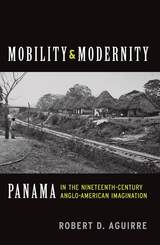 Mobility and Modernity: Panama in the Nineteenth-Century Anglo-American Imagination
Robert D. Aguirre
Ohio State University Press, 2017 Mobility and Modernity: Panama in the Nineteenth-Century Anglo-American Imagination rewrites the history of the Panama Canal, assessing for the first time the literary culture of the preceding decades. In this period, U.S. and British writers and visual artists developed sophisticated languages of mobility, time, and speed to cast the isthmus as an in-between place, a point of connection to more important destinations. These discourses served an important role in their own day and laid the imaginative ground for the canal to come.
In this study, Robert D. Aguirre provides bold new interpretations of Anthony Trollope, John Lloyd Stephens, and Eadweard Muybridge and also recovers information about literary communities previously lost to history. Mobility and Modernity shows how Panama became defined as a site of incipient globalization and a crucial link of empire. Across this narrow strip of land people and things traveled, technology developed, and political forces erupted. The isthmus became a site of mobility that paradoxically produced varieties of immobility. Parting ways with histories that celebrate the canal as a mighty engineering feat, Mobility and Modernity reveals a more complex story of cultural conflict that began with the first gold rush news in the late 1840s and continued throughout the century.
Mobility as a Service: Its development, deployment, and future
Beate Kubitz
The Institution of Engineering and Technology, 2024 Mobility-as-a-Service (MaaS) is a much-talked about term in the transportation industry and in transport policy. The goal of MaaS is a shift away from personally-owned modes of transportation and towards mobility solutions that are consumed as a service. Such solutions are typically enabled by digital technologies and platforms. MaaS systems might combine transportation services from public and private transportation providers, like train and carsharing services, through a unified portal to create and manage journeys, which users can pay for with a single account. MaaS offers travellers mobility solutions based on their travel needs.
Mobility in Transition: Migration Patterns after EU Enlargement
Edited by Birgit Glorius, Izabela Grabowska-Lusinska, and Aimee Kuvik
Amsterdam University Press, 2013 Ten central and eastern European countries, along with Cyprus and Malta, joined the European Union in two waves between 2004 and 2007. This volume presents new research on the patterns of migration that resulted from the EU’s enlargement.
The contributors identify and analyze several new groups of migrants, notably young people without family obligations or clear plans for the future. Including case studies on migrants from Poland, Romania, Hungary, and Latvia—as well as on destination countries such as the United Kingdom and Germany—the resulting collection insightfully points towards future migration trends and sets guidelines for further research.
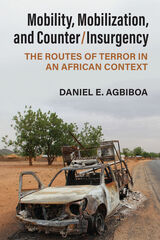 Mobility, Mobilization, and Counter/Insurgency: The Routes of Terror in an African Context
Daniel E. Agbiboa
University of Michigan Press, 2022 In Mobility, Mobilization, and Counter/Insurgency, Daniel Agbiboa takes African insurgencies back to their routes by providing a transdisciplinary perspective on the centrality of mobility to the strategies of insurgents, state security forces, and civilian populations caught in conflict. Drawing on one of the world’s deadliest insurgencies, the Boko Haram insurgency in northeast Nigeria and the Lake Chad region, this well-crafted and richly nuanced intervention offers fresh insights into how violent extremist organizations exploit forms of local immobility and border porosity to mobilize new recruits, how the state’s “war on terror” mobilizes against so-called subversive mobilities, and how civilian populations in transit are treated as could-be terrorists and subjected to extortion and state-sanctioned violence en route. The multiple and intersecting flows analyzed here upend Eurocentric representations of movement in Africa as one-sided, anarchic, and dangerous. Instead, this book underscores the contradictions of mobility in conflict zones as simultaneously a resource and a burden. Intellectually rigorous yet clear, engaging, and accessible, Mobility, Mobilization, and Counter/Insurgency is a seminal contribution that lays bare the neglected linkages between conflict and mobility.
Mobility of Imagination
Dragan Klaic
Central European University Press, 2006 This concise guidebook explains the purpose and expected benefits of international cultural cooperation, its risks and strategic issues, models and success factors. International cultural cooperation is analyzed here as a trajectory of professional development of individual and institutional operators and as a strategy to build an integrated, inclusive cultural space that will enhance the notion of European citizenship. Examples are offered from all parts of Europe and all disciplines. Cultural cooperation has been traditionally conceived as a matter of national governments and national cultural and foreign policy, not in a broad supranational perspective and not from the point of view of cultural operators themselves. Students previously had to rely on occasional articles and some governmental and academic studies of a rather narrow focus and national perspective.
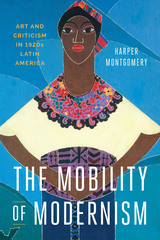 The Mobility of Modernism: Art and Criticism in 1920s Latin America
By Harper Montgomery
University of Texas Press, 2017 Arvey Foundation Book Award, Association for Latin American Art, 2018 Many Latin American artists and critics in the 1920s drew on the values of modernism to question the cultural authority of Europe. Modernism gave them a tool for coping with the mobility of their circumstances, as well as the inspiration for works that questioned the very concepts of the artist and the artwork and opened the realm of art to untrained and self-taught artists, artisans, and women. Writing about the modernist works in newspapers and magazines, critics provided a new vocabulary with which to interpret and assign value to the expanding sets of abstracted forms produced by these artists, whose lives were shaped by mobility. The Mobility of Modernism examines modernist artworks and criticism that circulated among a network of cities, including Buenos Aires, Mexico City, Havana, and Lima. Harper Montgomery maps the dialogues and relationships among critics who published in avant-gardist magazines such as Amauta and Revista de Avance and artists such as Carlos Mérida, Xul Solar, and Emilio Pettoruti, among others, who championed esoteric forms of abstraction. She makes a convincing case that, for these artists and critics, modernism became an anticolonial stance which raised issues that are still vital today—the tensions between the local and the global, the ability of artists to speak for blighted or unincorporated people, and, above all, how advanced art and its champions can enact a politics of opposition.
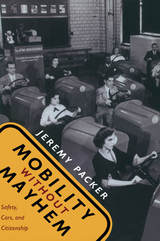 Mobility without Mayhem: Safety, Cars, and Citizenship
Jeremy Packer
Duke University Press, 2007 While Americans prize the ability to get behind the wheel and hit the open road, they have not always agreed on what constitutes safe, decorous driving or who is capable of it. Mobility without Mayhem is a lively cultural history of America’s fear of and fascination with driving, from the mid-twentieth century to the present. Jeremy Packer analyzes how driving has been understood by experts, imagined by citizens, regulated by traffic laws, governed through education and propaganda, and represented in films, television, magazines, and newspapers. Whether considering motorcycles as symbols of rebellion and angst, or the role of CB radio in regulating driving and in truckers’ evasions of those regulations, Packer shows that ideas about safe versus risky driving often have had less to do with real dangers than with drivers’ identities. Packer focuses on cultural figures that have been singled out as particularly dangerous. Women drivers, hot-rodders, bikers, hitchhikers, truckers, those who “drive while black,” and road ragers have all been targets of fear. As Packer debunks claims about the dangers posed by each figure, he exposes biases against marginalized populations, anxieties about social change, and commercial and political desires to profit by fomenting fear. Certain populations have been labeled as dangerous or deviant, he argues, to legitimize monitoring and regulation and, ultimately, to curtail access to automotive mobility. Packer reveals how the boundary between personal freedom and social constraint is continually renegotiated in discussions about safe, proper driving.
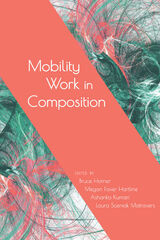 Mobility Work in Composition
Bruce Horner
Utah State University Press, 2020 Mobility Work in Composition explores work in composition from the framework of a mobilities paradigm that takes mobility to be the norm rather than the exception to a norm of stasis and stability.
Both established and up-and-coming scholars bring a diversity of geographic, institutional, and research-based perspectives to the volume, which includes in-depth investigations of specific forms of mobility work in composition, as well as responses to and reflections on those explorations. Eight chapters present specific cases or issues of this work and twelve shorter response chapters follow, identifying key points of intersection and conflict in the arguments and posing new questions and directions to pursue.
Addressing matters of knowledge transfer and meaning translation, immigrant literacy practices, design pedagogy, academic career changes, student websites, research methodologies, school literacy programs, and archives, Mobility Work in Composition asks what mobility in composition means and how, why, and for whom it might work. It will be of broad interest to students and scholars in rhetoric and composition.
Contributors: Anis Bawarshi, Elizabeth Chamberlain, Patrick Danner, Christiane Donahue, Keri Epps, Eli Goldblatt, Rachel Gramer, Timothy Johnson, Jamila Kareem, Carmen Kynard, Rebecca Lorimer Leonard, Andrea Olinger, John Scenters-Zapico, Khirsten L. Scott, Mary P. Sheridan, Jody Shipka, Ann Shivers-McNair, Scott Wible, Rick Wysocki
The Mobilization of Intellect: French Scholars and Writers during the Great War
Martha Hanna
Harvard University Press, 1996 Behind the façade of unity, the French intelligentsia was riven by the same fundamental divisions that had characterized it before the war. For example, the Republican Left argued that German nationalism and militarism began after Kant, with Fichte or Hegel, while the Catholic and nationalistic reactionary Right denounced Kant as the evil inspiration of France's liberal democracy and public school system. The heated rhetoric of the war and the unbearable loss of young lives, says Hanna, lent weight to a redefinition of French culture in national terms—and this, ironically, ended in the cultural conservatism of Vichy France.
This is the first study of the power of French pens and words during and after the Great War. It is a contribution to French and European history as well as to intellectual history.
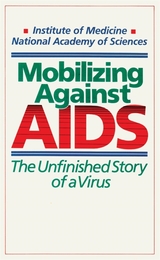 Mobilizing Against AIDS: Revised and Enlarged Edition
Eve K. Nichols
Harvard University Press, 1989 The most important public health problem of our time—AIDS—is also the most shrouded in myth and misinformation. To bring the facts out of the shadows of fear and hysteria, the first edition of Mobilizing against AIDS was published in 1986. This new edition, nearly double the size of the first, interprets the results of the latest research on the disease and possible methods of treatment.
For the foreseeable future the vast majority of AIDS cases will occur among groups that have already experienced major losses: homosexual and bisexual men, intravenous drug abusers, people who received blood or blood products before techniques were developed to safeguard the blood supply, heterosexual partners of those at recognized risk of HIV infection, and infants born to infected mothers. Mobilizing against AIDS examines new data on the growth of the epidemic within these groups, as well as on successful and failed attempts to stop the spread of the disease. In addition, it explores the growing problem of AIDS among the urban poor.
This new edition also presents up to date information on how the disease affects the body, including damage to immune cells, bone marrow cells, skin cells, and cells of the cervix and colon. It contains additional discussions of treatment (particularly drug therapy and prospects for a vaccine) and a searching examination of the implications of societal and individual stress caused by the epidemic. In summarizing the events that have taken place in the last few years, Eve K. Nichols has worked closely with the Institute of Medicine, National Academy of Sciences and other key players in the battle against AIDS. Maintaining the clear and nontechnical style that has been so widely acclaimed, Nichols has forged an extraordinarily thorough synthesis that carries an authoritative stamp, ensuring that this new edition will be an indispensable resource for everyone concerned with AIDS and its treatment.
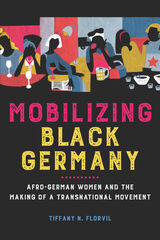 Mobilizing Black Germany: Afro-German Women and the Making of a Transnational Movement
Tiffany N. Florvil
University of Illinois Press, 2020 In the 1980s and 1990s, Black German women began to play significant roles in challenging the discrimination in their own nation and abroad. Their grassroots organizing, writings, and political and cultural activities nurtured innovative traditions, ideas, and practices. These strategies facilitated new, often radical bonds between people from disparate backgrounds across the Black Diaspora. Tiffany N. Florvil examines the role of queer and straight women in shaping the contours of the modern Black German movement as part of the Black internationalist opposition to racial and gender oppression. Florvil shows the multifaceted contributions of women to movement making, including Audre Lorde’s role in influencing their activism; the activists who inspired Afro-German women to curate their own identities and histories; and the evolution of the activist groups Initiative of Black Germans and Afro-German Women. These practices and strategies became a rallying point for isolated and marginalized women (and men) and shaped the roots of contemporary Black German activism. Richly researched and multidimensional in scope, Mobilizing Black Germany offers a rare in-depth look at the emergence of the modern Black German movement and Black feminists’ politics, intellectualism, and internationalism.
Mobilizing Communities: Asset Building as a Community Development Strategy
Edited by Gary Paul Green and Ann Goetting
Temple University Press, 2013 As communities face new social and economic challenges as well as political changes, the responsibilities for social services, housing needs, and welfare programs are being placed at the local government level. But can community-based organizations address these concerns effectively? The editors and contributors to Mobilizing Communities explore how these organizations are responding to these challenges, and how asset-based development efforts can be successful.
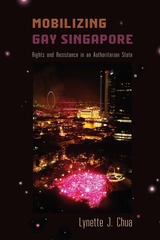 Mobilizing Gay Singapore: Rights and Resistance in an Authoritarian State
Lynette J Chua
Temple University Press, 2015 For decades, Singapore's gay activists have sought equality and justice in a state where law is used to stifle basic civil and political liberties. In her groundbreaking book, Mobilizing Gay Singapore, Lynette Chua asks, what does a social movement look like in an authoritarian state? She takes an expansive view of the gay movement to examine its emergence, development, strategies, and tactics, as well as the roles of law and rights in social processes. Chua tells this important story using in-depth interviews with gay activists, observations of the movement's activities-including "Pink Dot" events, where thousands of Singaporeans gather in annual celebrations of gay pride-movement documents, government statements, and media reports. She shows how activists deploy "pragmatic resistance" to gain visibility and support, tackle political norms that suppress dissent, and deal with police harassment, while avoiding direct confrontations with the law. Mobilizing Gay Singapore also addresses how these brave, locally engaged citizens come out into the open as gay activists and expand and diversify their efforts in the global queer political movement.
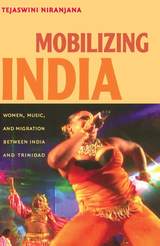 Mobilizing India: Women, Music, and Migration between India and Trinidad
Tejaswini Niranjana
Duke University Press, 2006 Descendants of indentured laborers brought from India to the Caribbean between 1845 and 1917 comprise more than forty percent of Trinidad’s population today. While many Indo-Trinidadians identify themselves as Indian, what “Indian” signifies—about nationalism, gender, culture, caste, race, and religion—in the Caribbean is different from what it means on the subcontinent. Yet the ways that “Indianness” is conceived of and performed in India and in Trinidad have historically been, and remain, intimately related. Offering an innovative analysis of how ideas of Indian identity negotiated within the Indian diaspora in Trinidad affect cultural identities “back home,” Tejaswini Niranjana models a necessary project: comparative research across the global South, scholarship that decenters the “first world” West as the referent against which postcolonial subjects understand themselves and are understood by others. Niranjana draws on nineteenth-century travel narratives, anthropological and historical studies of Trinidad, Hindi film music, and the lyrics, performance, and reception of chutney-soca and calypso songs to argue that perceptions of Indian female sexuality in Trinidad have long been central to the formation and disruption of dominant narratives of nationhood, modernity, and normative sexuality in India. She illuminates debates in India about “the woman question” as they played out in the early-twentieth-century campaign against indentured servitude in the tropics. In so doing, she reveals India’s disavowal of the indentured woman—viewed as morally depraved by her forced labor in Trinidad—as central to its own anticolonial struggle. Turning to the present, Niranjana looks to Trinidad’s most dynamic site of cultural negotiation: popular music. She describes how contested ideas of Indian femininity are staged by contemporary Trinidadian musicians—male and female, of both Indian and African descent—in genres ranging from new hybrids like chutney-soca to the older but still vibrant music of Afro-Caribbean calypso.
 Mobilizing Invisible Assets
Hiroyuki Itami
Harvard University Press, 1987 Successful corporate strategies, says this leading professor of management, depend upon dynamic marshaling of a firm's “invisible assets”—information-based resources such as technological know-how, the visibility of a brand name, or knowledge of a customer base—as well as tangible assets such as people, goods, and money. Hiroyuki Itami emphasizes the ways strategy must fit the firm's external environment (customers, competitors, and ever-changing technology) and also the importance of internal fit within the organization. He uses invisible assets as a single organizing concept to discuss the appropriateness of strategy in each area.
Strategy, Itami insists, must be adapted to rapidly changing conditions and must sometimes be prepared in advance of expected change. The most powerful strategy may often intentionally create imbalance in the short run in order to accumulate invisible assets and energize the organization. Itami examines successful strategies of Japanese firms, which have always operated in an environment of uncertainty and all-pervasive change. Sony and Honda are not the only examples, however—Itami also discusses IBM, Volkswagen, and the Swiss watch industry. The range of examples gives the book wide applicability and appeal to American business executives, who are now facing a similar situation of rapid change.
The clarity and sound construction of Itami's argument will make it useful not only to MBAs and theorists of international business and comparative management, but also to “real world” planners and managers who are currently coping with just the sort of situations Itami describes.
Mobilizing Labour for the Global Coffee Market: Profits from an Unfree Work Regime in Colonial Java
Jan Breman
Amsterdam University Press, 2015 Coffee has been grown on Java for the commercial market since the early eighteenth century, when the Dutch East India Company began buying from peasant producers in the Priangan highlands. What began as a commercial transaction, however, soon became a system of compulsory production. This book shows how the Dutch East India Company mobilised land and labour, why they turned to force cultivation, and what effects the brutal system they installed had on the economy and society.
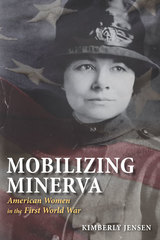 Mobilizing Minerva: American Women in the First World War
Kimberly Jensen
University of Illinois Press, 2007 Mobilizing Minerva: American Women in the First World War analyzes the strategies of female physicians, nurses, and women-at-arms who linked military service with the opportunity to achieve professional and civic goals. Since women armed to defend the state during war could also protect themselves, Kimberly Jensen argues, Americans began to focus on women's relationship to violence--both its wielding against women and women's uses of it. Intense discussions of rape, methods of protecting women, and proper gender roles abound as Jensen draws from rich case studies to show how female thinkers and activists wove wartime choices into long-standing debates about woman suffrage, violence against women, gender-based discrimination, and economic parity. The war created new urgency in these debates, and Jensen forcefully presents the case of women participants and activists: women's involvement in the obligation of citizens to defend the state validated their right of full female citizenship.
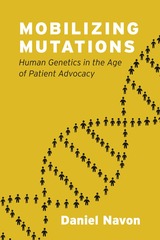 Mobilizing Mutations: Human Genetics in the Age of Patient Advocacy
Daniel Navon
University of Chicago Press, 2019 With every passing year, more and more people learn that they or their young or unborn child carries a genetic mutation. But what does this mean for the way we understand a person? Today, genetic mutations are being used to diagnose novel conditions like the XYY, Fragile X, NGLY1 mutation, and 22q11.2 Deletion syndromes, carving out rich new categories of human disease and difference. Daniel Navon calls this form of categorization “genomic designation,” and in Mobilizing Mutations he shows how mutations, and the social factors that surround them, are reshaping human classification.
Drawing on a wealth of fieldwork and historical material, Navon presents a sociological account of the ways genetic mutations have been mobilized and transformed in the sixty years since it became possible to see abnormal human genomes, providing a new vista onto the myriad ways contemporary genetic testing can transform people’s lives.
Taking us inside these shifting worlds of research and advocacy over the last half century, Navon reveals the ways in which knowledge about genetic mutations can redefine what it means to be ill, different, and ultimately, human.
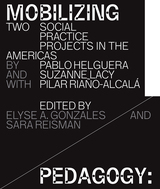 Mobilizing Pedagogy: Two Social Practice Projects in the Americas by Pablo Helguera with Suzanne Lacy and Pilar Riaño-Alcalá
Edited by Elyse A. Gonzales and Sara Reisman
Amherst College Press, 2018 What is—what should be—the place of art in society? Is it merely decorative? Is it only to affirm a given set of cultural preferences? Or should it examine, challenge, even upend these norms to bring open new perspectives for those who experience what artists create?
Social practice artists offer a clear and unflinching answer to this question, setting before us works intended not merely to ask questions but to propose pathways toward large societal change.
In this volume, the work of two social practice artists of different generations and different social locations—Suzanne Lacy and Pablo Helguera—are brought into creative tension by two visionary curators: Elyse A. Gonzalez of the Art, Design & Architecture Museum of the University of California, Santa Barbara, and Sara Reisman of the Shelley and Donald Rubin Foundation of New York. Working together, Gonzales and Reisman bring the work of these two engaged and activist artists into dialogue, showing how art can be not merely the mirror of society but the means of making it more just, more inclusive, and more humane.
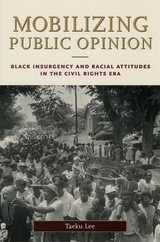 Mobilizing Public Opinion: Black Insurgency and Racial Attitudes in the Civil Rights Era
Taeku Lee
University of Chicago Press, 2002 What motivates us to change our opinions during times of political protest and social unrest? To investigate this question, Taeku Lee's smartly argued book looks to the critical struggle over the moral principles, group interests, and racial animosities that defined public support for racial policies during the civil rights movement, from the late 1940s to the mid-1960s. Challenging the conventional view that public opinion is shaped by elites, Lee crafts an alternate account of the geographic, institutional, historical, and issue-specific contexts that form our political views. He finds that grassroots organizations and local protests of ordinary people pushed demands for social change into the consciousness of the general public. From there, Lee argues, these demands entered the policy agendas of political elites. Evidence from multiple sources including survey data, media coverage, historical accounts, and presidential archives animate his argument.
Ultimately, Mobilizing Public Opinion is a timely, cautionary tale about how we view public opinion and a compelling testament to the potential power of ordinary citizens.
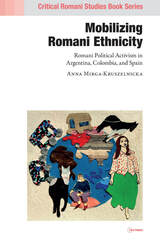 Mobilizing Romani Ethnicity: Romani Political Activism in Argentina, Colombia and Spain
Anna Mirga-Kruszelnicka
Central European University Press, 2022 The Roma issue is generally treated as a European matter. Indeed, the Roma are the largest European minority—their presence outside of Europe is a result of various waves of migration over the past four hundred years. Likewise, the stereotypes associated with the Roma—the problematized, stigmatized status of a “Gypsy” as well as the historical and contemporary manifestations of antigypsyism—are also of European origin. This book claims, however, that the perception of Roma being strictly a European issue is flawed, and that re-connecting the Roma issue globally represents an important learning experience and an added value. The book offers a critical exploration of Romani political activism in Colombia and Argentina, and compares it to that in Spain, narrated from the intimate perspective of Romani actors themselves. By outlining parallel lineages of Romani activism in three countries and on two continents, the author arrives at broad conclusions regarding the nature of ethnic mobilization. Mirga-Kruszelnicka proposes a new synergetic conceptualization of this multidirectional concept as an interplay between political opportunities, mobilizing structures, and frames of identity. Contributing to the vivid debate about the relationship between the researcher and the researched, the book also includes an original discussion of the positionality of scholars of Romani background.
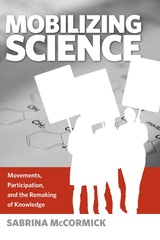 Mobilizing Science: Movements, Participation, and the Remaking of Knowledge
Sabrina McCormick
Temple University Press, 2009 Mobilizing Science theoretically and empirically explores the rise of a new kind of social movement—one that attempts to empower citizens through the use of expert scientific research. Sabrina Mccormick advances theories of social movements, development, and science and technology studies by examining how these fields intersect in cases around the globe. Mccormick grounds her argument in two very different case studies: the anti-dam movement in Brazil and the environmental breast cancer prevention movement in the U.S. These, and many other cases, show that the scientization of society, where expert knowledge is inculcated in multiple institutions and lay people are marginalized, give rise to these new types of movements. While activists who consequently engage in science often instigate new methods that result in new findings and scientific tools, these movements still often fail due to superficial participatory institutions and tightly knit corporate/government relationships.
Mobilizing the Faithful: Militant Islamist Groups and Their Constituencies
Stefan Malthaner
Campus Verlag, 2011 One of the keys to dealing with militant Islamic groups is understanding how they work with, relate to, and motivate their constituencies. Mobilizing the Faithful offers a pair of detailed case studies—of the Egyptian groups al-Jamaa al-Islamiyya and al-Jihad and Lebanon's Hizbullah—to identify typical forms of support relationships, development patterns, and dynamics of both radicalization and restraint. The insights it offers into the crucial relationship between militants and the communities from which they arise are widely applicable to violent insurgencies not only in the Middle East but around the world.
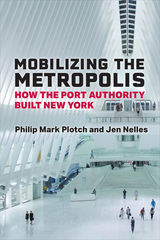 Mobilizing the Metropolis: How the Port Authority Built New York
Philip Mark Plotch and Jen Nelles
University of Michigan Press, 2023 The Port Authority of New York and New Jersey has morphed in ways that would be unrecognizable to its founders. Its mission evolved from improving rail freight to building motor vehicle crossings, airports, office towers, and industrial parks and taking control of a failing commuter rail line. In its early years, the agency was often viewed with admiration; however as it drew up plans, negotiated to take control of airfields and marine terminals, and constructed large bridges and tunnels, the Port Authority became the object of less favorable attention. It was attacked as a “super-government” that must be reined in, while the mayors of New York and Newark argued that it should be broken up with its pieces given to local governments for their own use. Despite its criticisms and travails, for over half a century the Port Authority overcame hurdles that had frustrated other public and private efforts, built the world's longest suspension bridge, and took a leading role in creating an organization to reduce traffic delays in the New York-New Jersey region. How did the Port Authority achieve these successes? And what lessons does its history offer to other cities and regions in the United States and beyond? In a time when public agencies are often condemned as inefficient and corrupt, this history should provide some positive lessons for governmental officials and social reformers. In 2021, the Port Authority marked its 100th birthday. Its history reveals a struggle between the public and private sectors, the challenges of balancing democratic accountability and efficiency, and the tension between regional and local needs. From selected Port Authority successes and failures, Philip Mark Plotch and Jen Nelles produce a significant and engaging account of a powerful governmental entity that offers durable lessons on collaboration, leadership, and the challenge of overcoming complex political challenges in modern America.
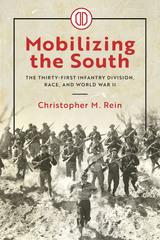 Mobilizing the South: The Thirty-First Infantry Division, Race, and World War II
Christopher M. Rein
University of Alabama Press, 2022 A richly researched account of the social, racial, and political history of a major Deep South infantry division at home and in the Pacific
Chris Rein’s study of the Thirty-First Infantry Division, known officially as the “Dixie Division,” illuminates the complexities in mobilizing American reserve units to meet the global emergency during World War II. Citizen soldiers from Alabama, Florida, Louisiana, and Mississippi formed the core of one of the ninety infantry divisions the Army successfully activated, trained, equipped, and deployed to defeat fascism in Europe and race-based imperialism in the Pacific. But the Army mobilized ideas along with manpower, and soldiers from across the Jim Crow South brought their racial ideas and views with them into the ranks and then exported these across the South Pacific. If the American victory in World War II represents a “double victory” over racism abroad and at home, the division’s service is a cogent reminder that the same powerful force could pull in opposite directions.
While focused on the division’s operational service during the war years, Mobilizing the South: The Thirty-First Infantry Division, Race, and World War II spans the division’s entire service from 1917 to 1967, from an interwar period highlighted by responses to natural disasters and facing down lynch mobs through a postwar service that included protecting activists in the most important struggles of the civil rights era. But the division’s extended service as a training establishment highlights lingering resentments and tensions within the American military system between the active and reserve components. Despite this, the division performed well in General Douglas MacArthur’s island-hopping campaign across the South Pacific. Using official records as well as details drawn from correspondence and oral histories, Rein captures how individual soldiers framed their exposure to a larger world, and how service alongside African American, New Guinean, and Filipino units both reinforced and modified views on race and postwar American society.
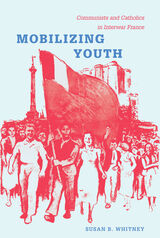 Mobilizing Youth: Communists and Catholics in Interwar France
Susan B. Whitney
Duke University Press, 2009 In Mobilizing Youth, Susan B. Whitney examines how youth moved to the forefront of French politics in the two decades following the First World War. In those years Communists and Catholics forged the most important youth movements in France. Focusing on the competing efforts of the two groups to mobilize the young and harness generational aspirations, Whitney traces the formative years of the Young Communists and the Young Christian Workers, including their female branches. She analyzes the ideologies of the movements, their major campaigns, their styles of political and religious engagement, and their approaches to male and female activism. As Whitney demonstrates, the recasting of gender roles lay at the heart of Catholic efforts and became crucial to Communist strategies in the mid-1930s. Moving back and forth between the constantly shifting tactics devised to mobilize young people and the circumstances of their lives, Whitney gives special consideration to the context in which the youth movements operated and in which young people made choices. She traces the impact of the First World War on the young and on the formulation of generation-based political and religious identities, the role of work and leisure in young people’s lives and political mobilization, the impact of the Depression, the importance of Soviet ideas and intervention in French Communist youth politics, and the state’s attention to youth after the victory of France’s Popular Front government in 1936. Mobilizing Youth concludes by inserting the era’s youth activists and movements into the complicated events of the Second World War.
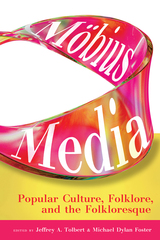 Möbius Media: Popular Culture, Folklore, and the Folkloresque
Jeffrey A. Tolbert
Utah State University Press, 2024 Möbius Media explores the interplay of popular and traditional cultures, reminding readers that expressive cultural forms are never mutually exclusive but exist in a state of creative tension and interconnection, merging and (re)defining one another. With this insightful volume, editors Jeffrey Tolbert and Michael Dylan Foster build on their earlier work, The Folkloresque, by considering how folklore is understood and mobilized within a variety of popular discourses and commercial marketplaces.
The collection challenges readers to consider the stakes of labeling something as folklore or folk. It demonstrates the rhetorical and political potency of ideas such as traditionality, heritage, and community in storytelling venues (including films, games, and even podcasts), in the construction and policing of genres, and in the selling of commodities. By interrogating popular media and expressions that make use of ideas such as folklore, tradition, authenticity, and heritage, Möbius Media further develops the theoretical applicability of the folkloresque concept and encourages productive interdisciplinary dialogue. Through the lens of the folkloresque, scholars can better see the hidden ideologies that inform the marketplace and influence contemporary modes of communication.
This interdisciplinary work will appeal to scholars and students of cultural studies, media studies, popular culture, literature, anthropology, and related areas.
Moby-Dick, or The Whale: 150th Anniversary Edition
Herman Melville, edited by Harrison Hayford, Hershel Parker, and G. Thomas Tanselle
Northwestern University Press, 2001 This edition of Moby-Dick, released in honor of the book's sesquicentennial, is the authoritative text of one of the world's great adventure stories. A crew of whalers sets out in pursuit of a fierce white whale. Their names ring through the canon of American literature: Ishmael, the narrator; Queequeg, a South Seas harpooner; Starbuck, the sober and serious chief mate; and above all Captain Ahab, part-Faust and part-Job, obsessed with the destruction of his foe.
This text of Moby-Dick is an Approved Text of the Center for Scholarly Editions (Modern Language Association of America).
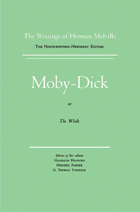 Moby-Dick, or The Whale: Volume 6, Scholarly Edition
Herman Melville, edited by Harrison Hayford, Hershel Parker, and G. Thomas Tanselle
Northwestern University Press, 1988 In Moby Dick Melville set out to write a "mighty book" on "a mighty theme." The editors of this critical text affirm that he succeeded. Nevertheless, their prolonged examination of the novel reveals textual flaws and anomalies that help to explain Melville's fears that his great work was in some ways a hash or a botch. A lengthy historical note also gives a fresh account of Melville's earlier literary career and his working conditions as he wrote; it also analyzes the book's contemporary reception and outlines how it finally achieved fame. Other sections review theories of the book's genesis, detail the circumstances of its publication, and present documents closely relating to the story.
This scholarly edition is based on collations of both editions published during Melville's lifetime, it adopts 185 revisions and corrections from the English edition and incorporates 237 emendations by the series editors. This is an Approved Text of the Center for Editions of American Authors (Modern Language Association of America).
The Moccasin Bluff Site and the Woodland Cultures of Southwestern Michigan
Robert Louis Bettarel and Hale Gilliam Smith
University of Michigan Press, 1973 In this volume, the authors report on the excavation of Moccasin Bluff, a prehistoric site on the banks of the St. Joseph River in Berrien County, Michigan. The features and artifacts (including lithics, ceramics, and stone and bone objects) indicate a series of occupations over roughly 7500 years: from Archaic times to European contact. Betterel and Smith present descriptions and analyses of the structures, artifacts, and burials found at the site. They also situate the site within the Woodland cultures of the region.
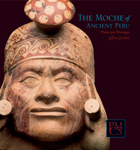 The Moche of Ancient Peru: Media and Messages
Jeffrey Quilter
Harvard University Press, 2010 Peru’s ancient Moche culture is represented in a magnificent collection of artifacts at Harvard’s Peabody Museum. In this richly illustrated volume, Jeffrey Quilter presents a fascinating introduction to this intriguing culture and explores current thinking about Moche politics, history, society, and religion.
Quilter utilizes the Peabody’s collection as a means to investigate how the Moche used various media, particularly ceramics, to convey messages about their lives and beliefs. His presentation provides a critical examination and rethinking of many of the commonly held interpretations of Moche artifacts and their imagery, raising important issues of art production and its role in ancient and modern societies.
The most up-to-date monograph available on the Moche—and the first extensive discussion of the Peabody Museum’s collection of Moche ceramics—this volume provides an introduction for the general reader and contributes to ongoing scholarly discussions. Quilter’s fresh reading of Moche visual imagery raises new questions about the art and culture of ancient Peru.
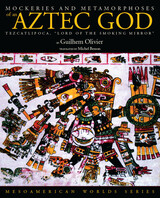 Mockeries and Metamorphoses of an Aztec God: Tezcatlipoca, "Lord of the Smoking Mirror"
Guilhem Olivier
University Press of Colorado, 2003 Guilhem Olivier's Mockeries and Metamorphoses of an Aztec God is a masterful study of Tezcatlipoca, one of the greatest but least understood deities in the Mesoamerican pantheon.
An enigmatic and melodramatic figure, the Lord of the Smoking Mirror was both drunken seducer and mutilated transgressor and although he severely punished those who violated pre-Columbian moral codes, he also received mortal confessions. A patron deity to kings and warriors as well as a protector of slaves, Tezcatlipoca often clashed in epic confrontations with his "enemy brother" Quetzalcoatl, the famed Feathered Serpent. Yet these powers of Mesoamerican mythology collaborated to create the world, and their common attributes hint at a dual character.
In a sophisticated, systematic tour through the sources and problems related to Tezcatlipoca's protean powers and shifting meanings, Olivier guides readers through the symbolic names of this great god, from his representation on skins and stones to his relationship to ritual knives and other deities.
Drawing upon iconographic material, chronicles written in Spanish and in Nahuatl, and the rich contributions of ethnography, Mockeries and Metamorphoses of an Aztec God - like the mirror of Tezcatlipoca in which the fates of mortals were reflected - reveals an important but obscured portion of the cosmology of pre-Columbian Mexico.
Mocking Desire
Drago Jancar
Northwestern University Press, 1998 The first novel by the preeminent Slovenian author Drago Jančar to be published in English, Mocking Desire is a brilliant exploration of conflicting states of experience and comprehension.
Gregor Gradnik, a Slovenian writer, enters the sensual and seething life of New Orleans to teach a creative writing class at a university. Gregor at first acts as only an observer, yet seductive New Orleans soon draws him into a series of bizarre erotic, professional, and social relationships. A profound and entertaining work, Mocking Desire provides the English-speaking world with the perfect introduction to one of Eastern Europe's leading writers.
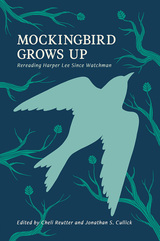 Mockingbird Grows Up: Re-Reading Harper Lee since Watchman
Michele Reutter
University of Tennessee Press, 2020 Although Harper Lee’s Pulitzer Prize–winning novel To Kill a Mockingbird has attracted a great deal of scholarly and popular attention due to its engaging narrative and broad appeal to a sense of justice, little has been done to examine the modern classic through the lens of Lee’s controversial “lost” novel Go Set a Watchman, published unexpectedly a year before the author’s death. In Mockingbird Grows Up: Re-Reading Harper Lee since Watchman, Cheli Reutter and Jonathan S. Cullick assemble a team of scholars to take on the task of interpreting, contextualizing, and deconstructing To Kill a Mockingbird in the wake of Go Set a Watchman. The essays contained in this groundbreaking volume cover a range of literary topics, such as race, sexuality, language, and reading contexts. Critically, the volume revisits the question of African American characterization in Lee’s work and reexamines the development of Atticus Finch, a character long believed to be an exemplar of justice and virtue in Lee’s fiction. And perhaps most imperative, the editors take on questions regarding the publication of Go Set a Watchman, and Holly Blackford contributes an essay that places Go Set a Watchman within the pantheon of American literature.
Literary scholars, educators, and those interested in southern literature will appreciate the new light this publication sheds on a classic American novel. Mockingbird Grows Up offers a deeper understanding of a canonical American work and prepares a new generation to engage with Harper Lee’s appealing prose, complex characters, and influential metaphors.
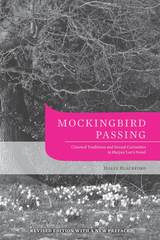 Mockingbird Passing: Closeted Traditions and Sexual Curiosities in Harper Lee's Novel
Holly Blackford
University of Tennessee Press, 2011
How often does a novel earn its author both the Presidential Medal of Freedom, awarded to Harper Lee by George W. Bush in 2007, and a spot on a list of “100 best gay and lesbian novels”? Clearly, To Kill a Mockingbird, Lee’s Pulitzer Prize–winning tale of race relations and coming of age in Depression-era Alabama, means many different things to many different people. In Mockingbird Passing, Holly Blackford invites the reader to view Lee’s beloved novel in parallel with works by other iconic American writers—from Emerson, Whitman, Stowe, and Twain to James, Wharton, McCullers, Capote, and others. In the process, she locates the book amid contesting literary traditions while simultaneously exploring the rich ambiguities that define its characters.
Blackford finds the basis of Mockingbird’s broad appeal in its ability to embody the mainstream culture of romantics like Emerson and social reform writers like Stowe, even as alternative canons—southern gothic, deadpan humor, queer literatures, regional women’s novels—lurk in its subtexts. Central to her argument is the notion of “passing”: establishing an identity that conceals the inner self so that one can function within a closed social order. For example, the novel’s narrator, Scout, must suppress her natural tomboyishness to become a “lady.” Meanwhile, Scout’s father, Atticus Finch, must contend with competing demands of thoughtfulness, self-reliance, and masculinity that ultimately stunt his effectiveness within an unjust society. Blackford charts the identity dilemmas of other key characters—the mysterious Boo Radley, the young outsider Dill (modeled on Lee’s lifelong friend Truman Capote), the oppressed victim Tom Robinson—
in similarly intriguing ways. Queer characters cannot pass unless, like the narrator, Miss Maudie, and Cal, they split into the “modest double life.”
In uncovering To Kill a Mockingbird’s lively conversation with a diversity of nineteenth- and twentieth-century writers and tracing the equally diverse journeys of its characters, Blackford offers a myriad of fresh insights into why the novel has retained its appeal for so many readers for over fifty years. At once Victorian, modern, and postmodern, Mockingbird passes in many canons.
Holly Blackford, an associate professor of English at Rutgers University–Camden, has published extensively in the fields of American literature and children’s literature.
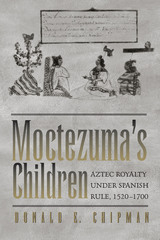 Moctezuma's Children: Aztec Royalty under Spanish Rule, 1520–1700
By Donald E. Chipman
University of Texas Press, 2005 Though the Aztec Empire fell to Spain in 1521, three principal heirs of the last emperor, Moctezuma II, survived the conquest and were later acknowledged by the Spanish victors as reyes naturales (natural kings or monarchs) who possessed certain inalienable rights as Indian royalty. For their part, the descendants of Moctezuma II used Spanish law and customs to maintain and enhance their status throughout the colonial period, achieving titles of knighthood and nobility in Mexico and Spain. So respected were they that a Moctezuma descendant by marriage became Viceroy of New Spain (colonial Mexico's highest governmental office) in 1696. This authoritative history follows the fortunes of the principal heirs of Moctezuma II across nearly two centuries. Drawing on extensive research in both Mexican and Spanish archives, Donald E. Chipman shows how daughters Isabel and Mariana and son Pedro and their offspring used lawsuits, strategic marriages, and political maneuvers and alliances to gain pensions, rights of entailment, admission to military orders, and titles of nobility from the Spanish government. Chipman also discusses how the Moctezuma family history illuminates several larger issues in colonial Latin American history, including women's status and opportunities and trans-Atlantic relations between Spain and its New World colonies.
Moctezuma's Mexico: Visions of the Aztec World, Revised Edition
Davíd Carrasco
University Press of Colorado, 2003 Updated with a new chapter by Davíd Carrasco describing how the Aztec world has been re-imagined by modern Mexican American communities and Chicano scholars, Moctezuma’s Mexico is a lavishly illustrated volume that provides an in-depth historical profile of the Aztec empire on the eve of its fateful encounter with the Europeans. Beginning with an exploration of Aztec history and cosmovision, the authors and two other prominent scholars-Anthony Aveni and Elizabeth Hill Boone-examine Aztec ceremonies, astronomy, myths, rhetoric, and moral philosophy, as well as controversies in recent Aztec scholarship using poetry, sculpture, painting, and the archaeological record. With nearly 150 full-color illustrations, Moctezuma’s Mexico is an important and handsome book that will appeal to scholars and students of Mexico’s indigenous past.
Modal Logic and Process Algebra
Edited by Alban Ponse, Maarten de Rijke, and Yde Venema
CSLI, 1995 Labelled transition systems are mathematical models for dynamic behaviour, or processes, and thus form a research field of common interest to logicians and theoretical computer scientists. In computer science, this notion is a fundamental one in the formal analysis of programming languages, in particular in process theory. In modal logic, transition systems are the central object of study under the name of Kripke models. This volume collects a number of research papers on modal logic and process theory. Its unifying theme is the notion of a bisimulation. Bisimulations are relations over transition systems, and provide a key tool in identifying the processes represented by these structures. The volume offers an up-to-date overview of perspectives on labeled transition systems and bisimulations.
Modal Logic for Open Minds
Johan van Benthem
CSLI, 2010 In Modal Logic for Open Minds, Johan van Benthem provides an up-to-date introduction to the field of modal logic, outlining its major ideas and exploring the numerous ways in which various academic fields have adopted it. Van Benthem begins with the basic theories of modal logic, semantics, bisimulation, and axiomatics, and also covers more advanced topics, such as expressive power and computational complexity. The book then moves to a wide range of applications, including new developments in information flow, intelligent agency, and games. Taken together, the chapters show modal logic at the crossroads of philosophy, mathematics, linguistics, computer science, and economics. Most of the chapters are followed by exercises, making this volume ideal for undergraduate and graduate students in philosophy, computer science, symbolic systems, cognitive science, and linguistics.
Modality in Spanish and Combinations of Modal Meanings
Dana Kratochvílová
Karolinum Press, 2019 With a focus on Spanish modality, this book presents Bohumil Zavadil’s theoretical approach—the first such presentation in English—to this category and, consequently, analyzes its possible application to Spanish. Concentrating on specific areas of the Spanish modal system where two modal meanings combine, Dana Kratochvílová integrates theoretical analyses with corpus-based studies from the InterCorp corpus on the choice of mood and the contextual interpretation of selected constructions. Her approachs verifies that areas where two modal meanings meet are a natural part of the Spanish modal system and that the combination of modal meanings has consequences on mood selection, thus shedding new light on the use of the subjunctive in Spanish.
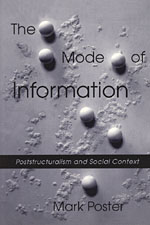 The Mode of Information: Poststructuralism and Social Context
Mark Poster
University of Chicago Press, 1990 When we make phone calls and use computers, electronic devices mediate how we communicate. In each instance, we exchange symbols and information just as we have since humans began speaking and writing. What, then—besides economy of space and time—differentiates electronic communications from ordinary speech and writing?
The difference, Mark Poster argues, is the profound effect electronic mediation exerts on the very way we perceive ourselves and reality. To help decode the linguistic dimensions of our multiple forms of social interaction, he plays upon Marx's theory of the mode of production—the shift to late capitalism has a parallel in the shift from the mode of production to that of information.
Enlisting poststructuralist theory, he links four modes of communication with four poststructuralists: TV ads with Baudrillard, data bases with Foucault, electronic writing with Derrida, and computer science with Lyotard. Mode of Information points the way to a poststructuralist strategy for writing history, a framework well suited to unearthing structures of domination and the means to their disruption.
"An informed, insightful, provocative account of phenomena that have transformed virtually every area of public and private life on our time."—Robert Anchor, American Historical Review
"The importance of Poster's book is unmistakable for he skillfully negotiates between and juxtaposes two wide theoretical domains—electronically mediated communications and poststructuralist theory—about which much has been written, but hardly with the acumen that he brings to bear in a long-awaited critical rapprochement."—Charles J. Stivale, Criticism
 Model Airplanes are Decadent and Depraved: The Glue-Sniffing Epidemic of the 1960s
Thomas Aiello
Northern Illinois University Press, 2015 Model Airplanes are Decadent and Depraved tells the story of the American glue-sniffing epidemic of the 1960s, from the first reports of use to the unsuccessful crusade for federal legislation in the early 1970s. The human obsession with inhalation for intoxication has deep roots, from the oracle at Delphi to Judaic biblical ritual. The discovery of nitrous oxide, ether, and chloroform in the late 18th and early 19th centuries and the later development of paint thinners, varnishes, lighter fluid, polishes, and dry-cleaning supplies provided a variety of publicly available products with organic solvents that could be inhaled for some range of hallucinogenic or intoxicating effect. Model airplane glue was one of those products, but did not appear in warnings until the first reports of problematic behavior appeared in 1959, when children in several western cities were arrested for delinquency after huffing glue. Newspaper coverage both provided the initial shot across the bow for research into the subject and convinced children to give it a try. This “epidemic” quickly spread throughout the nation and the world.
Though the hobby industry began putting an irritant in its model glue products in 1969 to make them less desirable to sniff, that wasn’t what stopped the epidemic. Just as quickly as it erupted, the epidemic stopped when the media coverage and public hysteria stopped, making it one of the most unique epidemics in American history. The nation’s focus drifted from adolescent glue sniffing to the countercultural student movement, with its attendant devotion to drug use, opposition to the Vietnam War, southern race policies, and anti-bureaucracy in general. This movement came to embody a tumultuous era fraught with violence, civil disobedience, and massive sea changes in American life and law—glue sniffing faded by comparison.
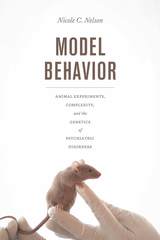 Model Behavior: Animal Experiments, Complexity, and the Genetics of Psychiatric Disorders
Nicole C. Nelson
University of Chicago Press, 2018 Mice are used as model organisms across a wide range of fields in science today—but it is far from obvious how studying a mouse in a maze can help us understand human problems like alcoholism or anxiety. How do scientists convince funders, fellow scientists, the general public, and even themselves that animal experiments are a good way of producing knowledge about the genetics of human behavior? In Model Behavior, Nicole C. Nelson takes us inside an animal behavior genetics laboratory to examine how scientists create and manage the foundational knowledge of their field.
Behavior genetics is a particularly challenging field for making a clear-cut case that mouse experiments work, because researchers believe that both the phenomena they are studying and the animal models they are using are complex. These assumptions of complexity change the nature of what laboratory work produces. Whereas historical and ethnographic studies traditionally portray the laboratory as a place where scientists control, simplify, and stabilize nature in the service of producing durable facts, the laboratory that emerges from Nelson’s extensive interviews and fieldwork is a place where stable findings are always just out of reach. The ongoing work of managing precarious experimental systems means that researchers learn as much—if not more—about the impact of the environment on behavior as they do about genetics. Model Behavior offers a compelling portrait of life in a twenty-first-century laboratory, where partial, provisional answers to complex scientific questions are increasingly the norm.
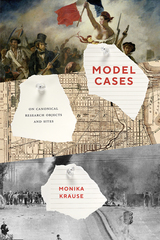 Model Cases: On Canonical Research Objects and Sites
Monika Krause
University of Chicago Press, 2021 In Model Cases, Monika Krause asks about the concrete material research objects behind shared conversations about classes of objects, periods, and regions in the social sciences and humanities. It is well known that biologists focus on particular organisms, such as mice, fruit flies, or particular viruses when they study general questions about life, development, and disease. Krause shows that scholars in the social sciences and humanities also draw on some cases more than others, selecting research objects influenced by a range of ideological but also mundane factors, such as convenience, historicist ideas about development over time, schemas in the general population, and schemas particular to specific scholarly communities.
Some research objects are studied repeatedly and shape our understanding of more general ideas in disproportionate ways: The French Revolution has profoundly influenced our concepts of revolution, of citizenship, and of political modernity, just like studies of doctors have set the agenda for research on the professions. Based on an extensive analysis of the role of model cases in different fields, Krause argues that they can be useful for scholarly communities if they are acknowledged and reflected as particular objects; she also highlights the importance of research strategies based on neglected research objects and neglected combinations of research objects and scholarly concerns.
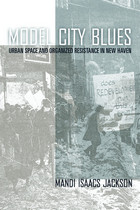 Model City Blues: Urban Space and Organized Resistance in New Haven
Mandi Isaacs Jackson
Temple University Press, 2008 Model City Blues tells the story of how regular people, facing a changing city landscape, fought for their own model of the “ideal city” by creating grassroots plans for urban renewal. Filled with vivid descriptions of significant moments in a protracted struggle, it offers a street-level account of organized resistance to institutional plans to transform New Haven, Connecticut in the 1960s. Anchored in the physical spaces and political struggles of the city, it brings back to center stage the individuals and groups who demanded that their voices be heard. By reexamining the converging class- and race-based movements of 1960s New Haven, Mandi Jackson helps to explain the city's present-day economic and political struggles. More broadly, by closely analyzing particular sites of resistance in New Haven, Model City Blues employs multiple academic disciplines to redefine and reimagine the roles of everyday city spaces in building social movements and creating urban landscapes.
A Model for the Christian Life: Hilary of Poitier's Commentary on the Psalms
Paul C. Burns
Catholic University of America Press, 2012 In this examination of Hilary's treatise, Paul C. Burns discusses the intended audience of Hilary's text and the use of the Psalms by Christians in the fourth century. He identifies Hilary's distinctive perspectives; his dependence on Origen; his Latin theological and exegetical tradition; and the creative directions of Hilary's thought.
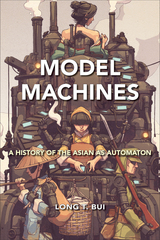 Model Machines: A History of the Asian as Automaton
Long T. Bui
Temple University Press, 2022 In the contemporary Western imagination, Asian people are frequently described as automatons, which disavows their humanity. In Model Machines, Long Bui investigates what he calls Asian roboticism or the ways Asians embody the machine and are given robotic characteristics. Bui offers the first historical overview of the overlapping racialization of Asians and Asian Americans through their conflation with the robot-machine nexus. He puts forth the concept of the “model machine myth,” which holds specific queries about personhood, citizenship, labor, and rights in the transnational making of Asian/America. The case studies in Model Machines chart the representation of Chinese laborers, Japanese soldiers, Asian sex workers, and other examples to show how Asians are reimagined to be model machines as a product of globalization, racism, and colonialism. Moreover, it offers examples of how artists and everyday people resisted that stereotype to consider different ways of being human. Starting from the early nineteenth century, the book ends in the present with the new millennium, where the resurgence of China presages the “rise of the machines” and all the doomsday scenarios this might spell for global humanity at large.
Model Predictive Control for Microgrids: From power electronic converters to energy management
Jiefeng Hu
The Institution of Engineering and Technology, 2021 Microgrids have emerged as a promising solution for accommodating the integration of renewable energy resources. But the intermittency of renewable generation is posing challenges such as voltage/frequency fluctuations, and grid stability issues in grid-connected modes. Model predictive control (MPC) is a method for controlling a process while satisfying a set of constraints. It has been in use for chemical plants and in oil refineries since the 1980s, but in recent years has been deployed for power systems and electronics as well.
Model-Based Parameter Estimation in Computational Electromagnetics
Edmund K. Miller
The Institution of Engineering and Technology, 2025 Computational electromagnetics (CEM) involves modeling the interaction of electromagnetic fields with physical objects and their environment, such as the radiation emitted by antennas and the fields scattered from radar targets.
Model-Based Requirements Engineering
Jon Holt
The Institution of Engineering and Technology, 2011 This book provides a hands-on introduction to model-based requirements engineering and management by describing a set of views that form the basis for the approach. These views take into account each individual requirement in terms of its description, but then also provide each requirement with meaning by putting it into the correct 'context'. A requirement that has been put into a context is known as a 'use case' and may be based upon either stakeholders or levels of hierarchy in a system. Each use case must then be analysed and validated by defining a combination of scenarios and formal mathematical and logic-based proofs that provide the rigour required for safety-critical and mission-critical systems.
Modeling and Dynamic Behaviour of Hydropower Plants
Nand Kishor
The Institution of Engineering and Technology, 2017 Hydropower is a mature and cost-competitive renewable energy source, contributing the bulk of global renewable electricity. Over the past decades, computer technology has led to significant possible improvements in monitoring, diagnostics, protection and control through retrofitting of large plants, and there is potential for additional large plants as well as for smaller installations.
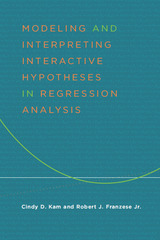 Modeling and Interpreting Interactive Hypotheses in Regression Analysis
Cindy D. Kam and Robert J. Franzese, Jr.
University of Michigan Press, 2007 Social scientists study complex phenomena about which they often propose intricate hypotheses tested with linear-interactive or multiplicative terms. While interaction terms are hardly new to social science research, researchers have yet to develop a common methodology for using and interpreting them. Modeling and Interpreting Interactive Hypotheses in Regression Analysis provides step-by-step guidance on how to connect substantive theories to statistical models and how to interpret and present the results. "Kam and Franzese is a must-have for all empirical social scientists interested in teasing out the complexities of their data."
---Janet M. Box-Steffensmeier, Ohio State University "Kam and Franzese have written what will become the definitive source on dealing with interaction terms and testing interactive hypotheses. It will serve as the standard reference for political scientists and will be one of those books that everyone will turn to when helping our students or doing our work. But more than that, this book is the best text I have seen for getting students to really think about the importance of careful specification and testing of their hypotheses."
---David A. M. Peterson, Texas A&M University "Kam and Franzese have given scholars and teachers of regression models something they've needed for years: a clear, concise guide to understanding multiplicative interactions. Motivated by real substantive examples and packed with valuable examples and graphs, their book belongs on the shelf of every working social scientist."
---Christopher Zorn, University of South Carolina "Kam and Franzese make it easy to model what good researchers have known for a long time: many important and interesting causal effects depend on the presence of other conditions. Their book shows how to explore interactive hypotheses in your own research and how to present your results. The book is straightforward yet technically sophisticated. There are no more excuses for misunderstanding, misrepresenting, or simply missing out on interaction effects!"
---Andrew Gould, University of Notre Dame Cindy D. Kam is Assistant Professor, Department of Political Science, University of California, Davis. Robert J. Franzese Jr. is Associate Professor, Department of Political Science, University of Michigan, and Research Associate Professor, Center for Political Studies, Institute for Social Research, University of Michigan. For datasets, syntax, and worksheets to help readers work through the examples covered in the book, visit: www.press.umich.edu/KamFranzese/Interactions.html
Modeling and Simulation of Complex Communication Networks
Muaz A. Niazi
The Institution of Engineering and Technology, 2019 Modern network systems such as Internet of Things, Smart Grid, VoIP traffic, Peer-to-Peer protocol, and social networks, are inherently complex. They require powerful and realistic models and tools not only for analysis and simulation but also for prediction.
Modeling and Simulation of Complex Power Systems
Antonello Monti
The Institution of Engineering and Technology, 2022 Modern power systems are highly complex due to increasing shares of intermittent renewable energy and distributed generation. Research requires computer simulation and modeling, and knowledge of methods and algorithms.
Modeling and Simulation of HVDC Transmission
Minxiao Han
The Institution of Engineering and Technology, 2021 The development of large-scale renewable generation and load electrification call for highly efficient and flexible electric power integration, transmission and interconnection. High Voltage DC (HVDC) transmission technology has been recognized as the key technology for this scenario. HVDC transmissions, including both the line commutated converter (LCC) HVDC and voltage source converter (VSC) HVDC have played an important role in the modern electric power system. However, with the inclusion of power electronic devices, HVDC introduces the characteristics of nonlinearity and different timescales into the traditional electromechanical system and thus careful modeling and simulation of HVDC transmission are essential for power system design, commissioning, operation and maintenance.
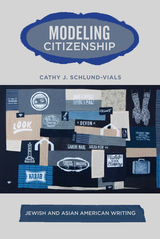 Modeling Citizenship: Jewish and Asian American Writing
Authored by Cathy Schlund-Vials
Temple University Press, 2011 Navigating deftly among historical and literary readings, Cathy Schlund-Vials examines the analogous yet divergent experiences of Asian Americans and Jewish Americans in Modeling Citizenship. She investigates how these model minority groups are shaped by the shifting terrain of naturalization law and immigration policy, using the lens of naturalization, not assimilation, to underscore questions of nation-state affiliation and sense of belonging.
Modeling Citizenship examines fiction, memoir, and drama to reflect on how the logic of naturalization has operated at discrete moments in the twentieth century. Each chapter focuses on two exemplary literary works. For example, Schlund-Vials shows how Mary Antin's Jewish-themed play The Promised Land is reworked into a more contemporary Chinese American context in Gish Jen's Mona in the Promised Land.
In her compelling analysis, Schlund-Vials amplifies the structural, cultural, and historical significance of these works and the themes they address.
 Modeling Japanese-American Trade: A Study of Asymmetric Interdependence
Peter A. Petri
Harvard University Press, 1984 This book examines, in rigorous, quantitative detail, the structure of trade between Japan and the United States, tracing the evolution of trade interdependence and the causes of its increasing intensity. It also looks at sectoral differences in interdependence—at the patterns behind changes in the composition of trade and the complex factors that determine how individual sectors of each economy respond to economic change in all the others.
In the first part, the author designs and estimates a multicountry, multisectoral general equilibrium model. The model is operationalized with careful estimates of the parameters that govern demand, production, and trade in both economies. In the second part, the model is employed to explore various aspects of interdependence and commercial policy. Peter Petri's findings indicate, among other things, that the American and Japanese economies are more closely related than one might judge from the size of their trade. As a result of differences in the structures of the two economies, their interdependence is sharply asymmetric, with economic events in the United States having a greater impact on Japan than vice versa. The study also shows that the roots of bilateral conflict can be traced to structural causes, and suggests that recent structural changes may have increased the incentives for protectionism.
Modeling Nature
Sharon E. Kingsland
University of Chicago Press, 1995 The first history of population ecology traces two generations of science and scientists from the opening of the twentieth century through 1970. Kingsland chronicles the careers of key figures and the field's theoretical, empirical, and institutional development, with special attention to tensions between the descriptive studies of field biologists and later mathematical models. This second edition includes a new afterword that brings the book up to date, with special attention to the rise of "the new natural history" and debates about ecology's future as a large-scale scientific enterprise.
Modeling, Simulation and Control of Electrical Drives
Mohammed Fazlur Rahman
The Institution of Engineering and Technology, 2019 Thanks to advances in power electronics device design, digital signal processing technologies and energy efficient algorithms, ac motors have become the backbone of the power electronics industry. Variable frequency drives (VFD's) together with IE3 and IE4 induction motors, permanent magnet motors, and synchronous reluctance motors have emerged as a new generation of greener high-performance technologies, which offer improvements to process and speed control, product quality, energy consumption and diagnostics analytics.
Modeling the Distribution and Intergenerational Transmission of Wealth
James D. Smith
University of Chicago Press, 1980 This pioneering volume uses modern statistical and simulation techniques to explain the process of wealth transmission and the persistent problem of the unequal distribution of wealth. These papers reflect a shift from the traditional cross-sectional measurement to an intertemporal focus by attempting to model mathematically the actual process by which wealth is acquired and transmitted. There are many questions to be answered: What are the factors influencing saving? What is the role of mating? What decides ownership between spouses? How are rare assets distributed by divorce? What are the patterns of behavior in making gifts and bequests? And what is the effect of the relative ages of the persons involved?
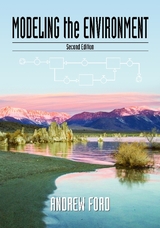 Modeling the Environment, Second Edition
Andrew Ford
Island Press, 2010 Modeling the Environment was the first textbook in an emerging field—the modeling techniques that allow managers and researchers to see in advance the consequences of actions and policies in environmental management. This new edition brings the book thoroughly up to date and reaffirms its status as the leading introductory text on the subject. System dynamics is one of the most widely known and widely used methods of modeling. The fundamental principles of this approach are demonstrated here with a wide range of examples, including geo-hydrology, population biology, epidemiology and economics. The applications demonstrate the transferability of the systems approach across disciplines, across spatial scales, and across time scales. All of the models are implemented with stock and flow software programs such as Stella and Vensim. These programs are easy and fun to learn, and they allow students to develop realistic models within the first few weeks of a college course. System dynamics has emerged as the most common approach in collaborative projects to address environmental problems. The stock and flow structures and the emphasis on feedback control provide a common language that is understood by scientists from many disciplines. Although the interdisciplinary approach described here is widely used in practice, there are few books to aid instruction. Modeling the Environment meets the urgent need for instructional materials in interdisciplinary modeling of environmental systems. Visit http://www.wsu.edu/~forda/AA2nd.html for valuable classroom materials.
Modelling and Parameter Estimation of Dynamic Systems
J.R. Raol
The Institution of Engineering and Technology, 2004 Parameter estimation is the process of using observations from a system to develop mathematical models that adequately represent the system dynamics. The assumed model consists of a finite set of parameters, the values of which are calculated using estimation techniques. Most of the techniques that exist are based on least-square minimisation of error between the model response and actual system response. However, with the proliferation of highspeed digital computers, elegant and innovative techniques like filter error method, genetic algorithms and artificial neural networks are finding more and more use in parameter estimation problems. Modelling and Parameter Estimation of Dynamic Systems presents a detailed examination of many estimation techniques and modelling problems.
Modelling and Simulation of Small Scale Hydro Generation Systems
René Wamkeue
The Institution of Engineering and Technology, 2020 This book provides engineers, researchers and advanced students with the mathematical modelling, control and simulation tools needed for the successful design, long-term management and maintenance of a small scale hydro-power plant (HPP). It also covers the hybrid operation with other small scale renewable power plants as well as the use of a storage system. The book features case studies and test-based design, and all system components are modelled using the well-known state space form technique.
Modelling and Stability of Smart Grids
Marta Molinas
The Institution of Engineering and Technology, 2016 This comprehensive book describes how to systematically assess the stability of electrical grids with a high share of power electronics converters and considers what their presence in the electrical grid entails. It is divided into three areas: Part 1 presents the three fundamental stability analysis methods and tools for power electronics systems; Part 2 examines applications in power utility systems; and Part 3 describes applications in microgrids and mobile power systems.
Modelling Control Systems Using IEC 61499
Alois Zoitl
The Institution of Engineering and Technology, 2014 IEC 61499 is a standard for modelling distributed control systems for use in industrial automation, and is already having an impact on the design and implementation of industrial control systems that involve the integration of programmable logic controllers, intelligent devices and sensors.
Modelling Control Systems Using IEC 61499: Applying function blocks to distributed systems
Robert Lewis
The Institution of Engineering and Technology, 2001 New technologies and standards are emerging which will have a dramatic effect on the design and implementation of future industrial control systems. PLCs and PC-based soft controllers are beginning to use software components, for example function blocks, to business systems. New tools and techniques are needed to design and model these systems, such as UML and modern fieldbus technology. The IEC 61499 standard has been developed specifically to model distributed control systems. Practical tools based on IEC 61499 are likely to emerge soon to model, validate and simulate the behaviour of complex networks of function blocks and it is expected that this standard will become key to highly-developed distributed systems.
 Modelling Distributed Energy Resources in Energy Service Networks
Salvador Acha
The Institution of Engineering and Technology, 2013 The smart-grid concept can mean many things, however there is a consensus that its objective involves seamlessly adopting new technologies to existing infrastructures and maximising the use of resources. Modelling Distributed Energy Resources in Energy Service Networks focuses on modelling two key infrastructures in urban energy systems with embedded technologies. These infrastructures are natural gas and electricity networks and the embedded technologies include cogeneration and electric vehicle devices. The subject is addressed using a holistic modelling framework which serves as a means to an end; this end being to optimise in a coordinated manner the operation of natural gas and electrical infrastructures under the presence of distributed energy resources, thus paving the way in which smart-grids should be managed. The modelling approach developed and presented in this book, under the name 'time coordinated optimal power flow' (TCOPF), functions as a decision maker entity that aggregates and coordinates the available DERs according to multiple criteria such as energy prices and utility conditions. The examples prove the TCOPF acts effectively as an unbiased intermediary entity that manages cost-effective interactions between the connected technologies and the distribution network operators, therefore showcasing an integral approach on how to manage new technologies for the benefit of all stakeholders.
Modelling Enterprise Architectures
Jon Holt
The Institution of Engineering and Technology, 2010 For any organisation to be successful in an increasingly competitive and global working environment, it is essential that there is a clear understanding of all aspects of the business. Given that no two organisations are exactly alike, there is no definitive understanding of exactly what these aspects are as they will depend on the organisation's nature, size and so on. Some of the aspects of the business that must be considered include: process models, process descriptions, competencies, standards, methodologies, infrastructure, people and business goals.
Modelling Methodologies in Analogue Integrated Circuit Design
Günhan Dündar
The Institution of Engineering and Technology, 2020 Modelling Methodologies in Analogue Integrated Circuit Design provides a holistic view of modelling for analogue, high frequency, mixed signal, and heterogeneous systems for designers working towards improving efficiency, reducing design times, and addressing the challenges of representing aging, variability, and other technical challenges at the nanometre scale.
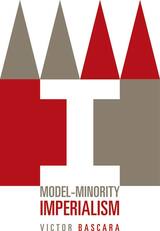 Model-Minority Imperialism
Victor Bascara
University of Minnesota Press, 2006 At the beginning of the twentieth century, soon after the conclusion of the Spanish-American War, the United States was an imperialistic nation, maintaining (often with the assistance of military force) a far-flung and growing empire. After a long period of collective national amnesia regarding American colonialism, in the Philippines and elsewhere, scholars have resurrected the power of “empire” as a way of revealing American history and culture. Focusing on the terms of Asian American assimilation and the rise of the model-minority myth, Victor Bascara examines the resurgence of empire as a tool for acknowledging—and understanding—the legacy of American imperialism. Model-Minority Imperialism links geopolitical dramas of twentieth-century empire building with domestic controversies of U.S. racial order by examining the cultural politics of Asian Americans as they are revealed in fiction, film, and theatrical productions. Tracing U.S. economic and political hegemony back to the beginning of the twentieth century through works by Jessica Hagedorn, R. Zamora Linmark, and Sui Sin Far; discourses of race, economics, and empire found in the speeches of William McKinley and William Jennings Bryan; as well as L. Frank Baum’s The Wonderful Wizard of Oz and other texts, Bascara’s innovative readings uncover the repressed story of U.S. imperialism and unearth the demand that the present empire reckon with its past. Bascara deploys the analytical approaches of both postcolonial studies and Asian American studies, two fields that developed in parallel but have only begun to converge, to reveal how the vocabulary of empire reasserted itself through some of the very people who inspired the U.S imperialist mission.Victor Bascara is assistant professor of English and Asian American studies at the University of Wisconsin, Madison.
 Models for Managing Regional Water Quality
Robert Dorfman
Harvard University Press, 1972 This volume is the latest research report from the Harvard Water Program in the series that began with Design of Water-Resource Systems and includes Simulation Techniques for Design of Water-Resource Systems and Streamflow Synthesis. The emphasis is on the systems analysis of the control of water quality in a river basin or watershed. Classical methods such as low-flow augmentation are analyzed as well as novel ones such as instream aeration and piping of effluents from their point of origin to less harmful points of discharge. Particular attention is paid to the economic evaluation of the methods studied and to the resolution of the political conflicts that are likely to arise in a situation where the costs of combating pollution are borne by different people from those who benefit from the improvement.
The main thesis is that the technical, economic, and political aspects of water quality management have to be considered together in the search for effective, economical, and politically acceptable solutions to the problems of deteriorating water quality. Some practical methods for integrating these diverse considerations in a systems analysis are presented.
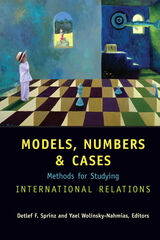 Models, Numbers, and Cases: Methods for Studying International Relations
Detlef F. Sprinz and Yael Wolinsky-Nahmias, Editors
University of Michigan Press, 2004 Scholars and students of international relations must contend with increasingly sophisticated methods for studying world politics. Models, Numbers, and Cases is a comprehensive assessment of the three main approaches to international relations: case study, quantitative methods, and formal methods. Clearly written chapters explain the most important methodological and theoretical issues in the field, and demonstrate the practical application of these methods to international political economy, environmental policy, and security. Models, Numbers, and Cases is a concise and valuable guide to the challenging terrain of contemporary international relations study. Detlef Sprinz is a Senior Fellow at the Department of Global Change and Social Systems of the Potsdam Institute for Climate Impact Research and teaches on the Faculty of Social Science at the University of Potsdam, Germany. Yael Wolinsky-Nahmias is Senior Lecturer and Associate Chair in the Department of Political Science at Northwestern University.
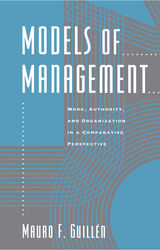 Models of Management: Work, Authority, and Organization in a Comparative Perspective
Mauro F. Guillén
University of Chicago Press, 1994 In this book, Mauro F. Guillén explores differing historical patterns in the adoption of the three major models of organizational management: scientific management, human relations, and structural analysis. Moving beyond Reinhard Bendix's classic Work and Authority, Models of Management takes a fresh look at how managers have used these models in four countries during the twentieth century.
Guillén's study of two liberal-democratic societies (the United States and Great Britain) and two corporatist societies (Germany and Spain) reveals significant differences in the way managerial elites and firms have adopted the three models. His data show that ideas themselves—independent of material interests and technology—can cause organizational change. Throughout the book, contrasts between modernist-technocratic and liberal-humanist mentalities, as well as between Protestant and Catholic religious backgrounds, emerge as decisive factors in determining managerial ideology and practice.
In addition to analyzing management methods in organizations, Guillén explores larger issues: the interaction among managerial, government, and labor elites; the impact of the state and the professions on managerial behavior; and the role that managers play in modern societies.
Models Of Nature: Ecology, Conservation, and Cultural Revolution in Soviet Russia
Douglas R. Weiner
University of Pittsburgh Press, 2000 Models of Nature studies the early and turbulent years of the Soviet conservation movement from the October Revolution to the mid-1930s—Lenin’s rule to the rise of Stalin. This new edition includes an afterword by the author that reflects upon the study's impact and discusses advances in the field since the book was first published.
Models of Strategic Choice in Politics
Peter C. Ordeshook, Editor
University of Michigan Press, 1989 Discusses the sophisticated application of game theory to the development of contemporary political theory
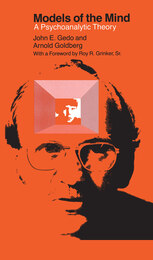 Models of the Mind: A Psychoanalytic Theory
John E. Gedo and Arnold Goldberg
University of Chicago Press, 1976 In an effort to expand the clinical theory of psychoanalysis, John E. Gedo and Arnold Goldberg delineate and order the various generally accepted systems of psychological functioning, considered here as "models of the mind." The authors provide a historical review of four major models of the mind: the topographic model, the reflex arc model, the tripartite model, and an object relations model. They then investigate the possible hierarchical interrelationships of such models. Each model is shown to represent a different facet of mental functioning and is thus employable on an ad hoc basis. The models are shown not to cancel on another out but to allow for theoretical complementarity.
Gedo and Goldberg apply their theory to four classic psychoanalytic case studies to demonstrate its effectiveness: Freud's Rat Man, his Wolf Man, the case of Daniel Paul Schreber, and a case of arrested development. For each of these cases the authors show how it would have been both possible and advantageous to apply a variety of different theories as facts about each continued to accumulate.
 Models of Value: Eighteenth-Century Political Economy and the Novel
James Thompson
Duke University Press, 1996 James Thompson examines the concept of value as it came to be understood in eighteenth-century England through two emerging and divergent discourses: political economy and the novel. By looking at the relationship between these two developing forms—one having to do with finance, the other with romance—Thompson demonstrates how value came to have such different meaning in different realms of experience. A highly original rethinking of the origins of the English novel, Models of Value shows the novel’s importance in remapping English culture according to the separate spheres of public and domestic life, men’s and women’s concerns, money and emotion.
In this account, political economy and the novel clearly arise as solutions to a crisis in the notion of value. Exploring the ways in which these different genres responded to the crisis—political economy by reconceptualizing wealth as capital, and the novel by refiguring intrinsic or human worth in the form of courtship narratives—Thompson rereads several literary works, including Defoe’s Roxana, Fielding’s Tom Jones, and Burney’s Cecilia, along with influential contemporary economic texts. Models of Value also traces the discursive consequences of this bifurcation of value, and reveals how history and theory participate in the very novelistic and economic processes they describe. In doing so, the book bridges the opposition between the interests of Marxism and feminism, and the distinctions which, newly made in the eighteenth century, continue to inform our discourse today.
An important reformulation of the literary and cultural production of the eighteenth century, Models of Value will attract students of the novel, political economy, and of literary history and theory.
Modelscapes of Nationalism: Collective Memories and Future Visions
Yael Padan
Amsterdam University Press, 2017 Modelscapes are clusters of miniature architectural models that represent entire environments. They're frequently found in museums as representations of heritage, architecture, and collective identity. This book offers a critical analysis of modelscapes, using case studies from Israel, to show how miniature representations of contested physical space participate in the construction of a sense of national identity and appropriation of the land and its history. What, Yael Padan asks, is the meaning of such models, and what role do they play within the context of an ongoing violent conflict over territory and history?
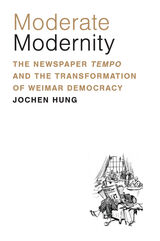 Moderate Modernity: The Newspaper Tempo and the Transformation of Weimar Democracy
Jochen Hung
University of Michigan Press, 2023 Focusing on the fate of a Berlin-based newspaper during the 1920s and 1930s, Moderate Modernity: The Newspaper Tempo and the Transformation of Weimar Democracy chronicles the transformation of a vibrant and liberal society into an oppressive and authoritarian dictatorship. Tempo proclaimed itself as “Germany’s most modern newspaper” and attempted to capture the spirit of Weimar Berlin, giving a voice to a forward-looking generation that had grown up under the Weimar Republic’s new democratic order. The newspaper celebrated modern technology, spectator sports, and American consumer products, constructing an optimistic vision of Germany’s future as a liberal consumer society anchored in Western values.
The newspaper’s idea of a modern, democratic Germany was undermined by the political and economic crises that hit Germany at the beginning of the 1930s. The way the newspaper described German democracy changed under these pressures. Flappers, American fridges, and modern music—the things that Tempo had once marshalled as representatives of a German future—were now rejected by the newspaper as emblems of a bygone age. The changes in Tempo’s vision of Germany’s future show that descriptions of Weimar politics as a standoff between upright democrats and rabid extremists do not do justice to the historical complexity of the period. Rather, we need to accept the Nazis as a lethal product of a German democracy itself. The history of Tempo teaches us how liberal democracies can create and nurture their own worst enemies.
|
|
